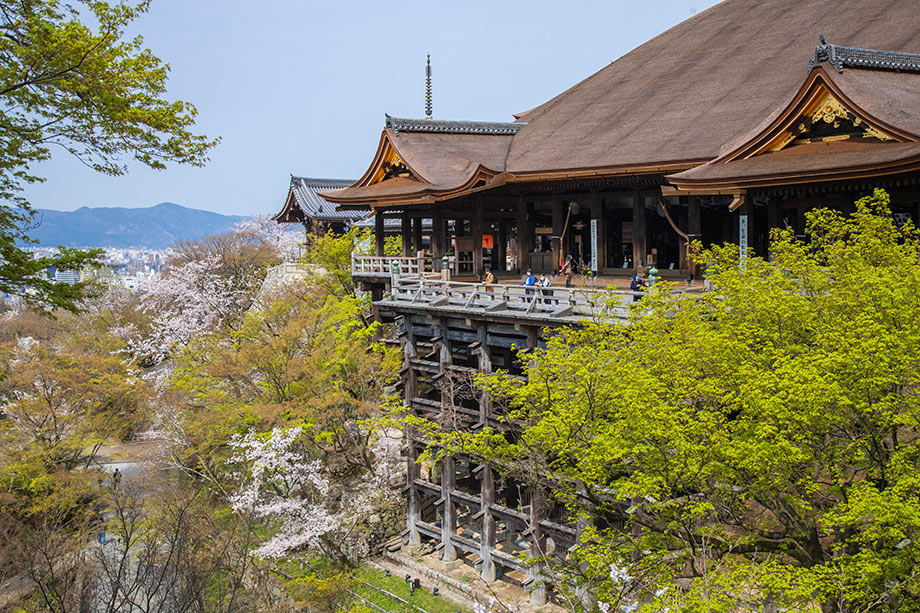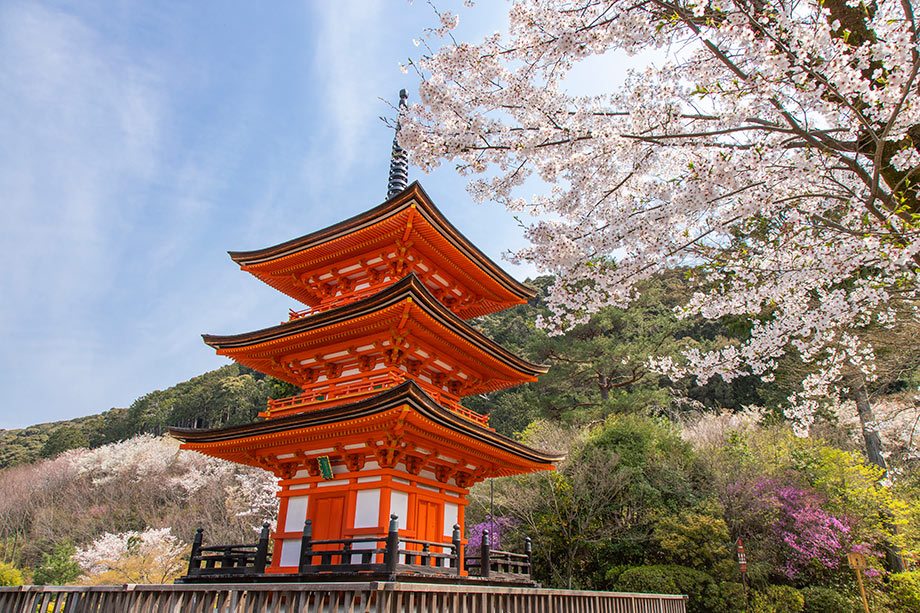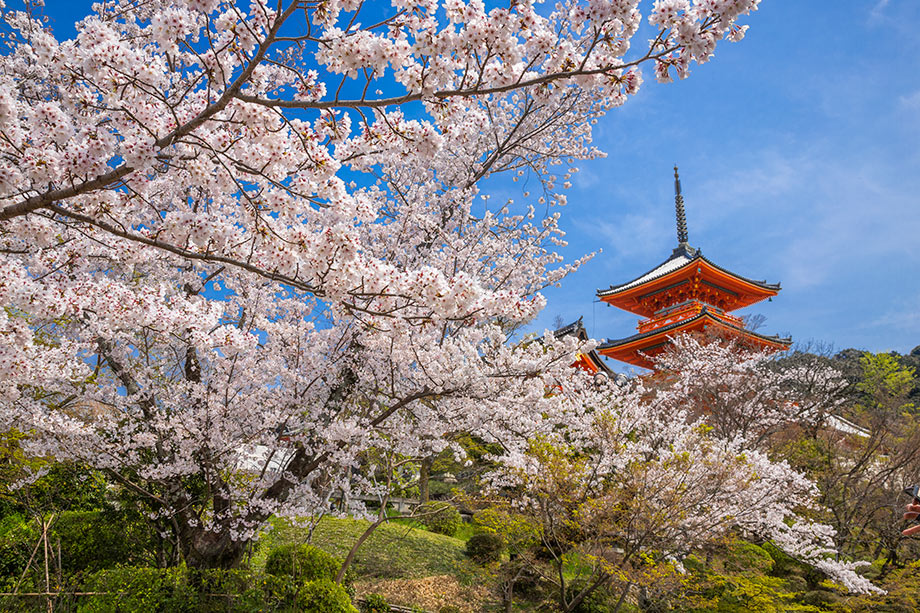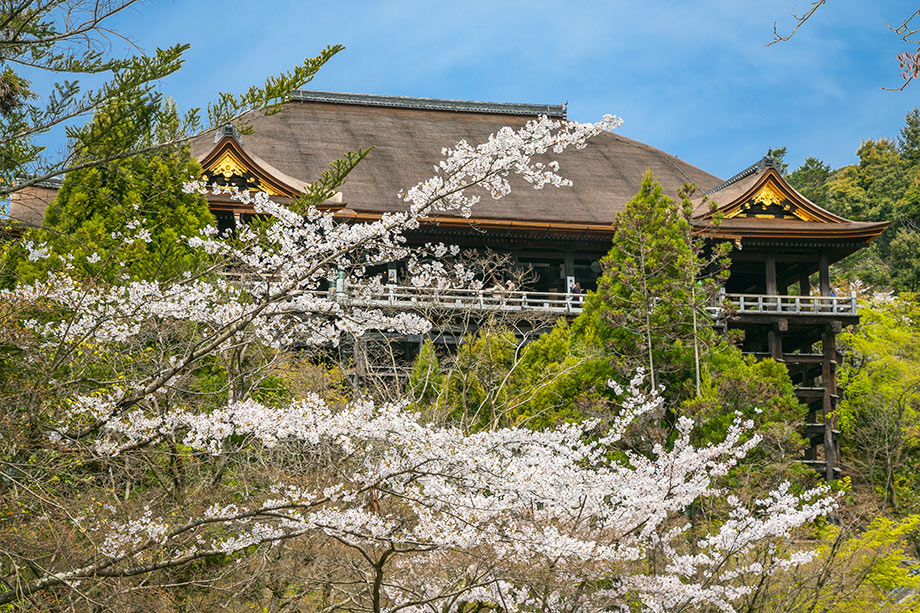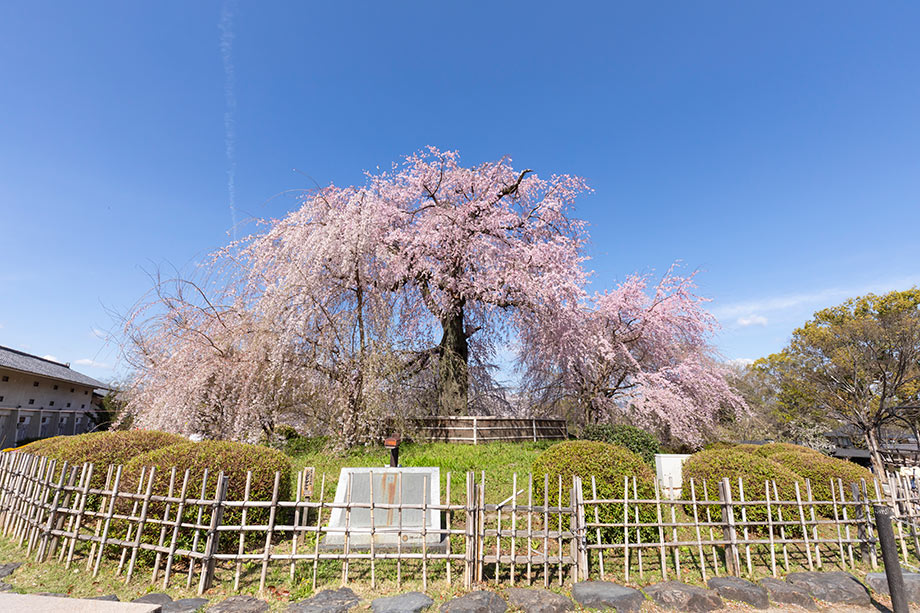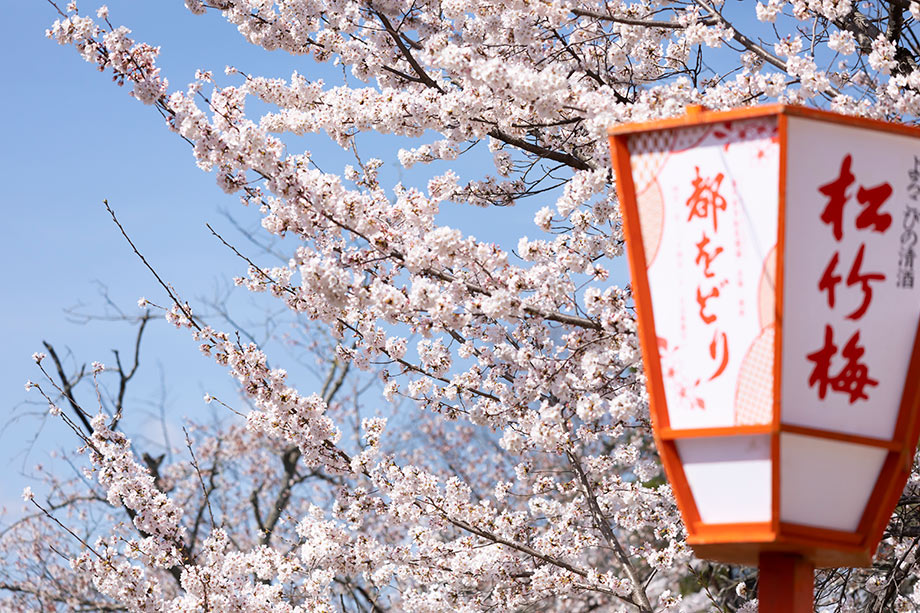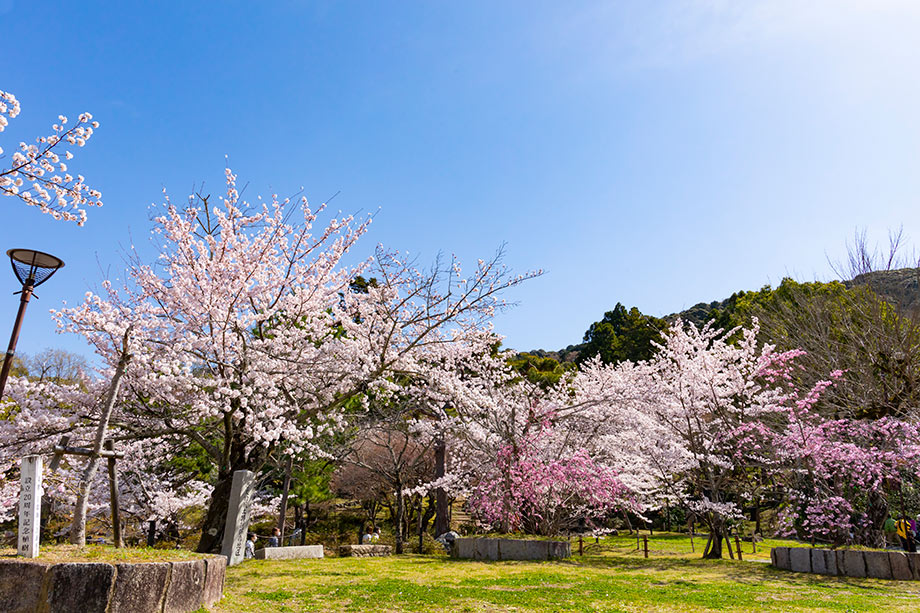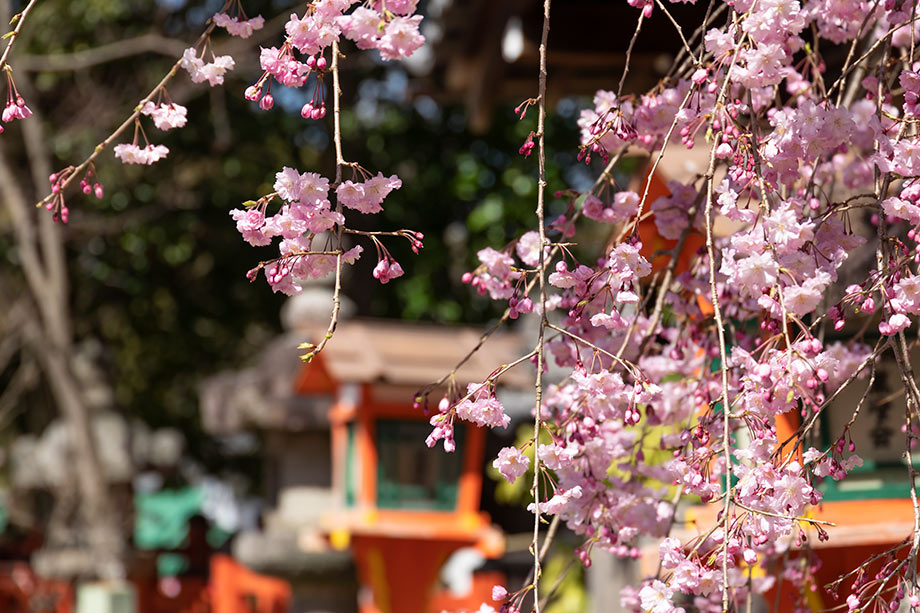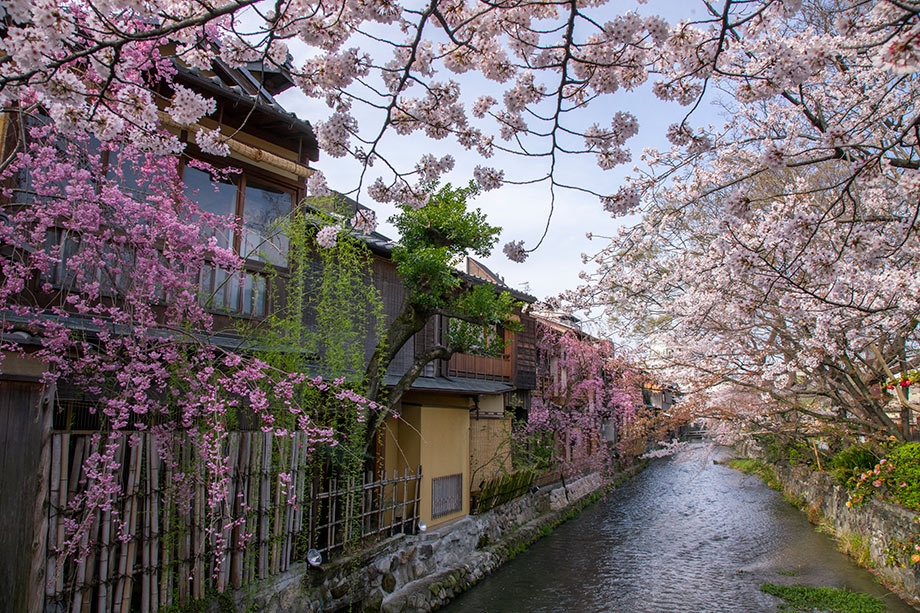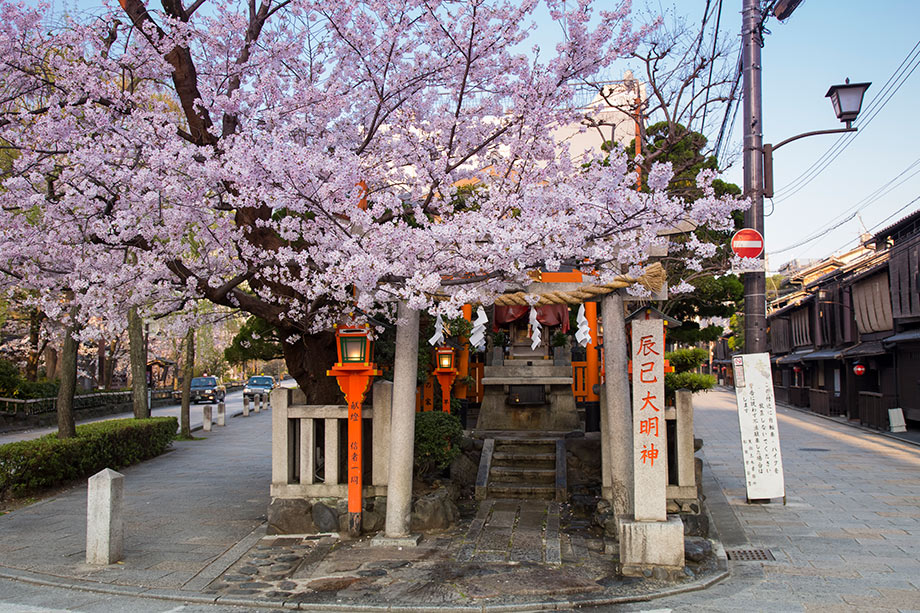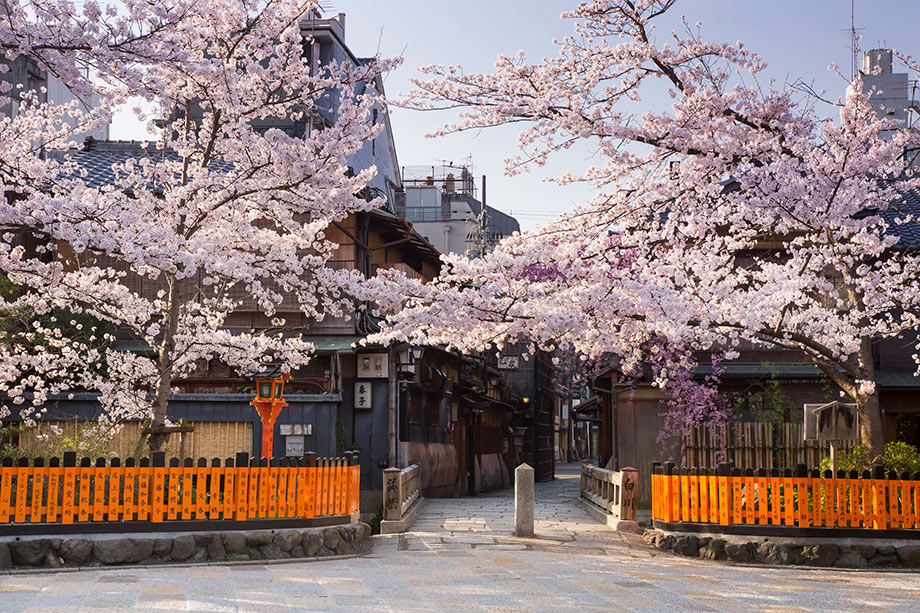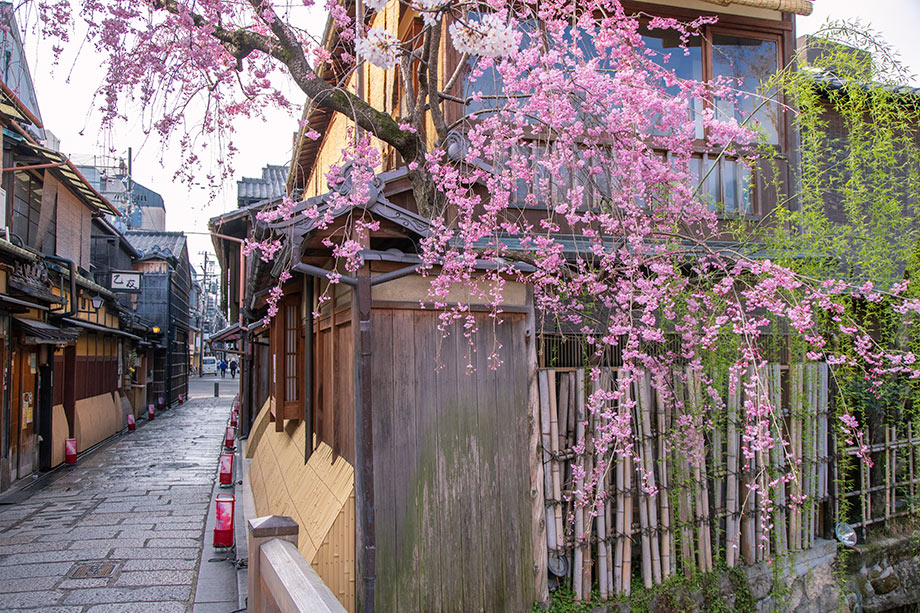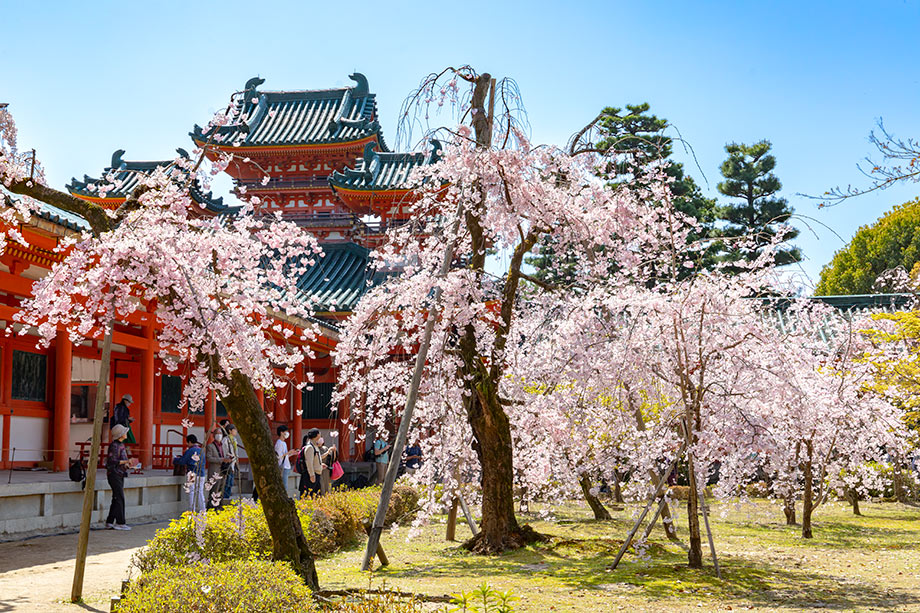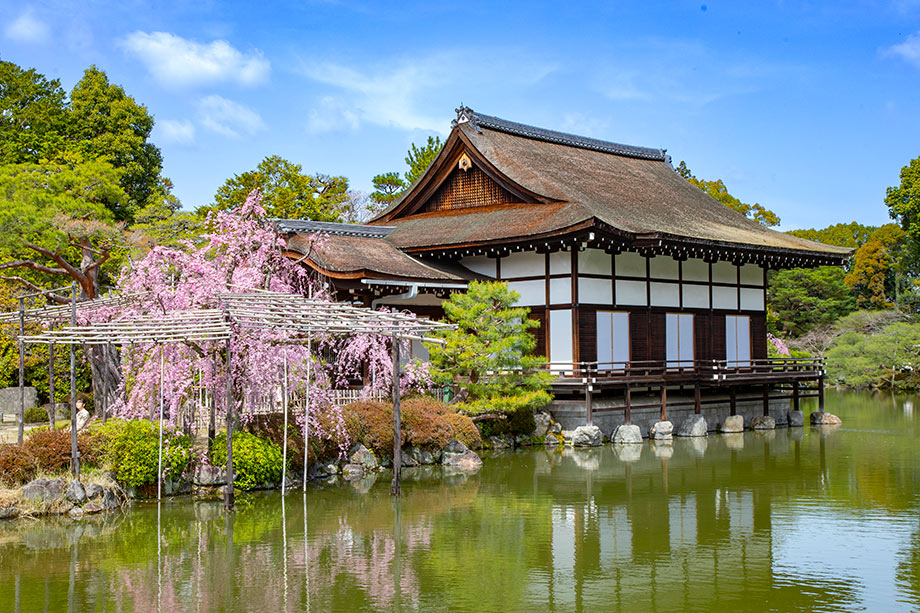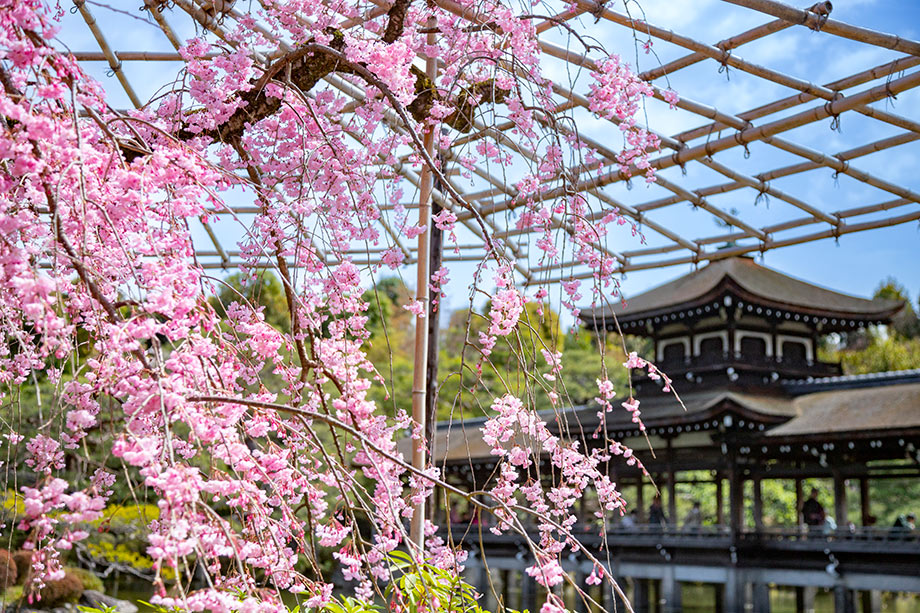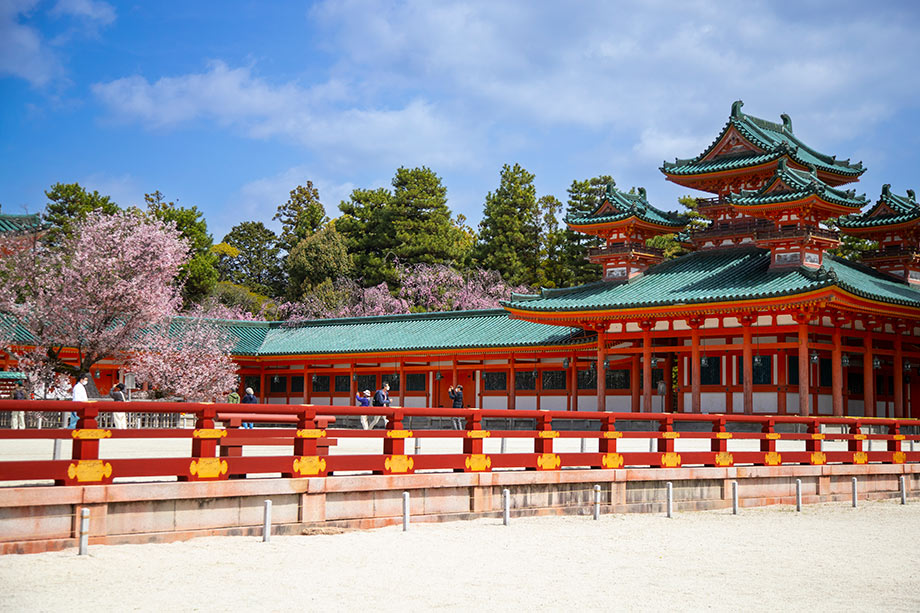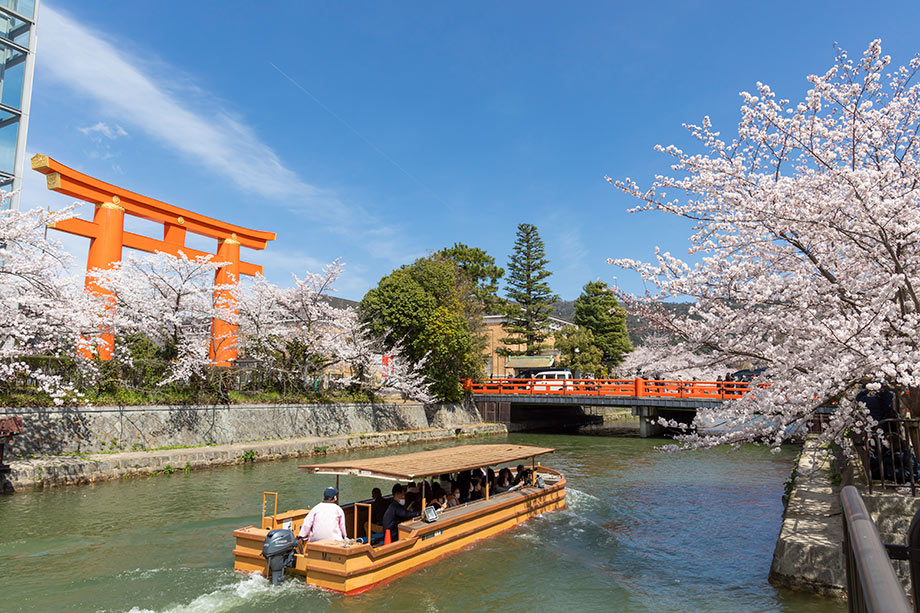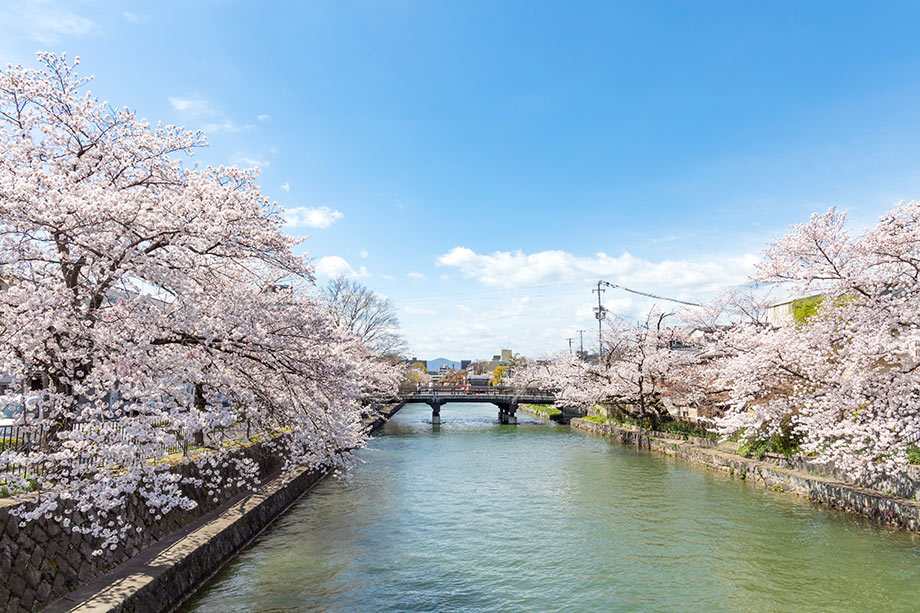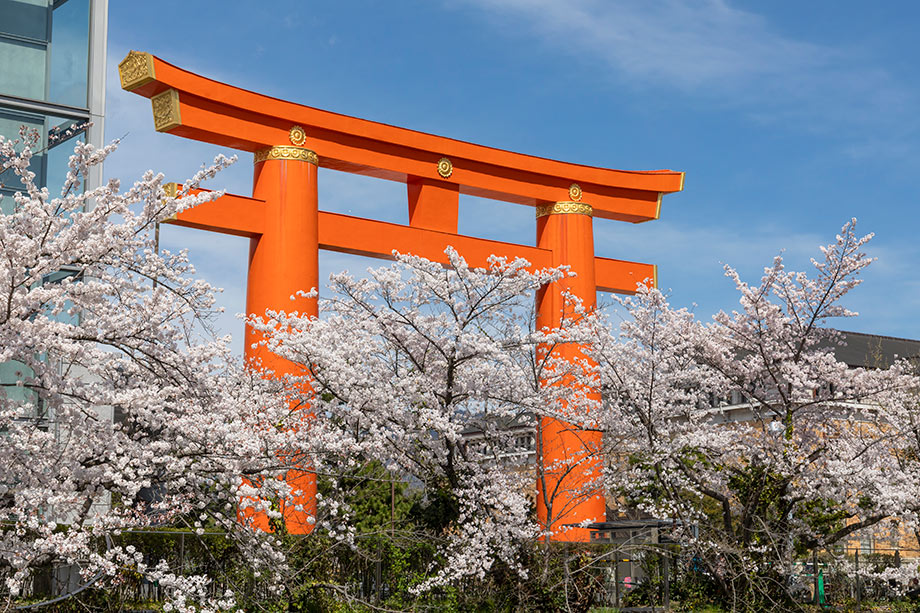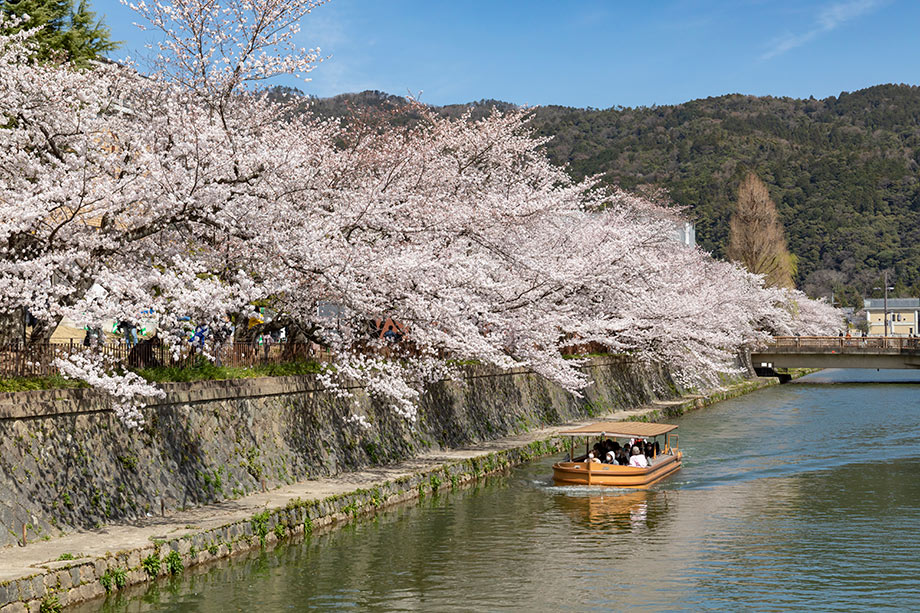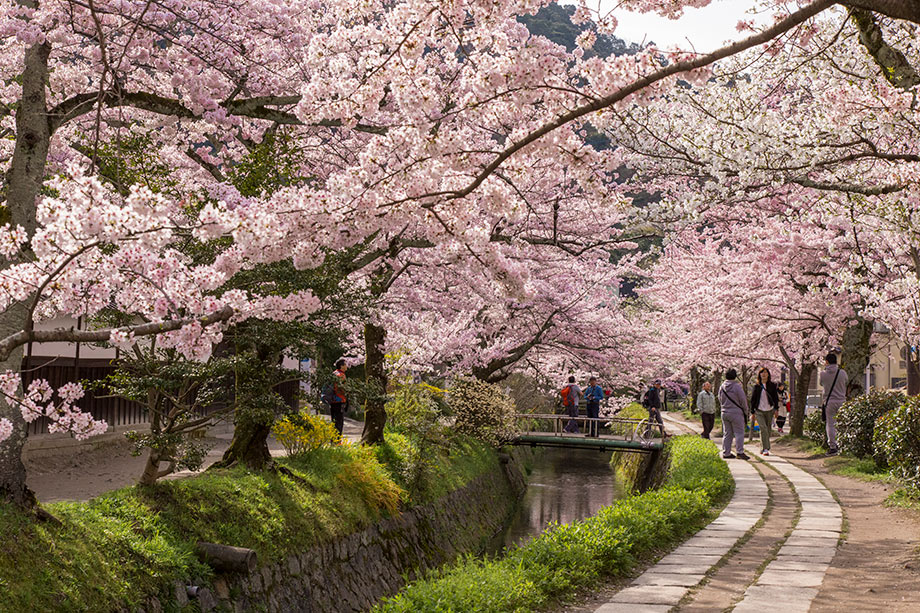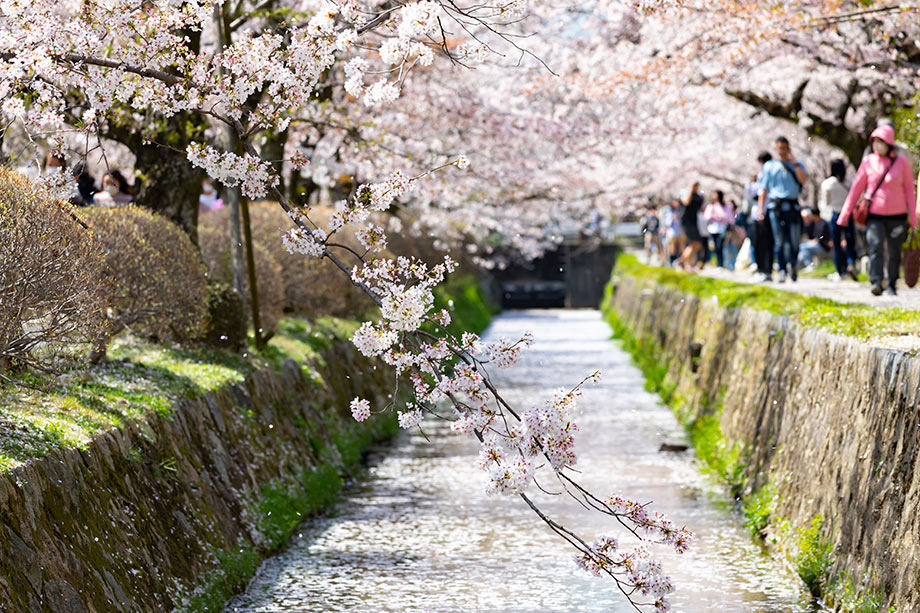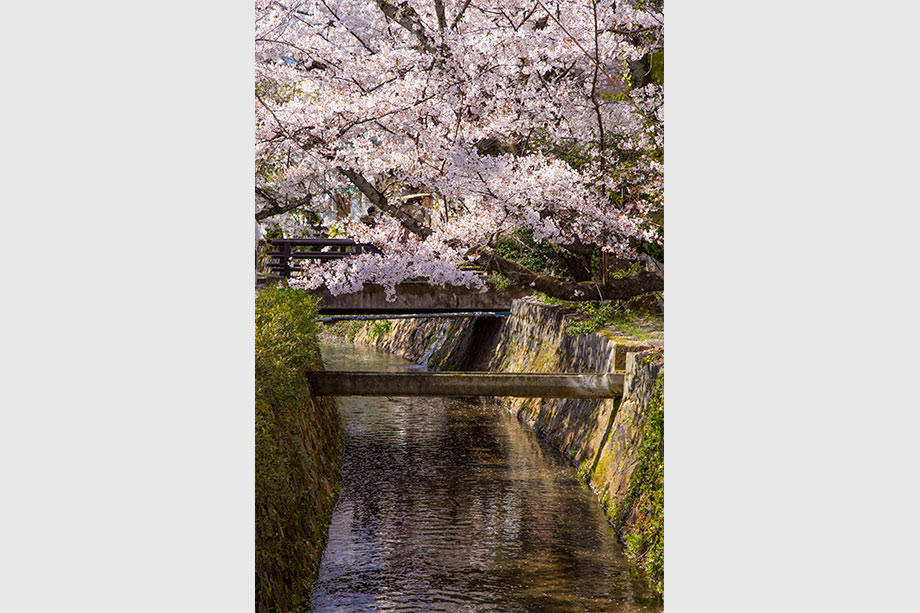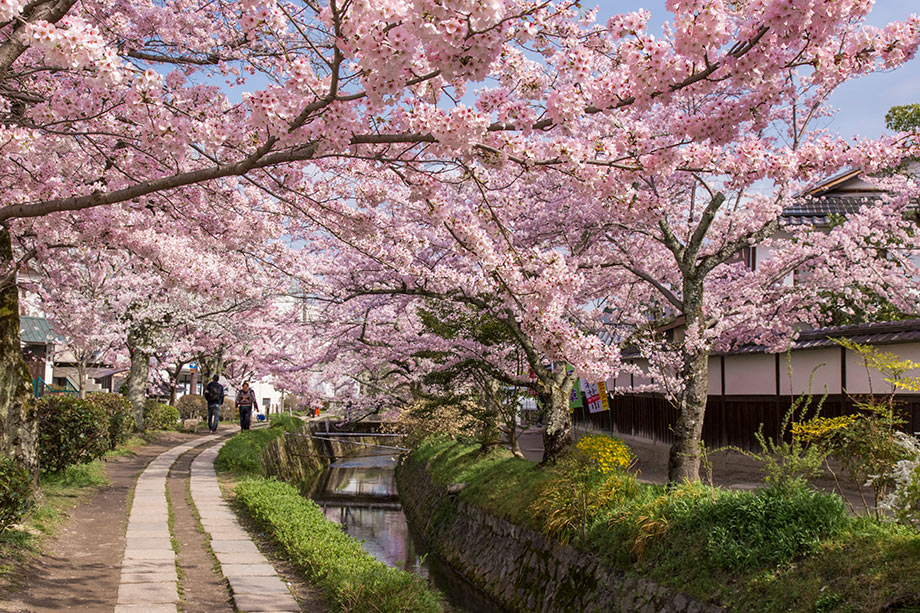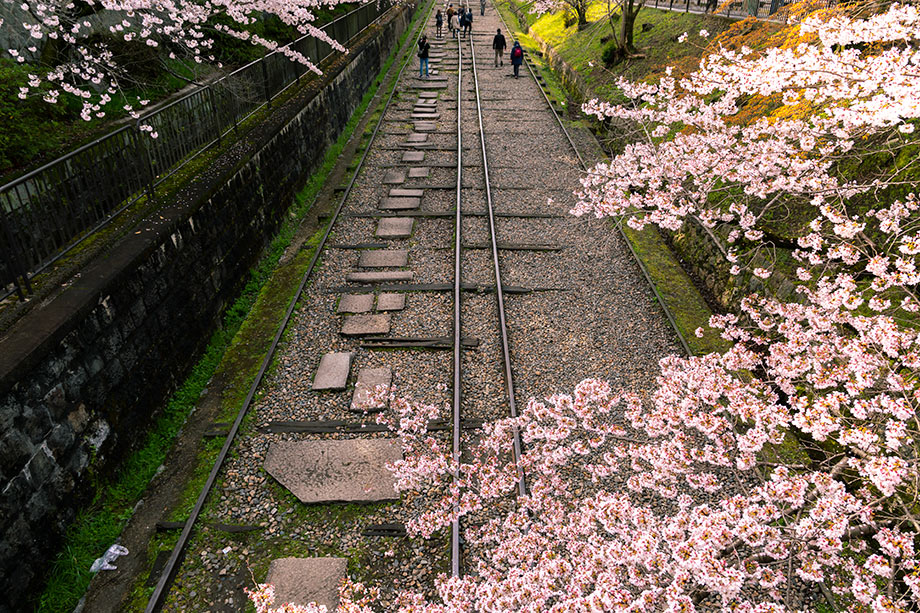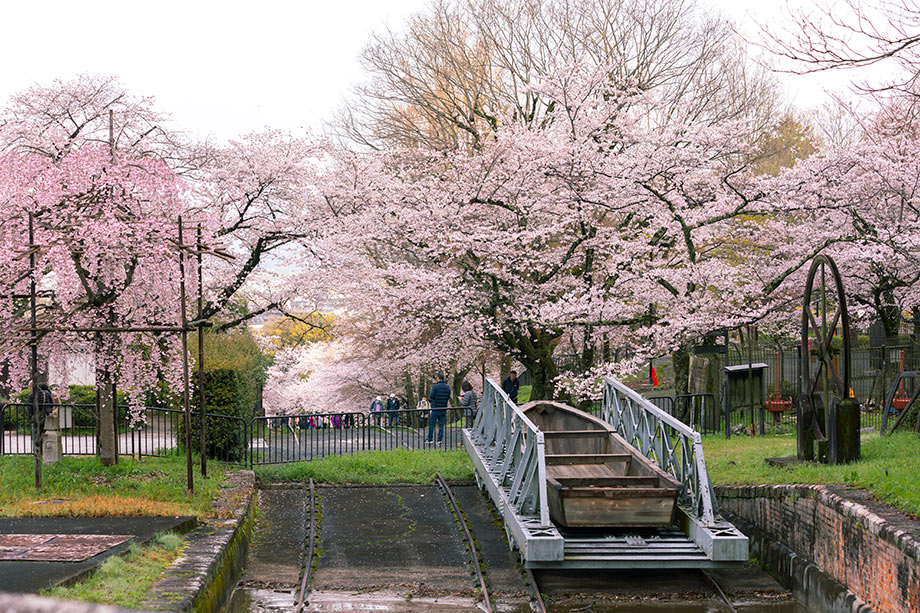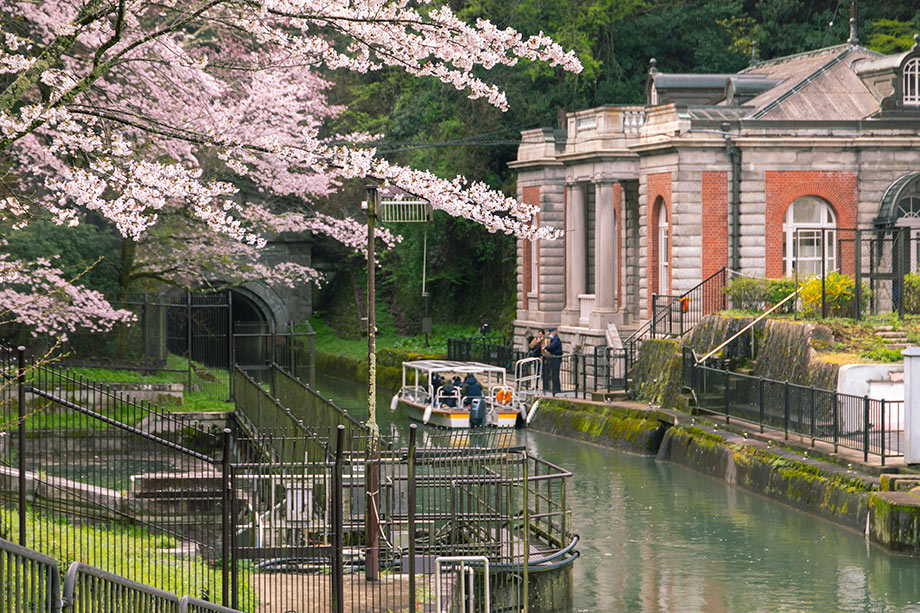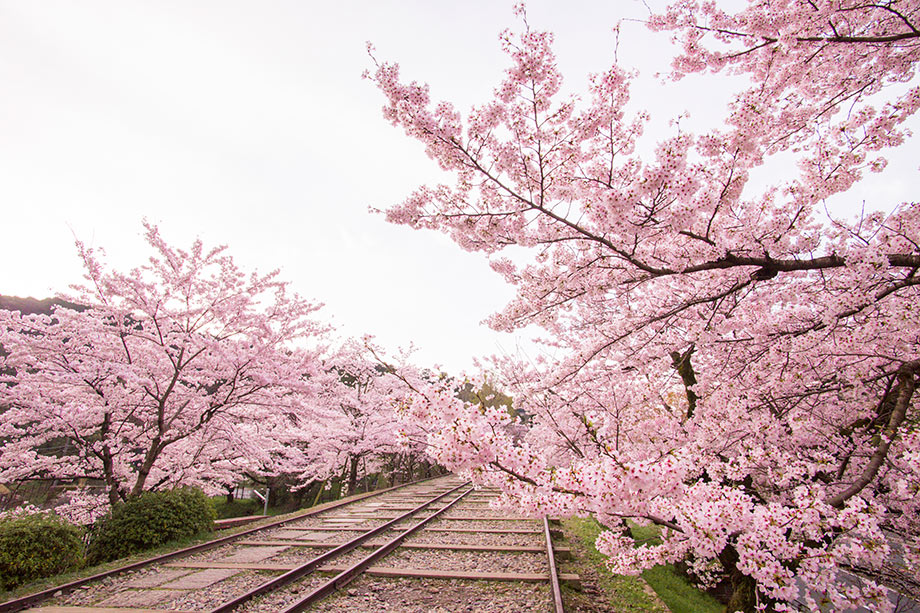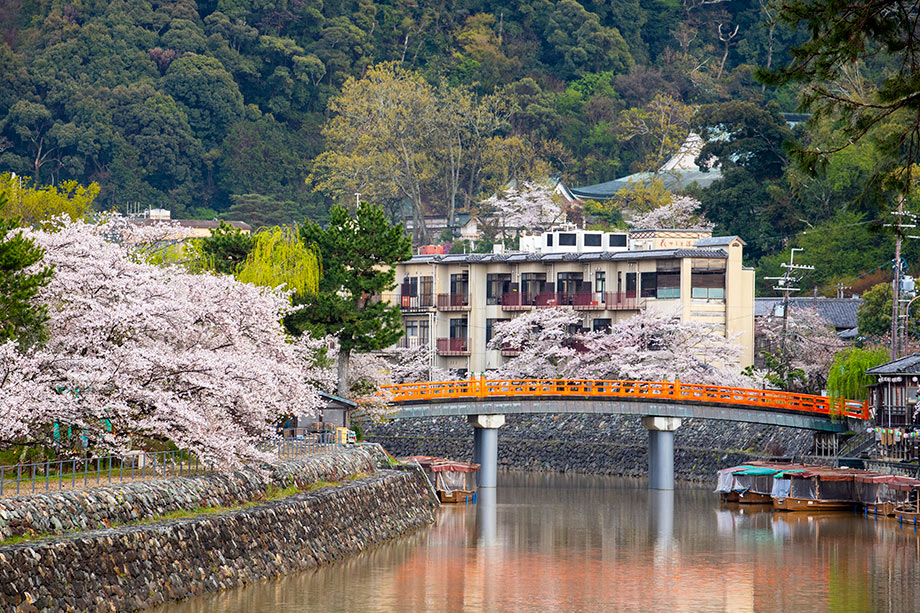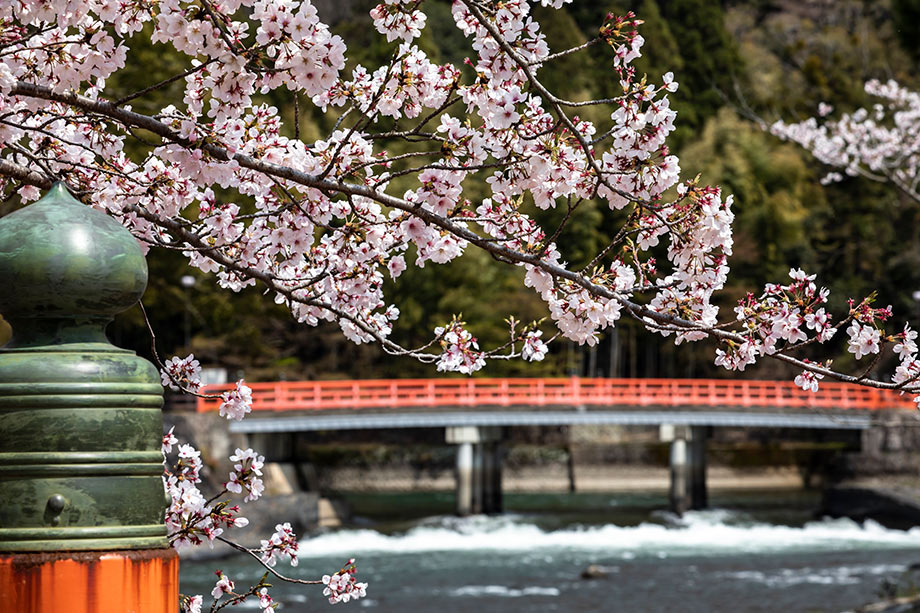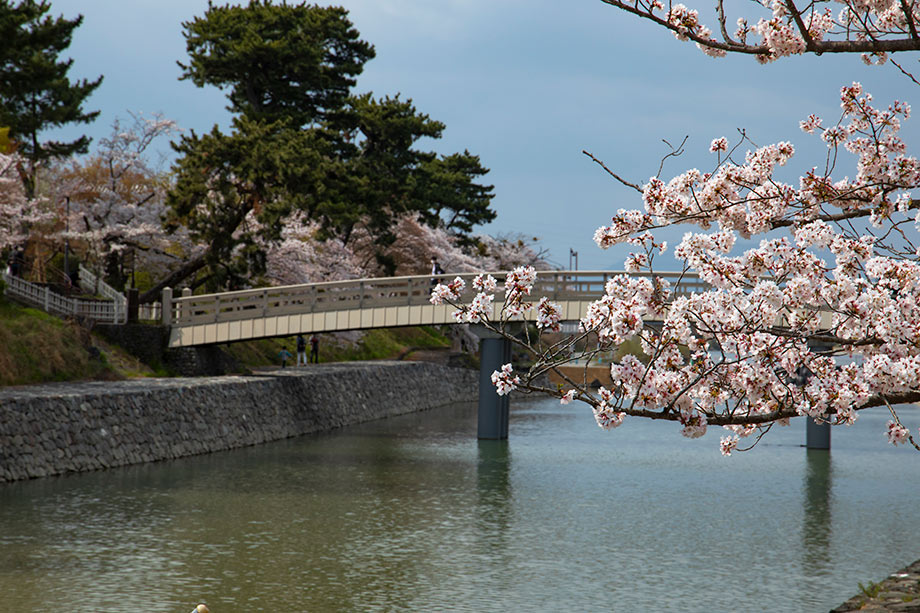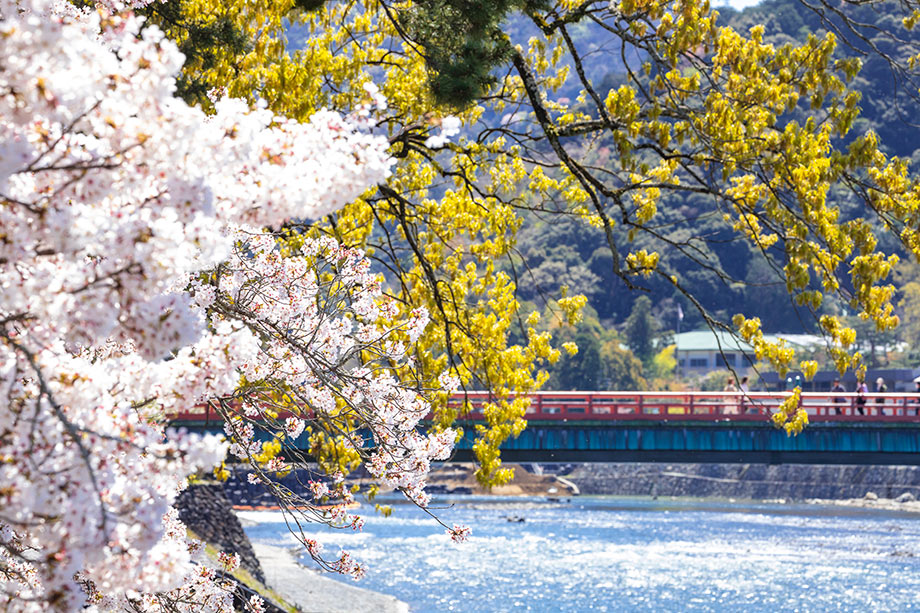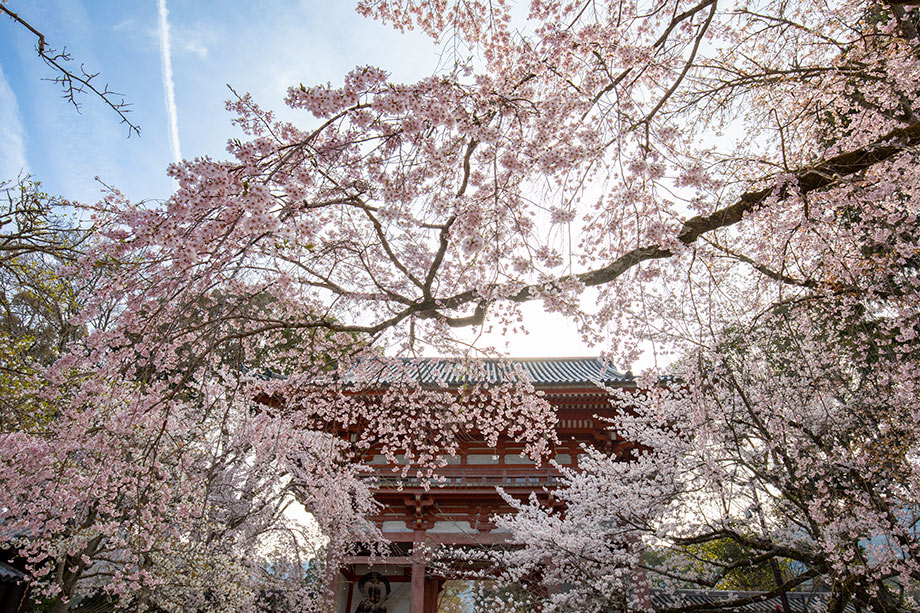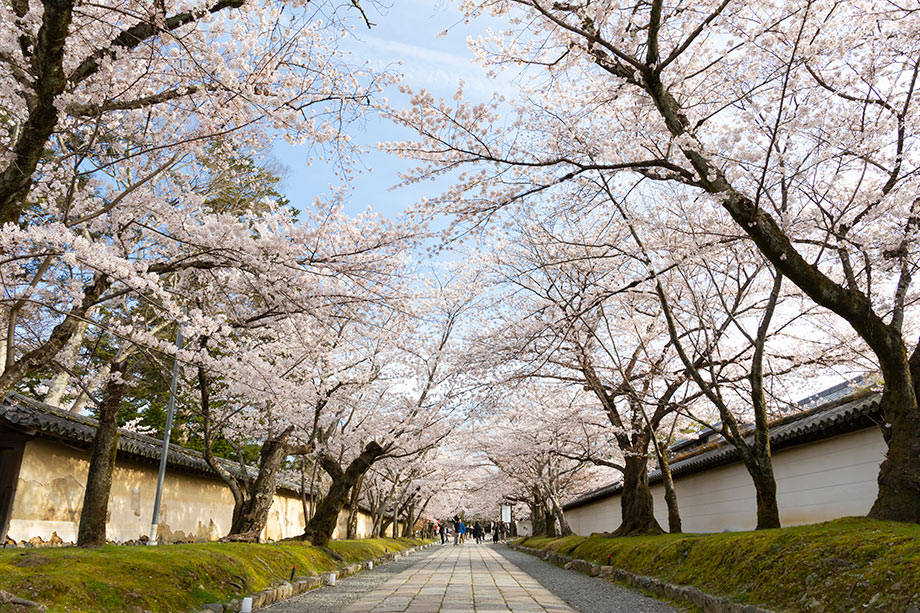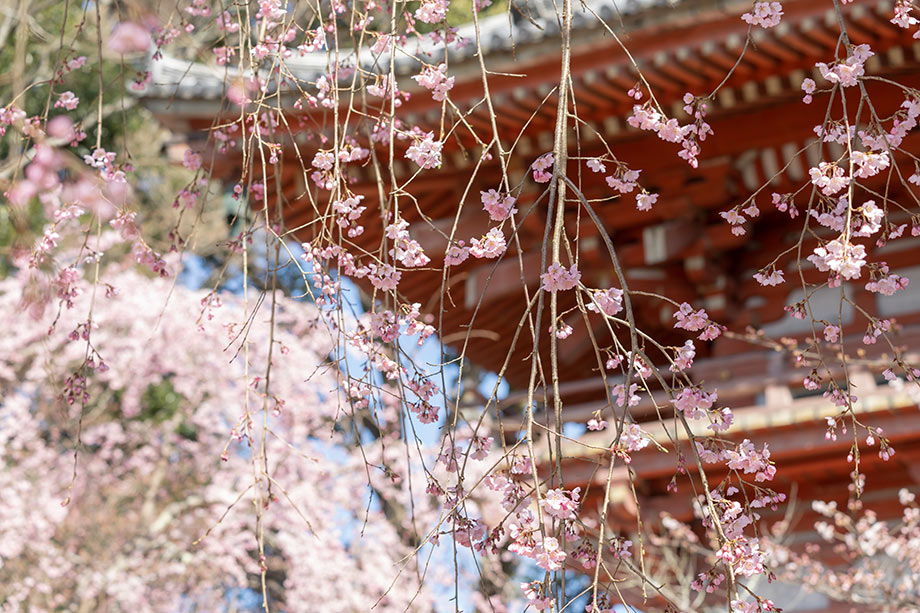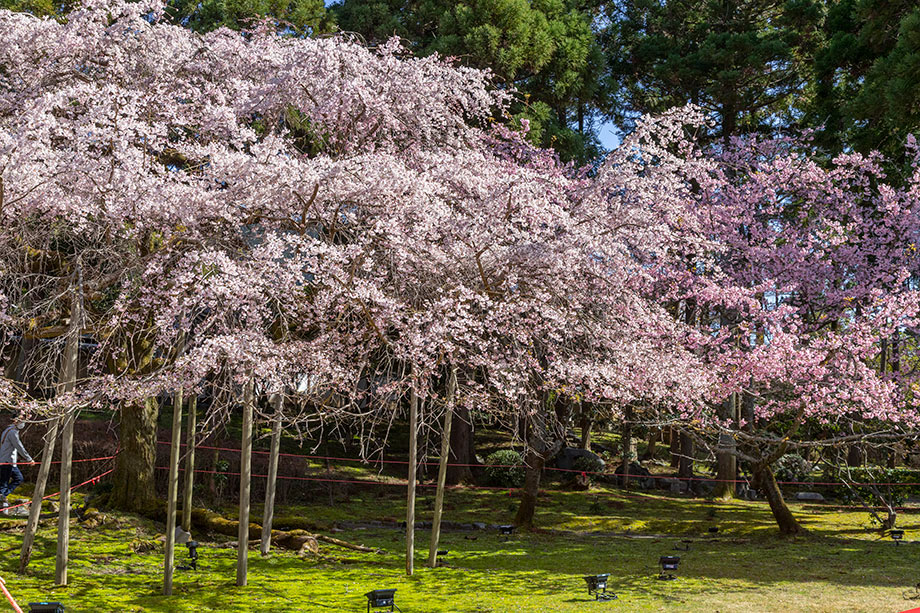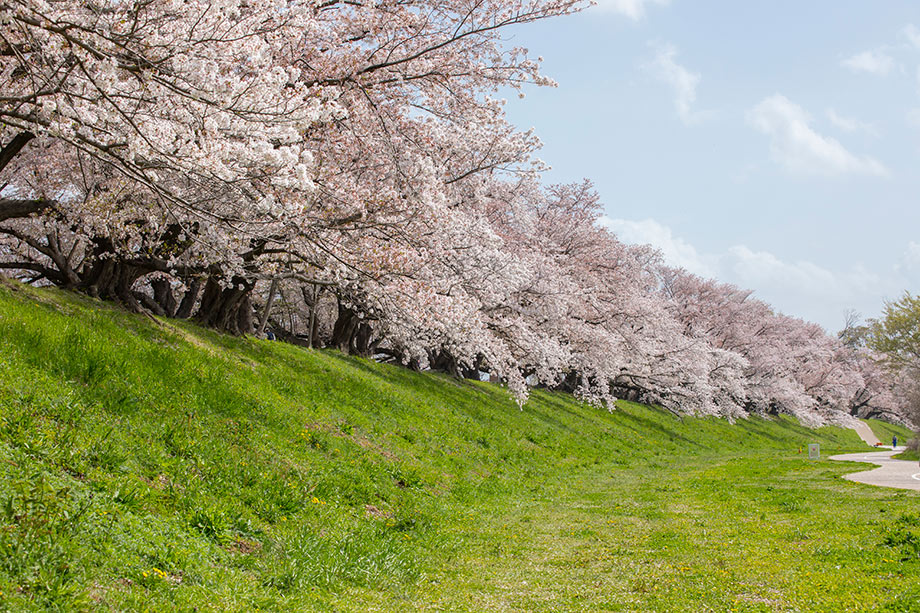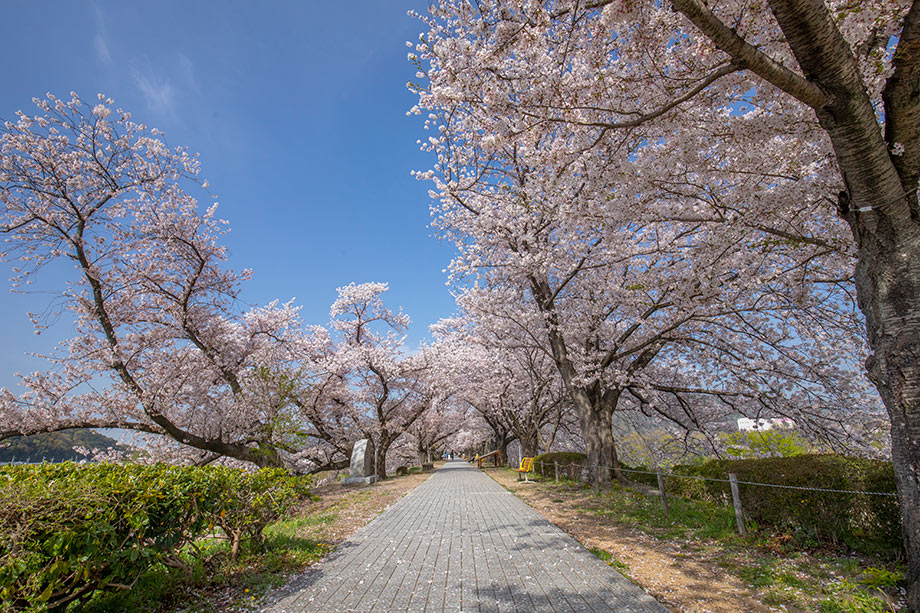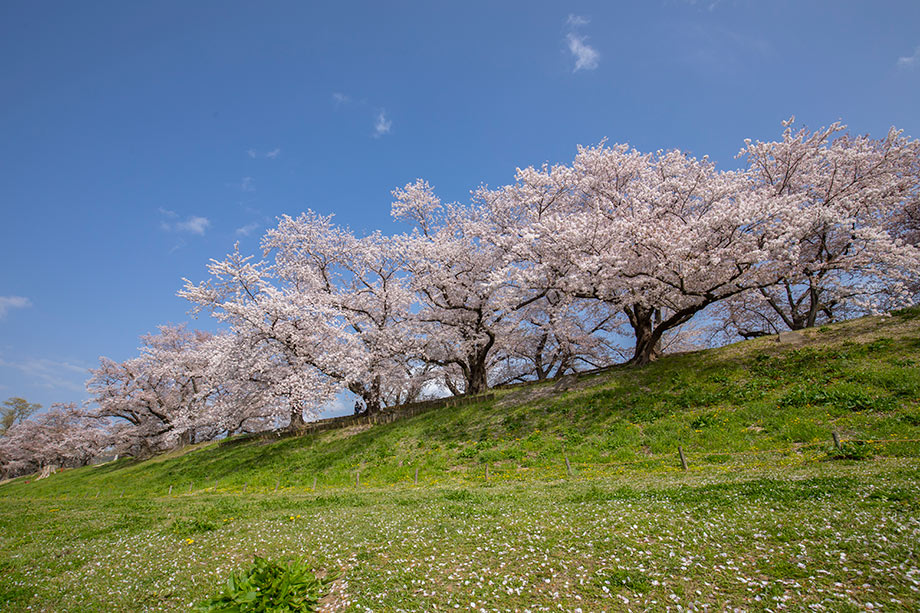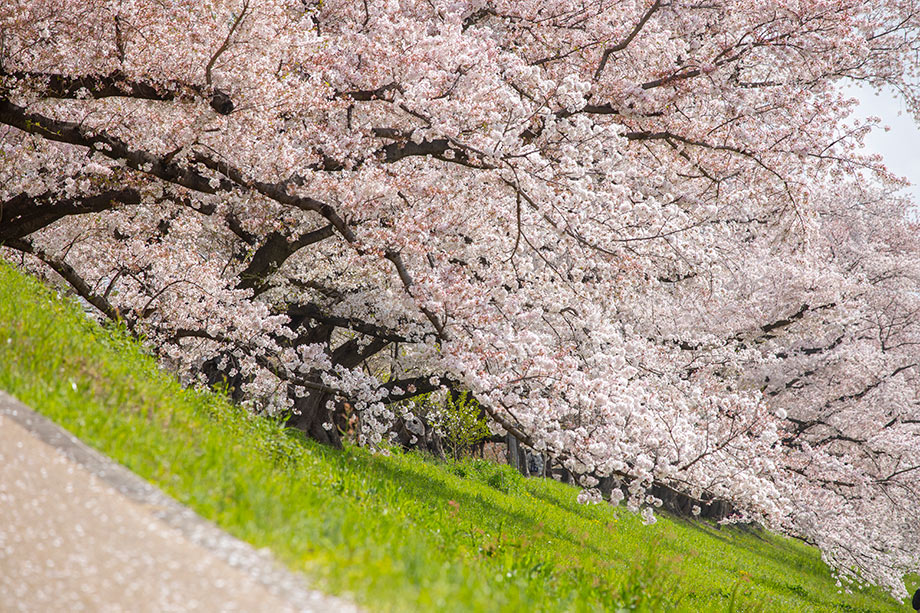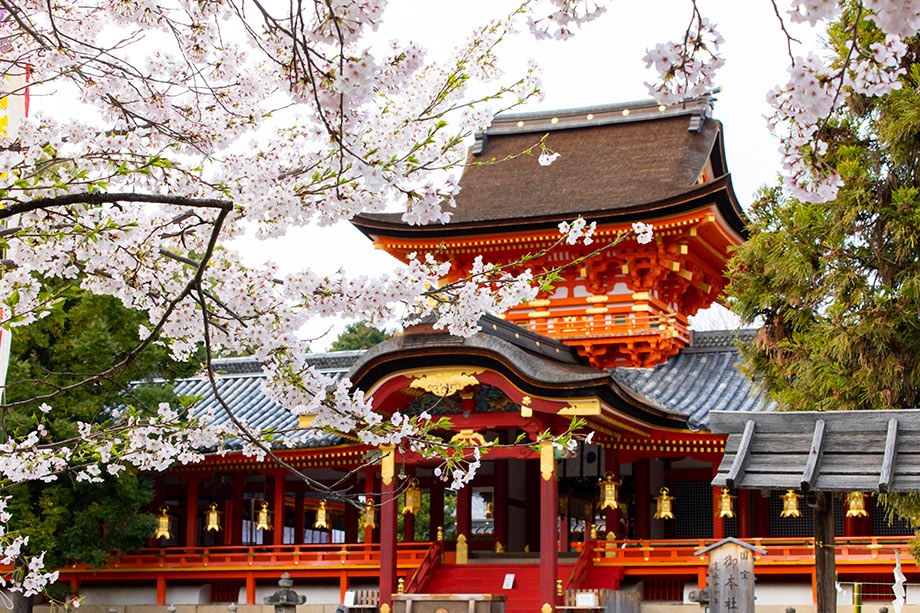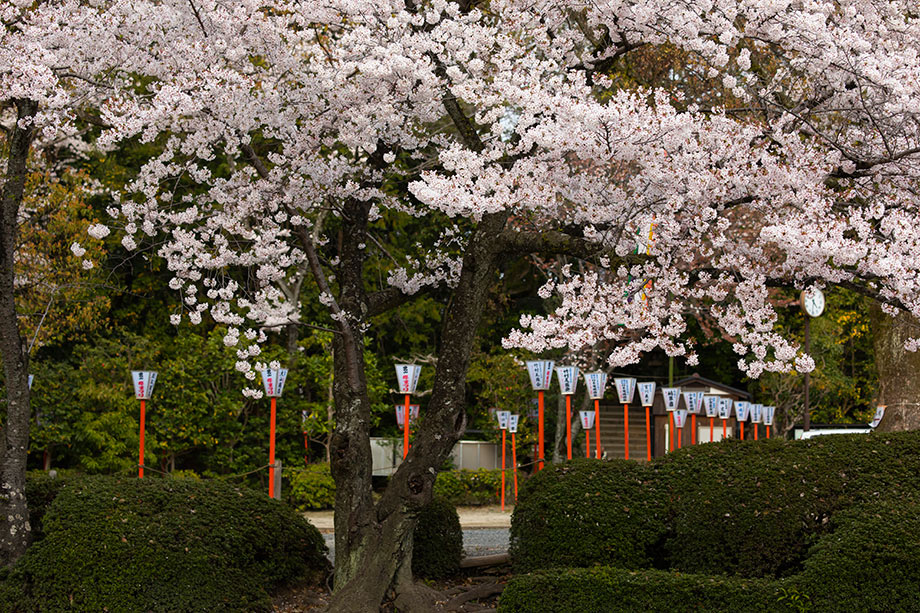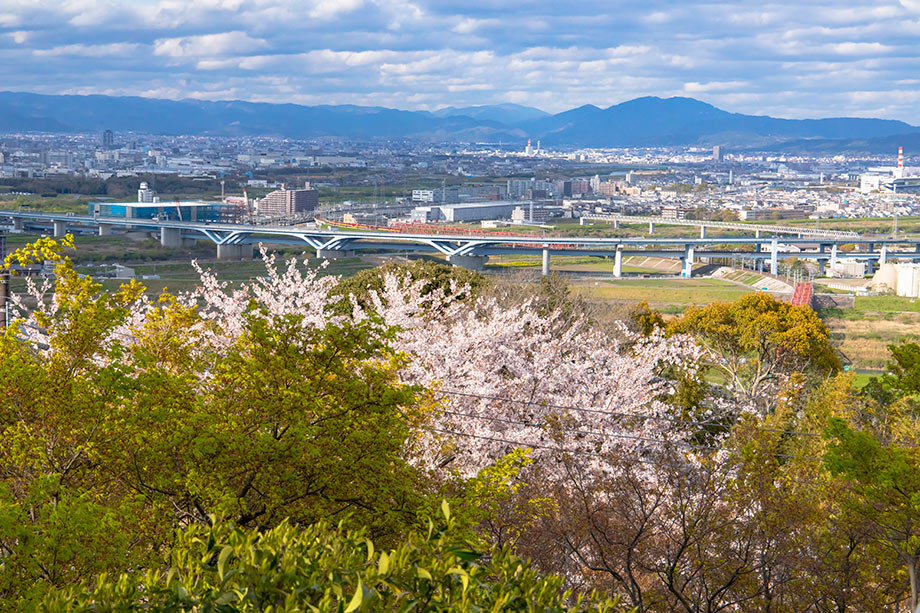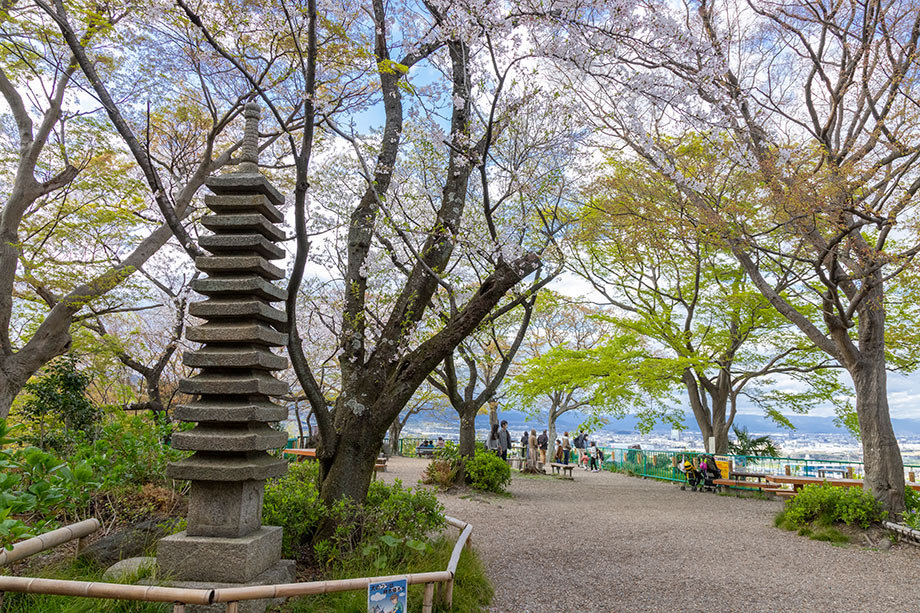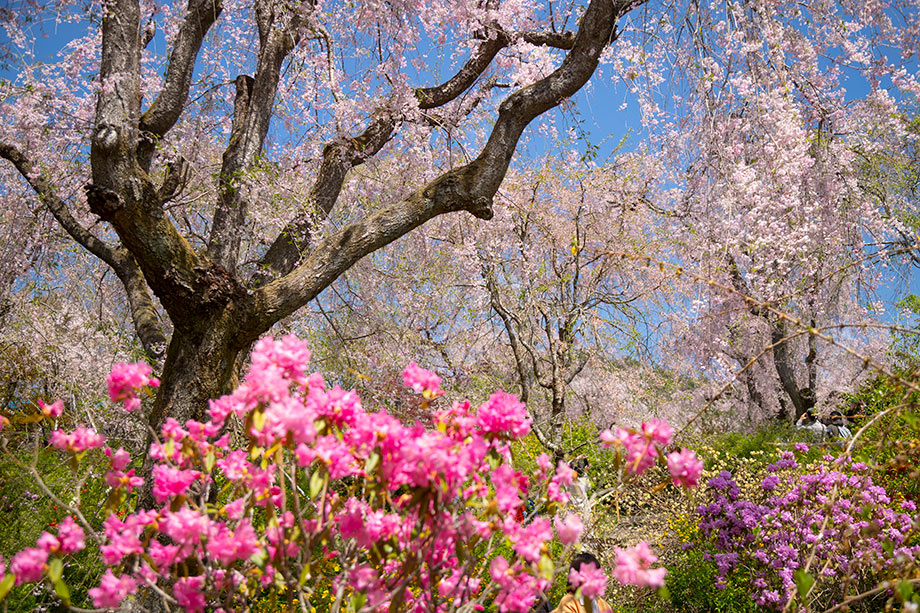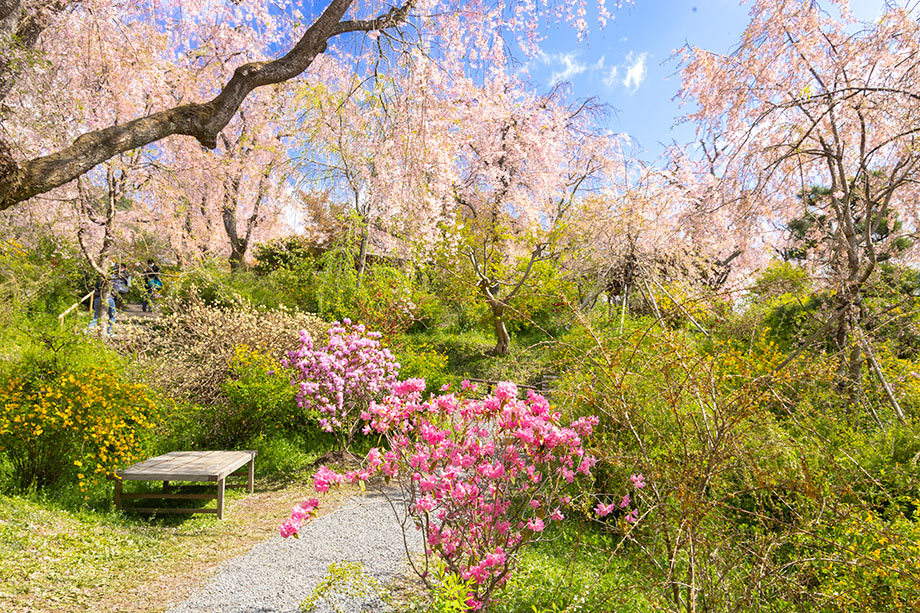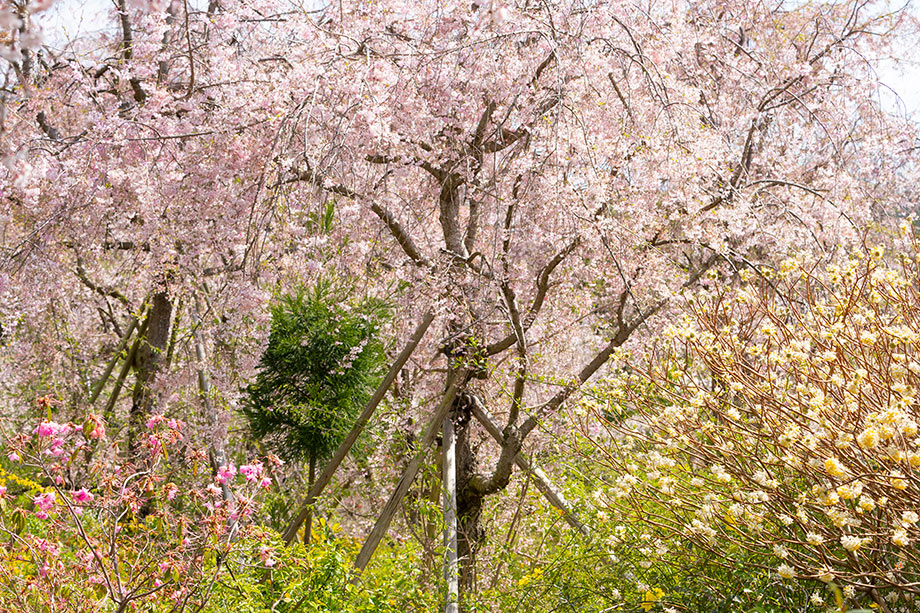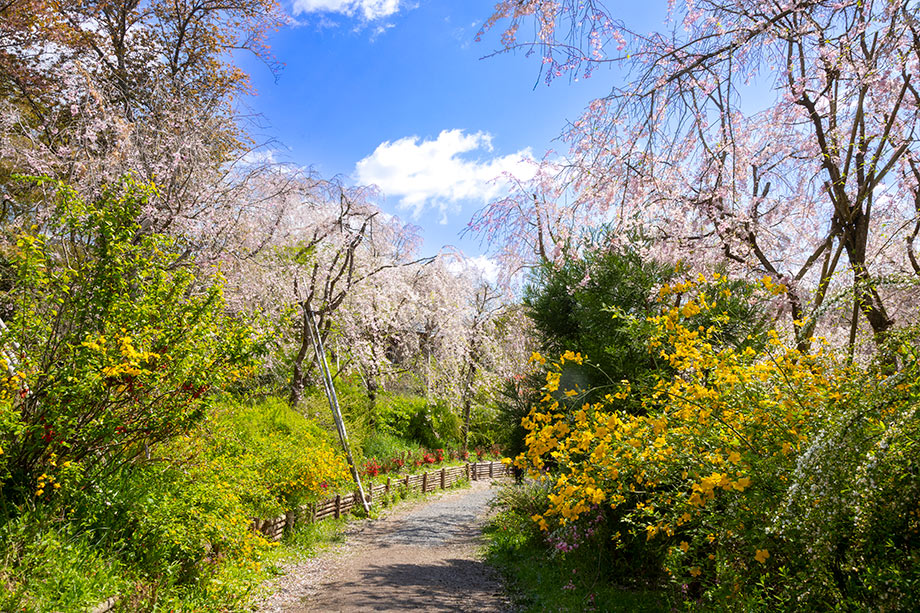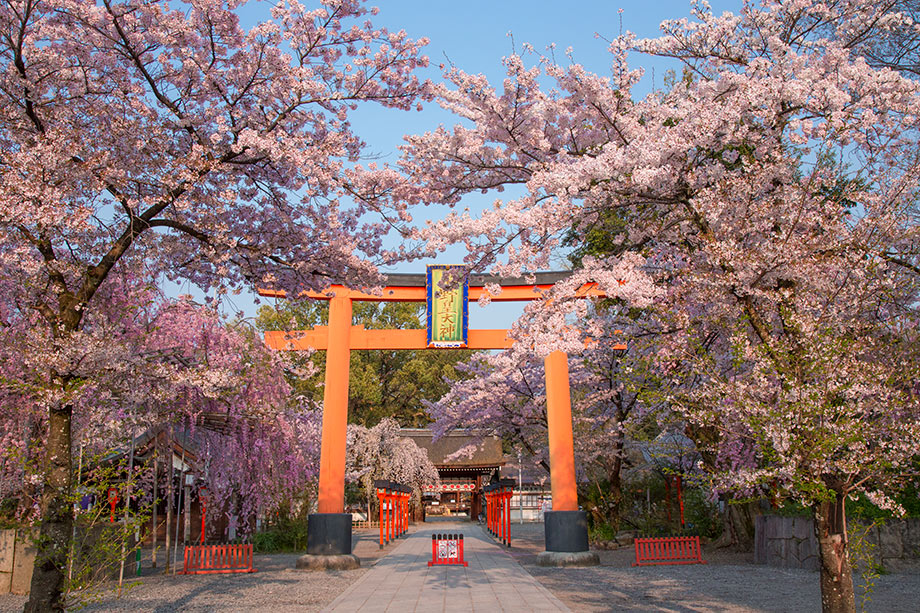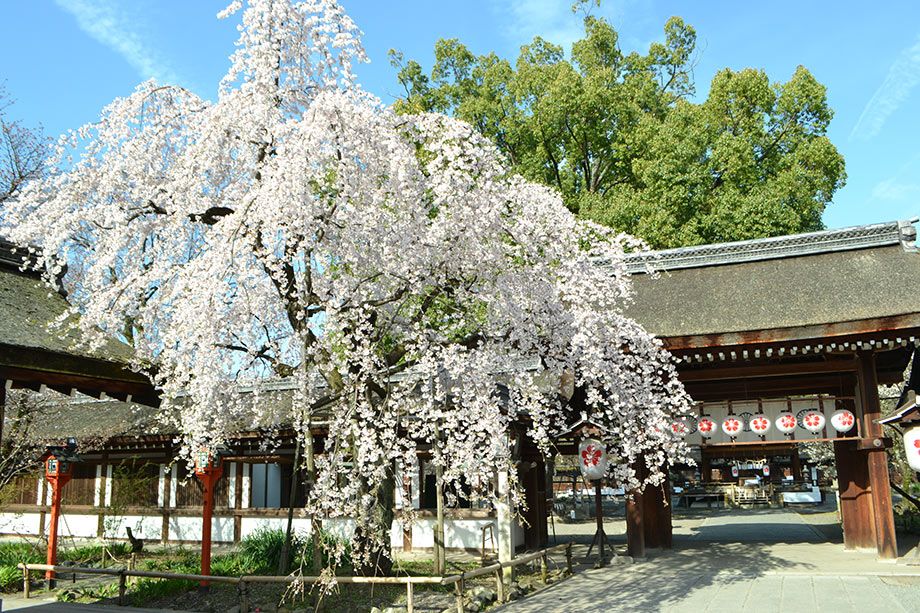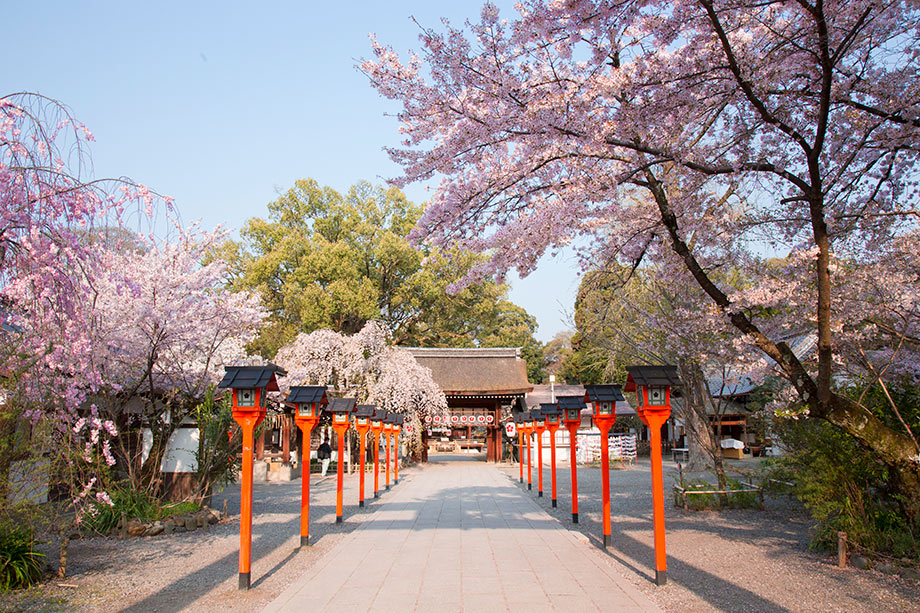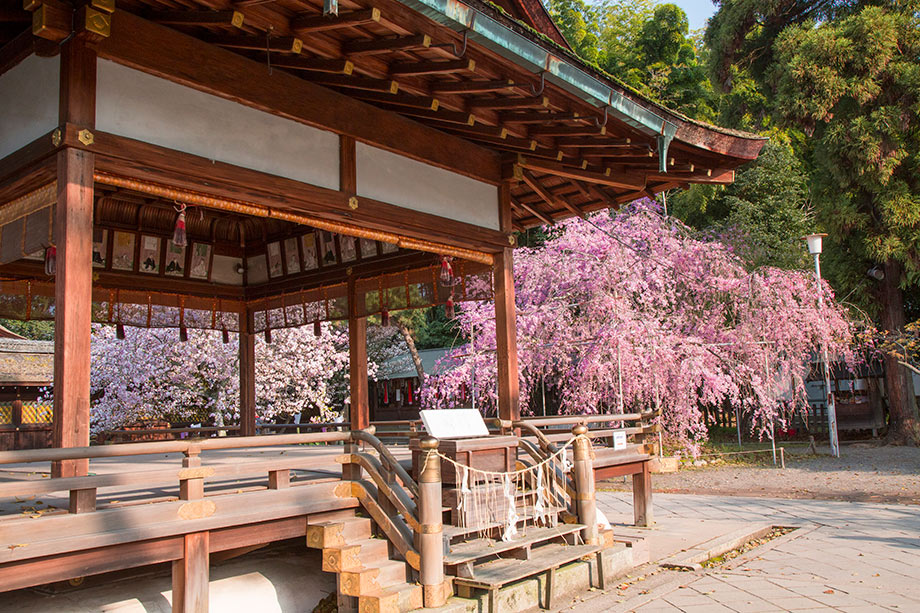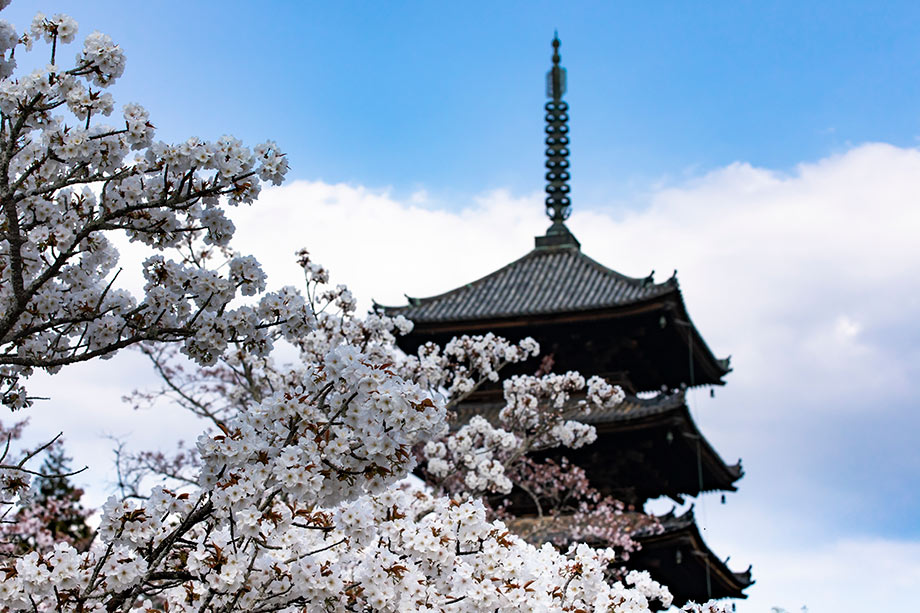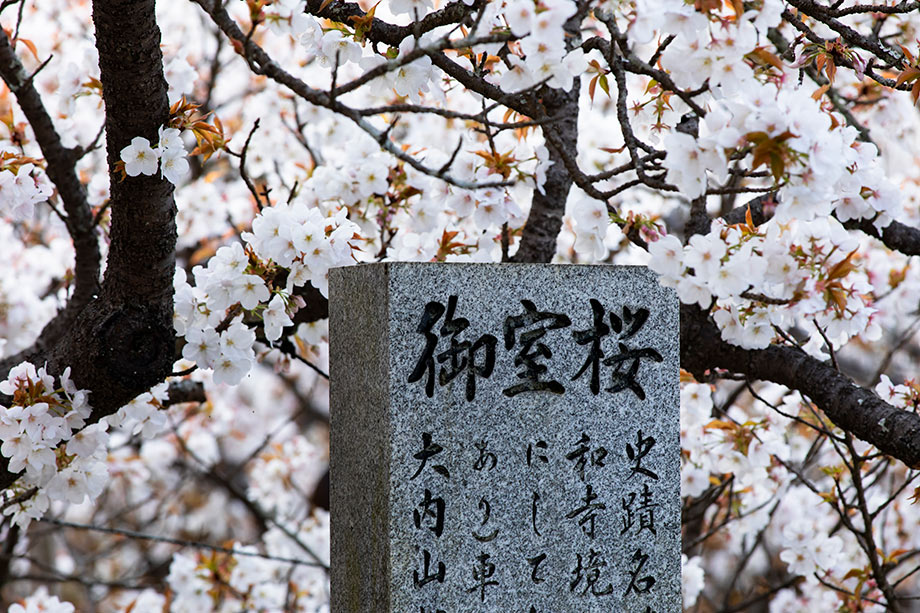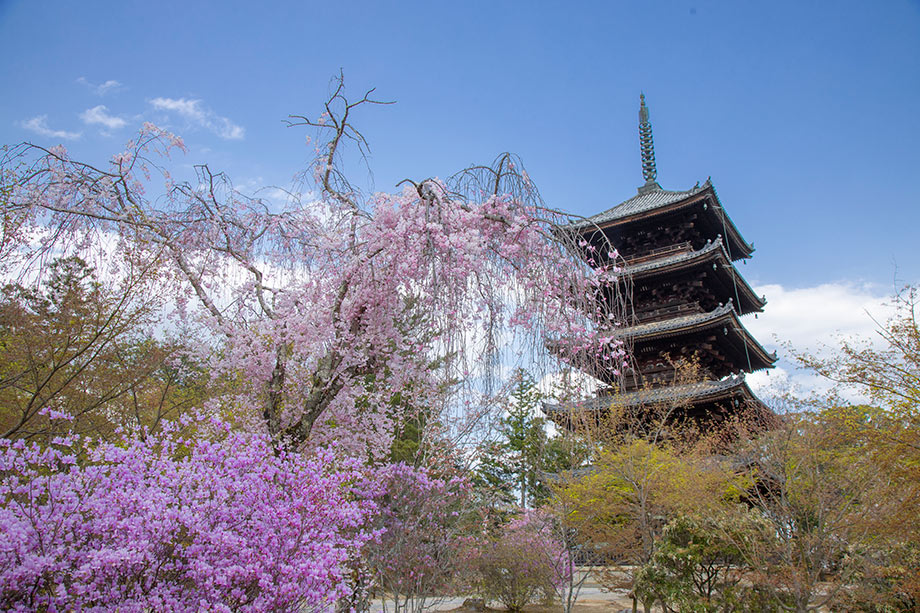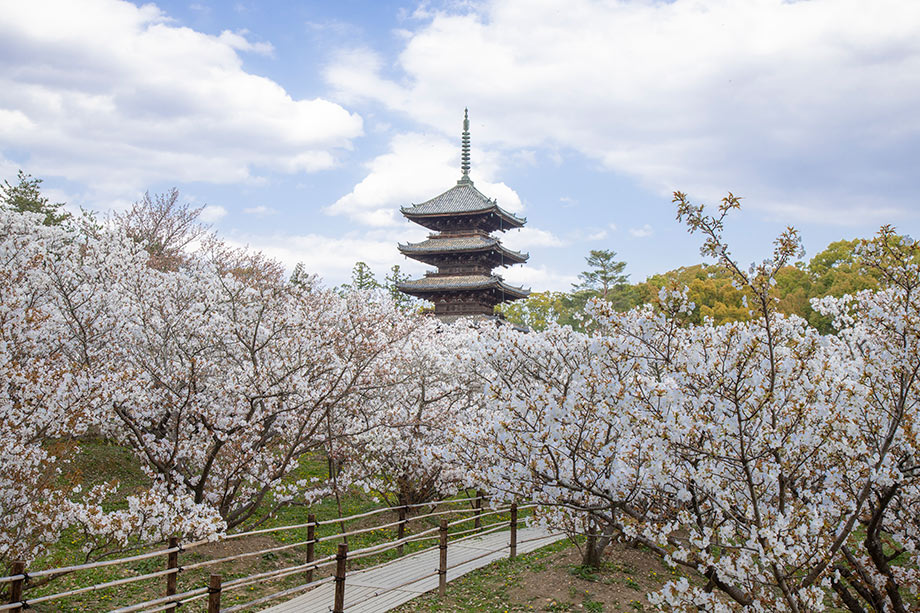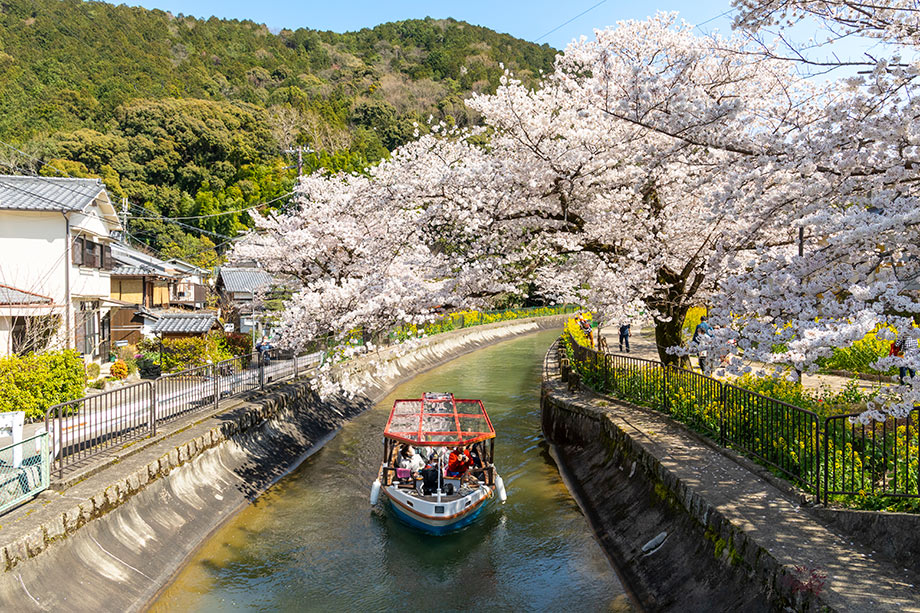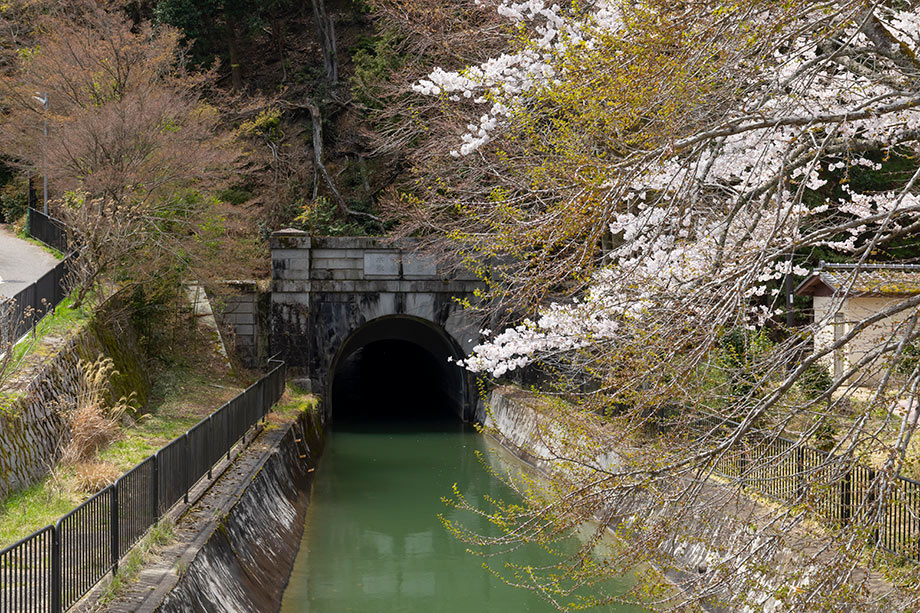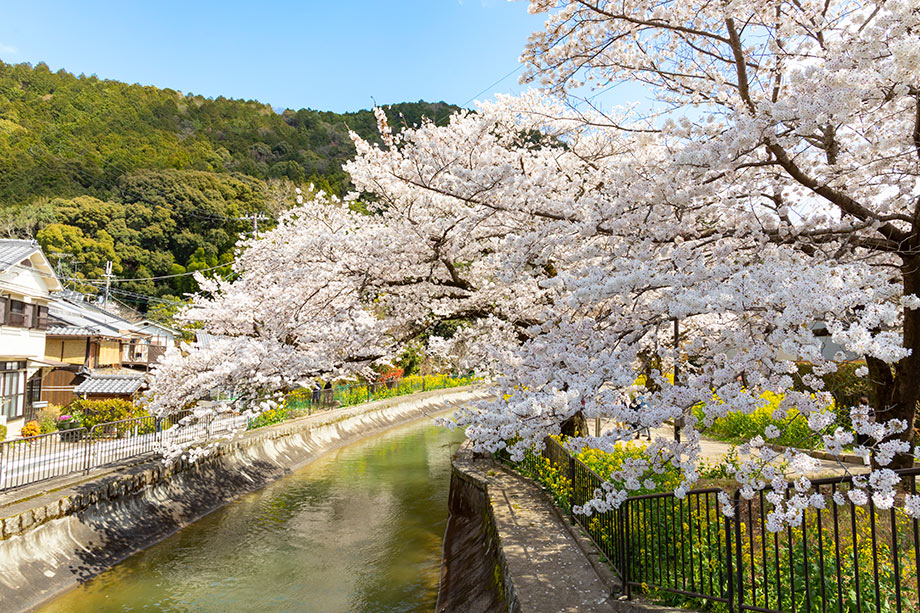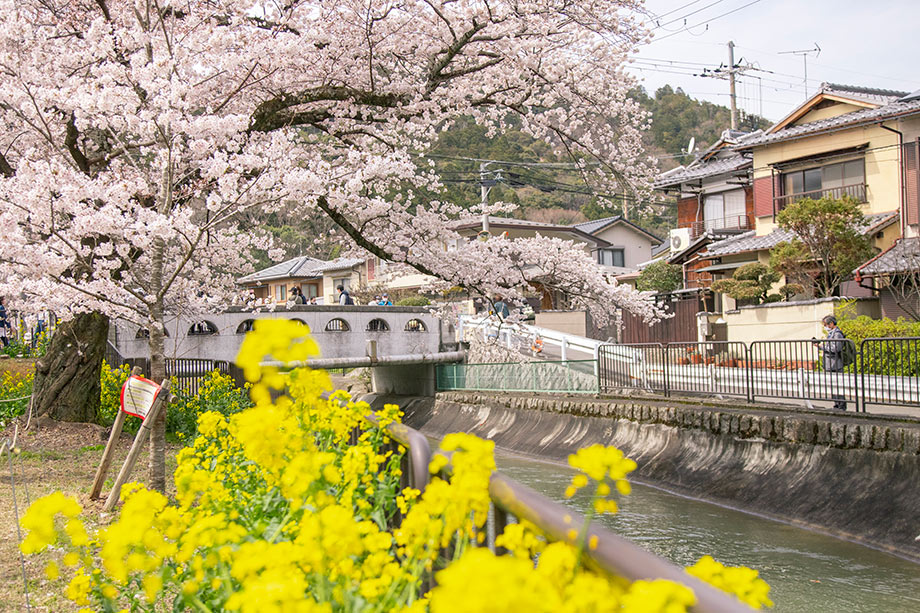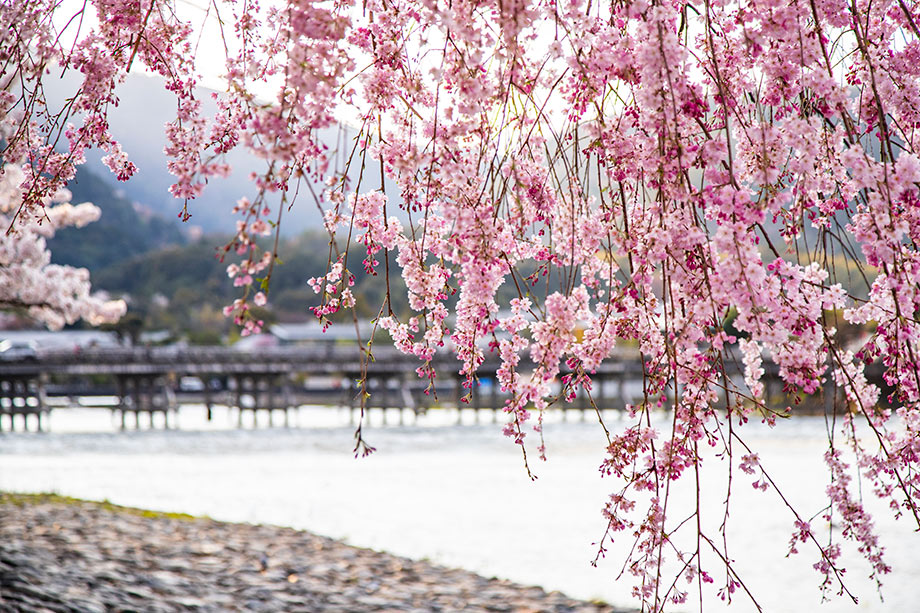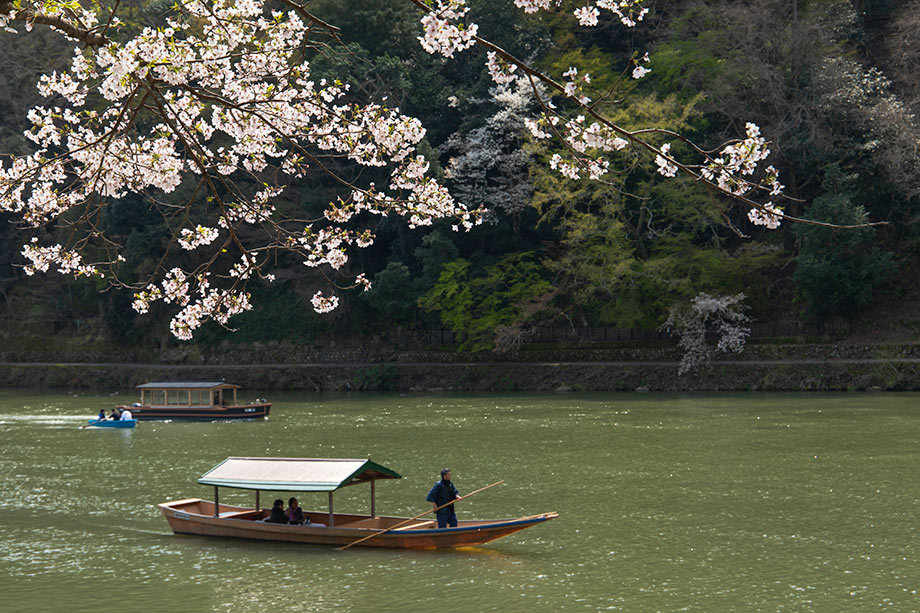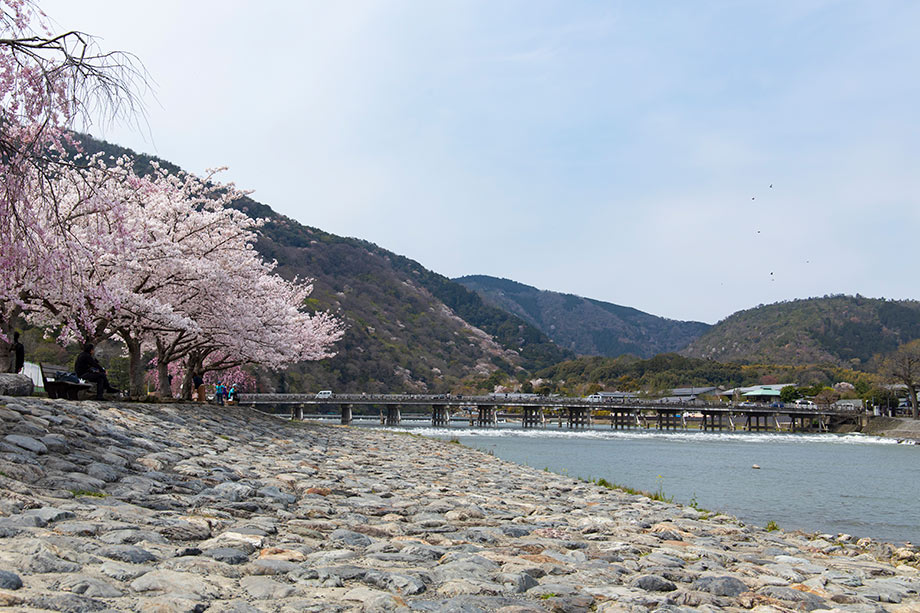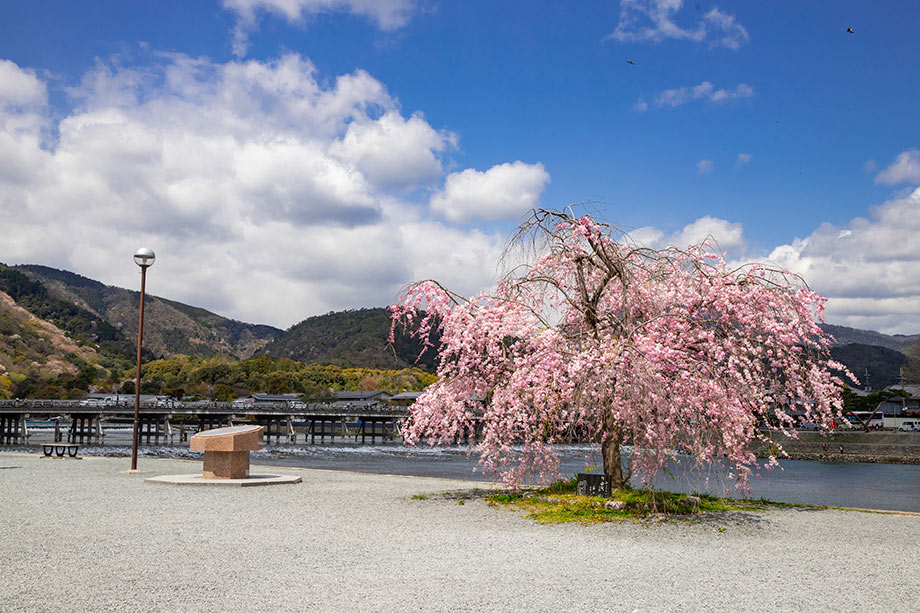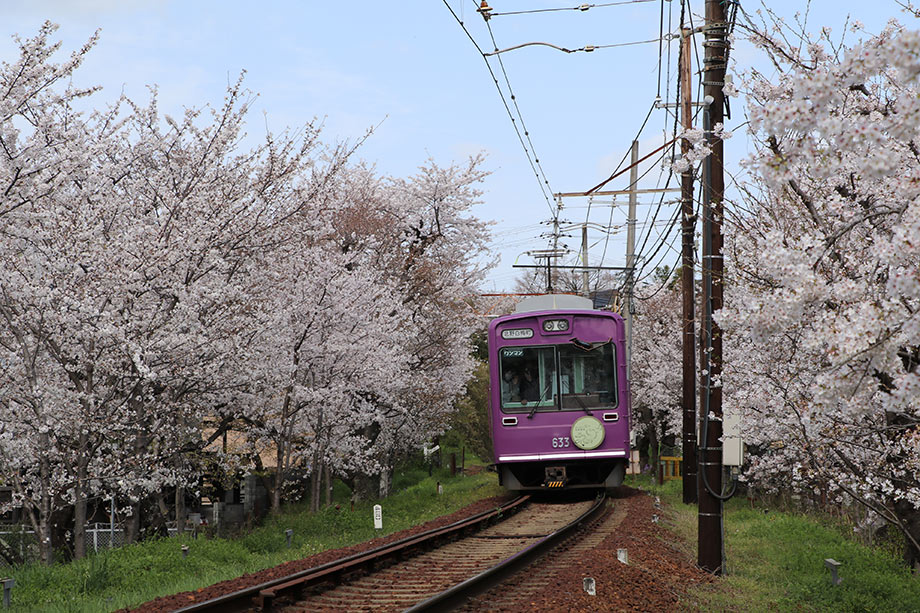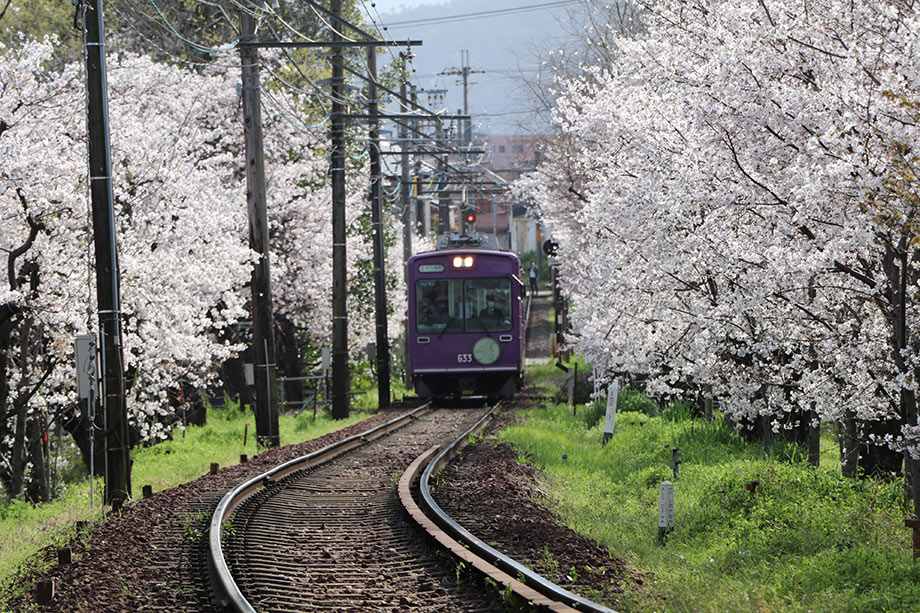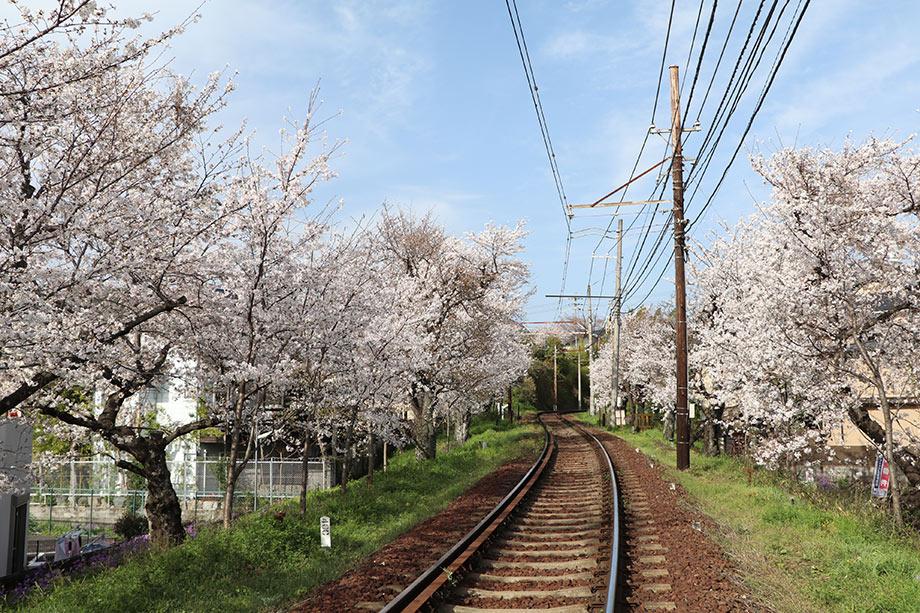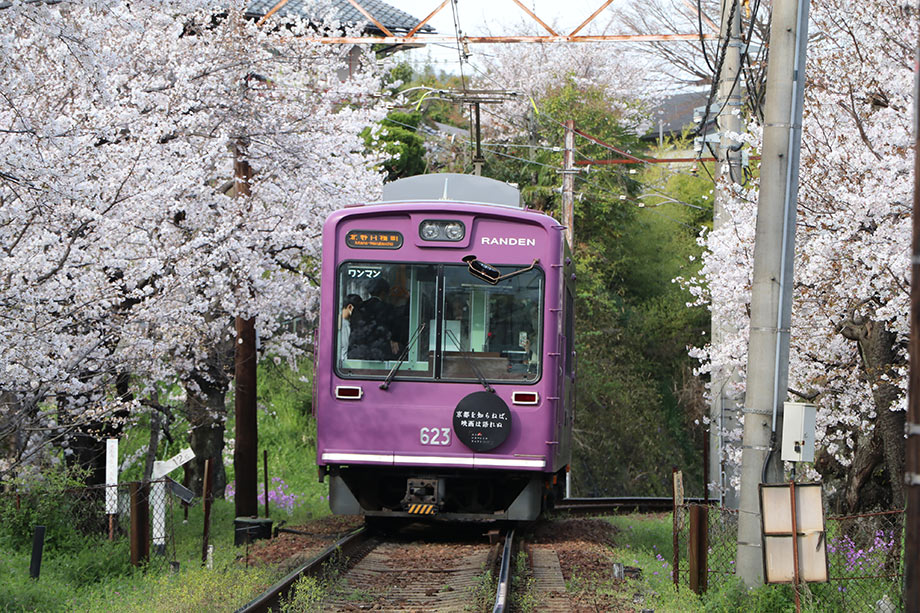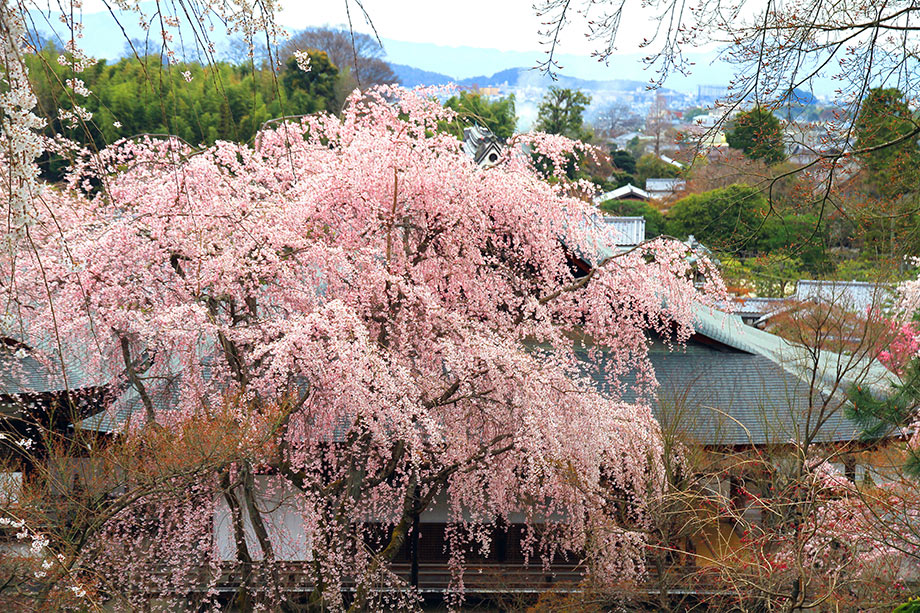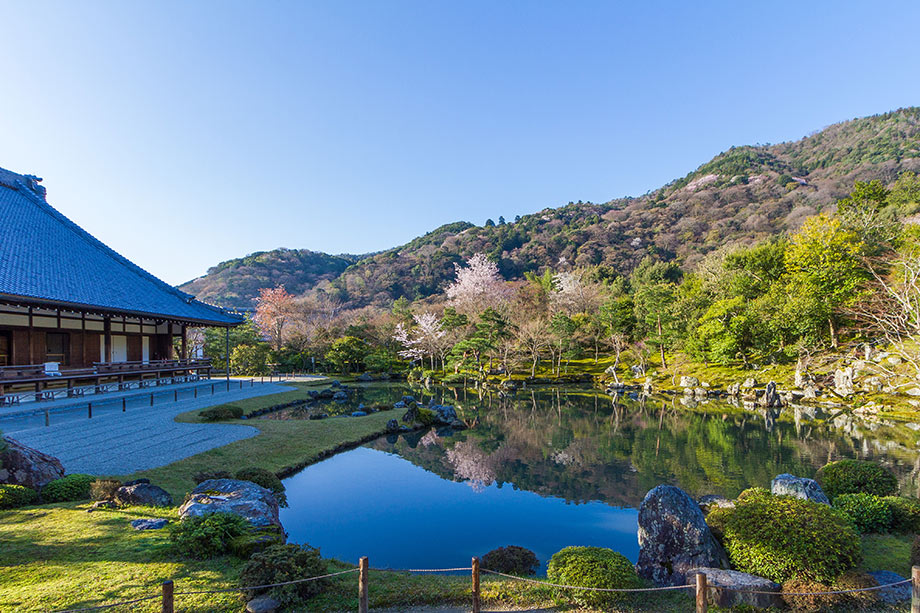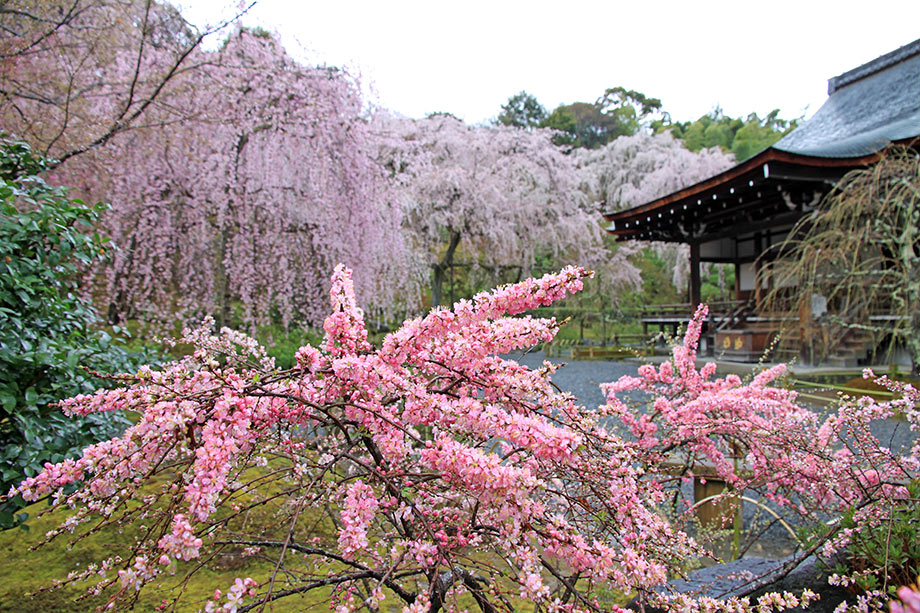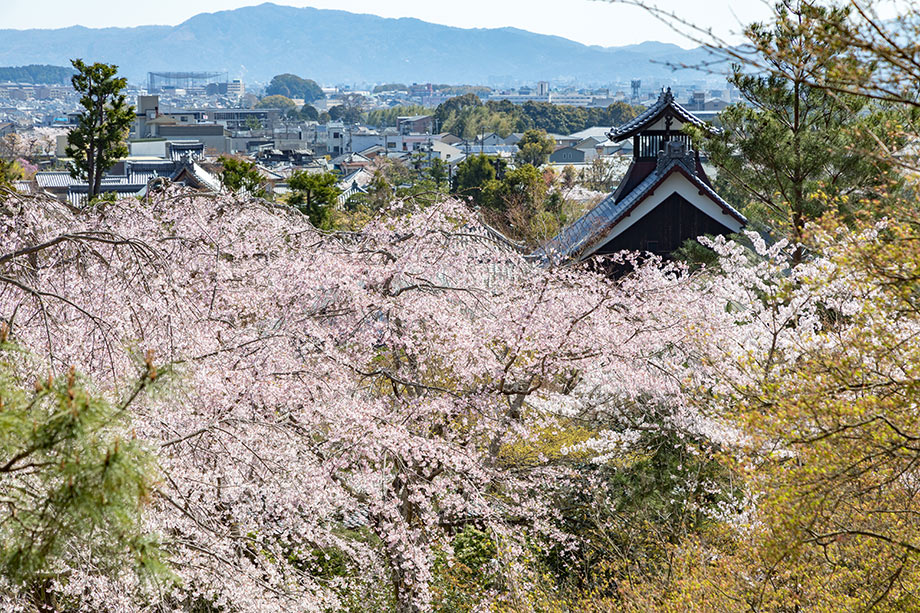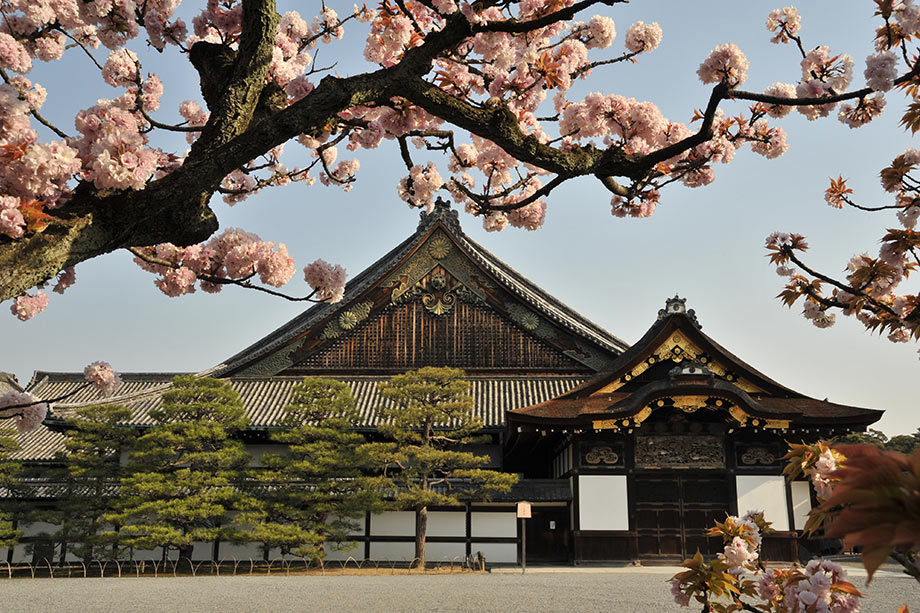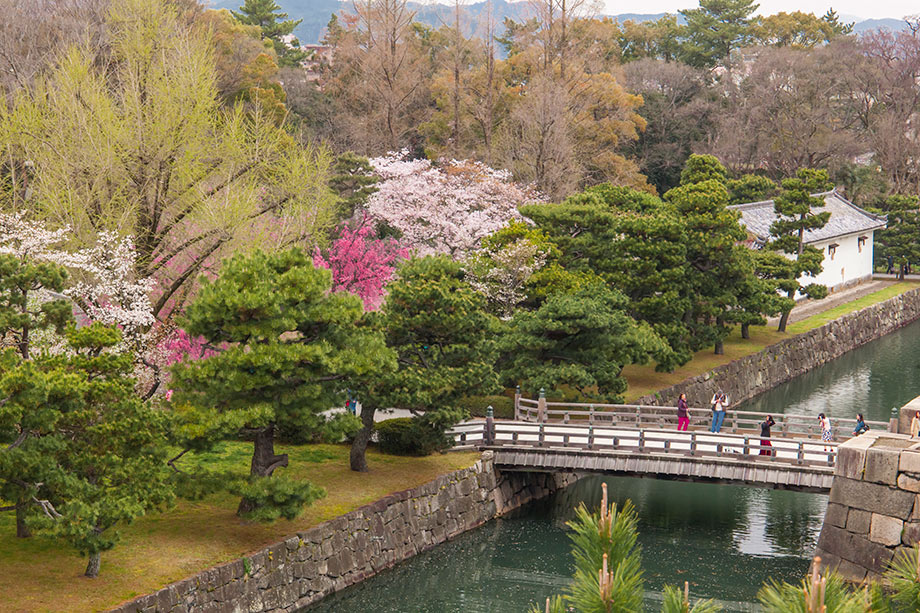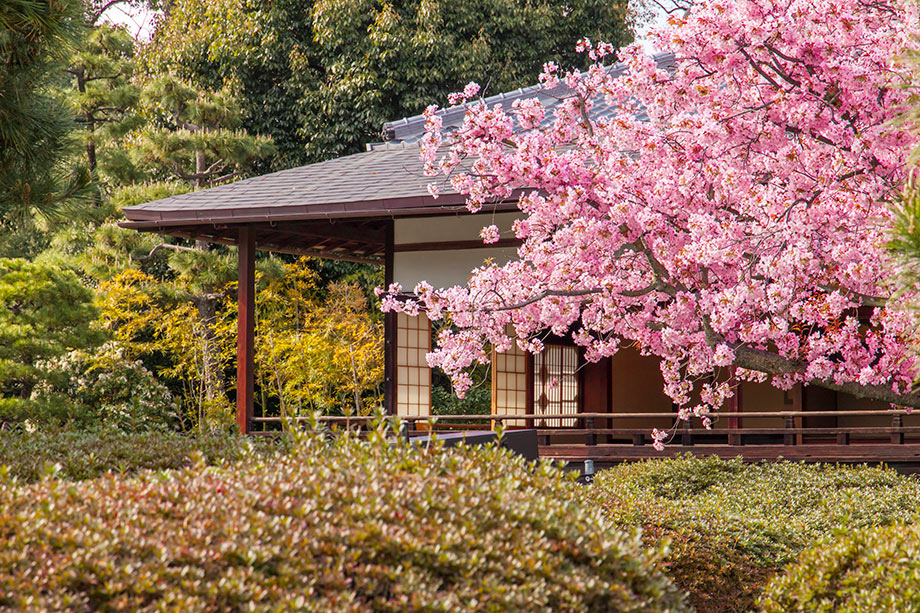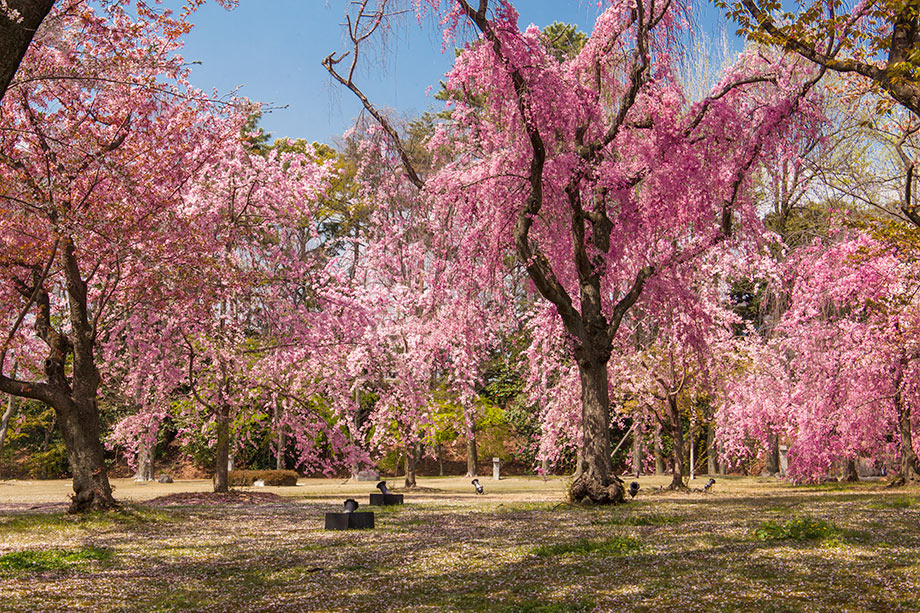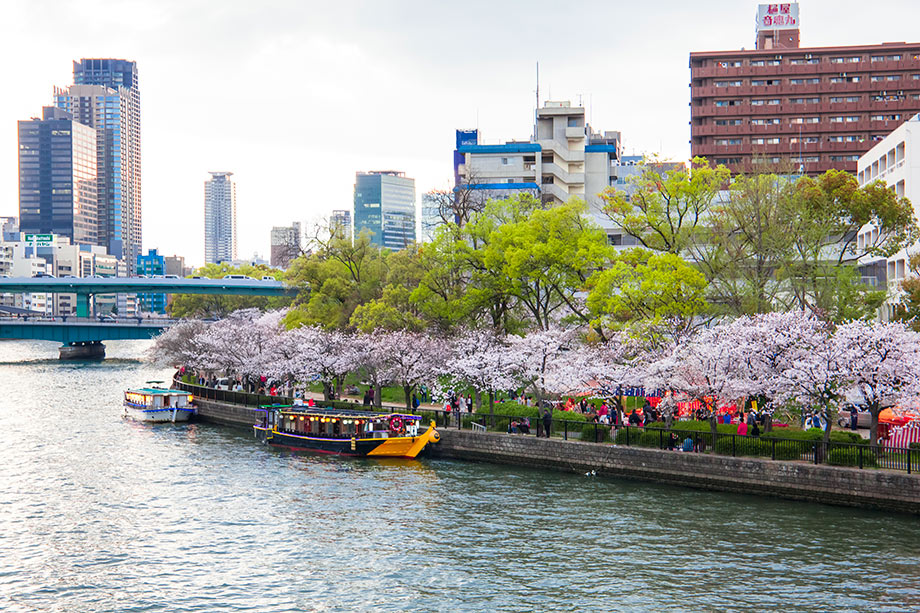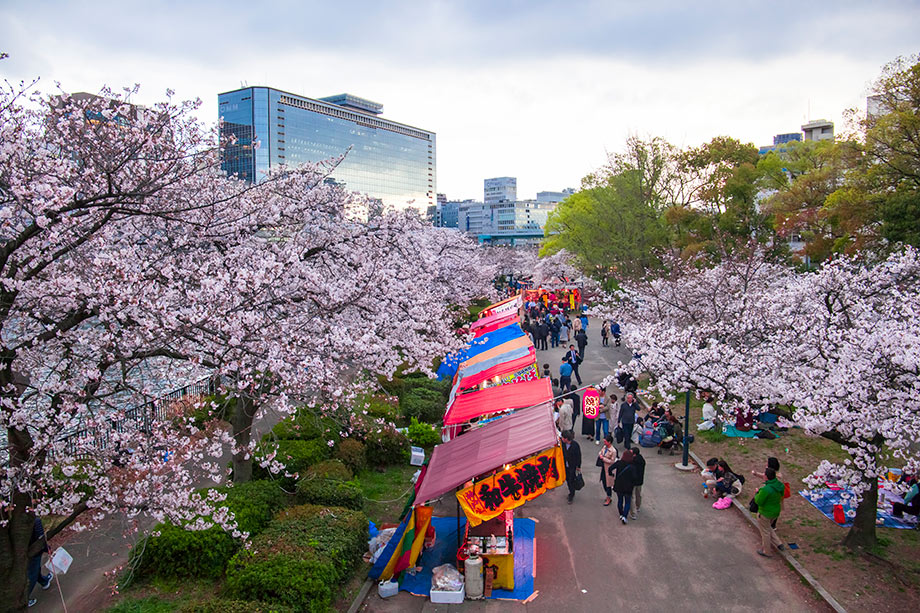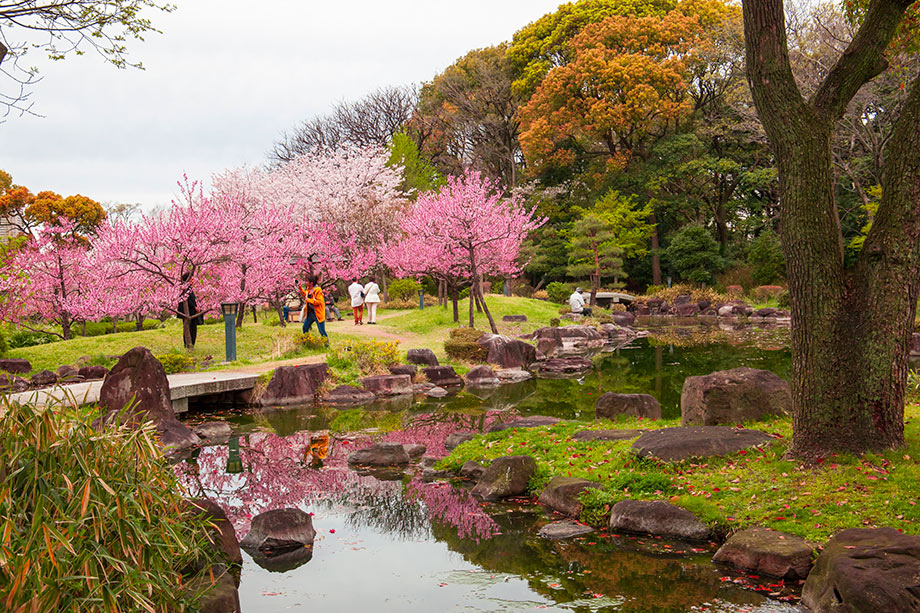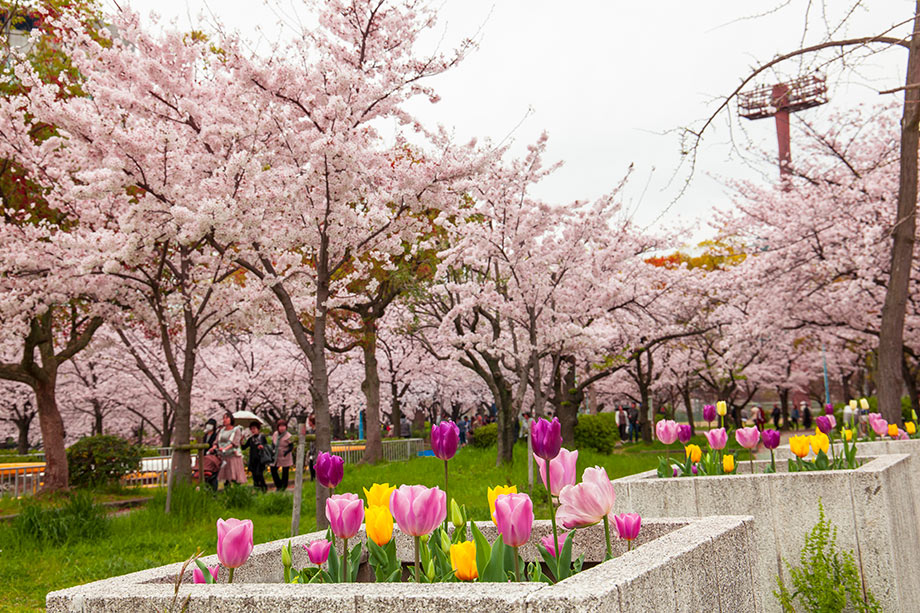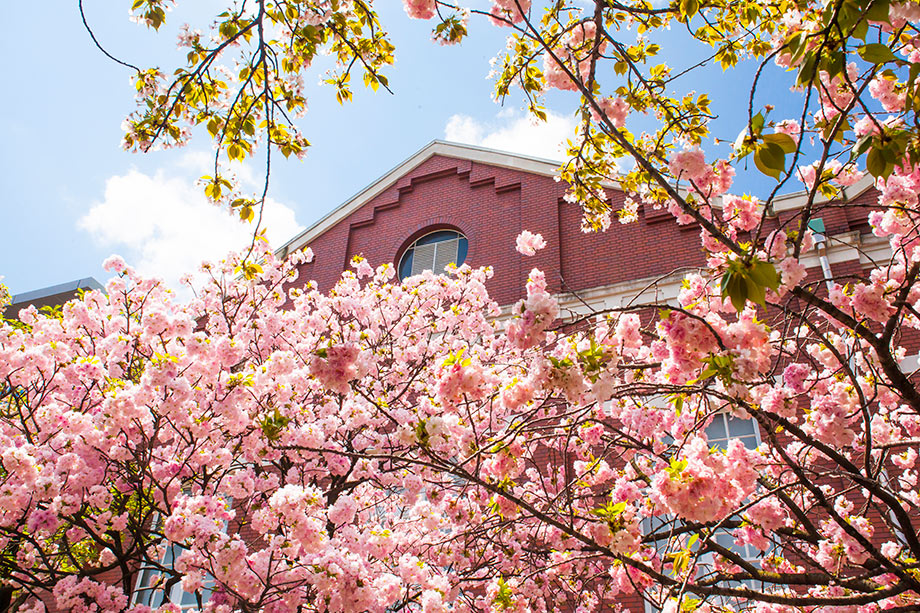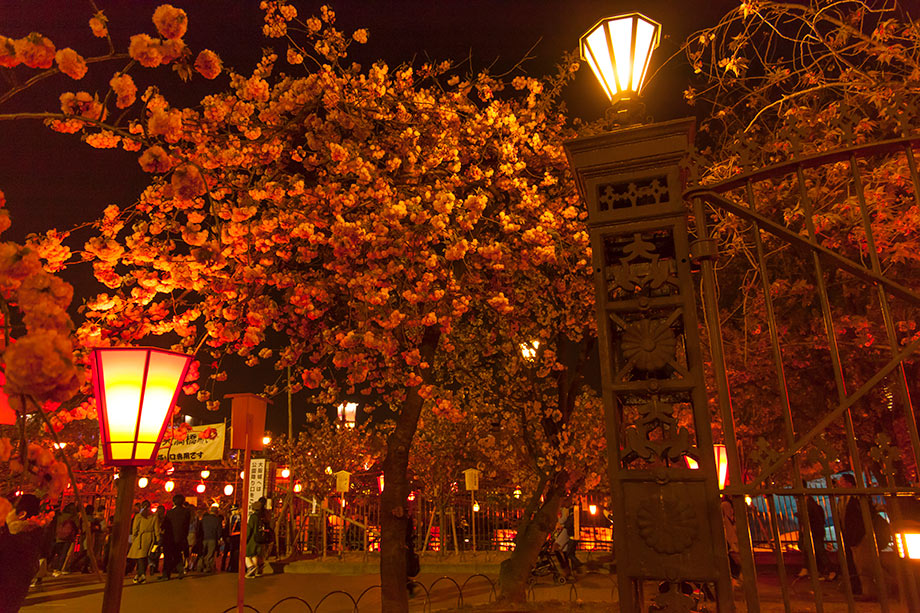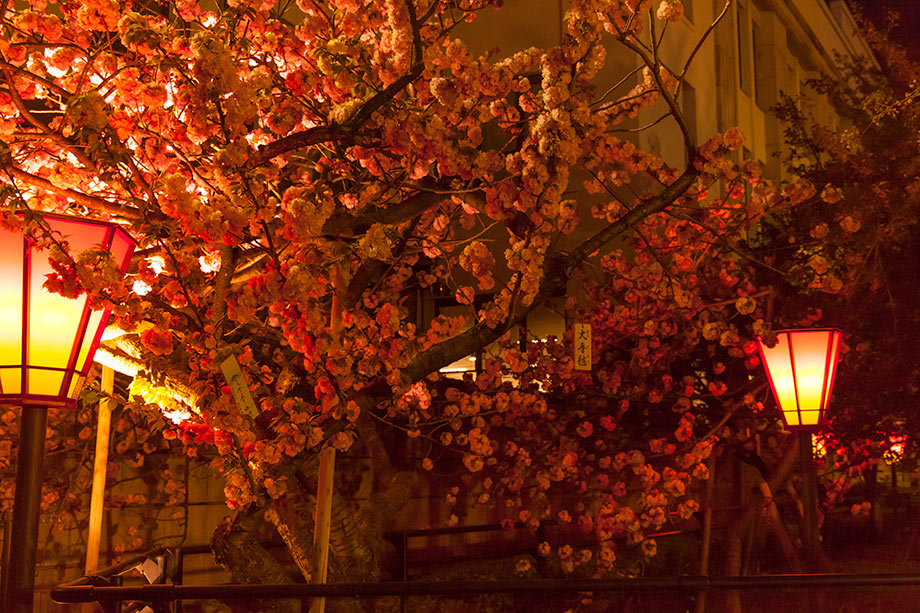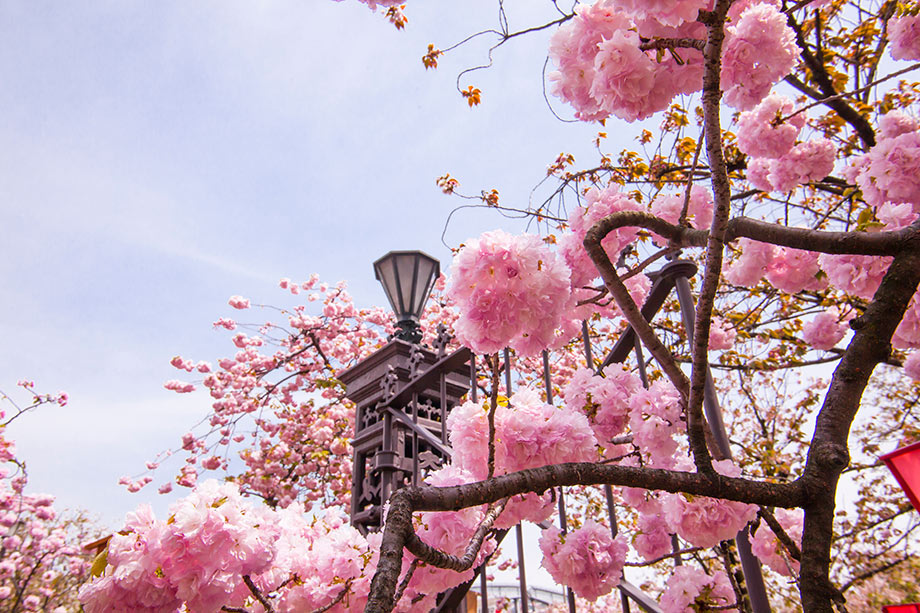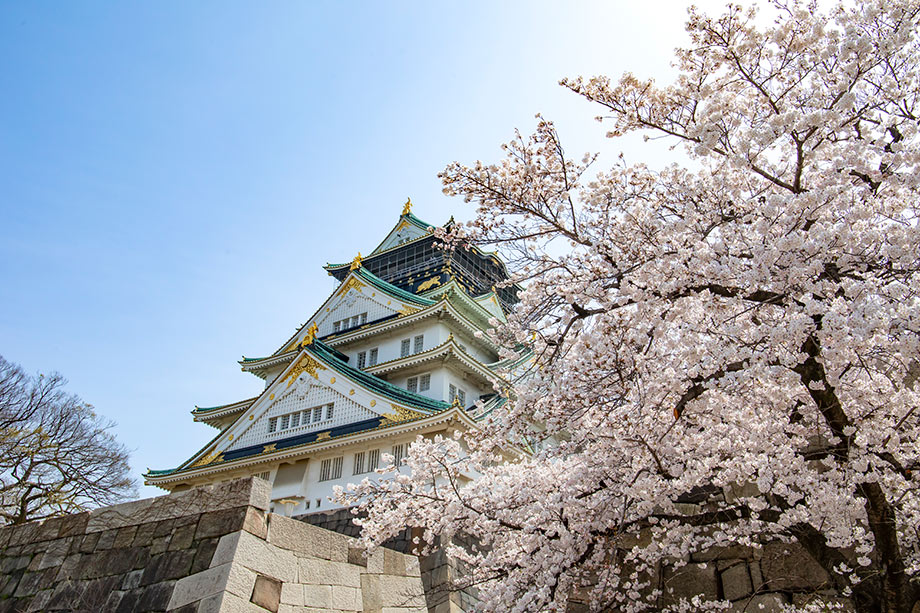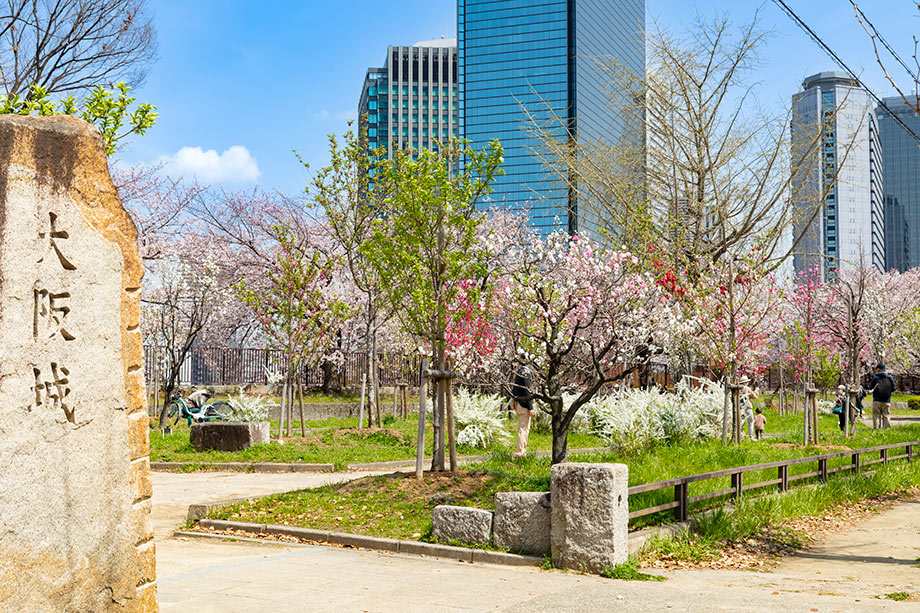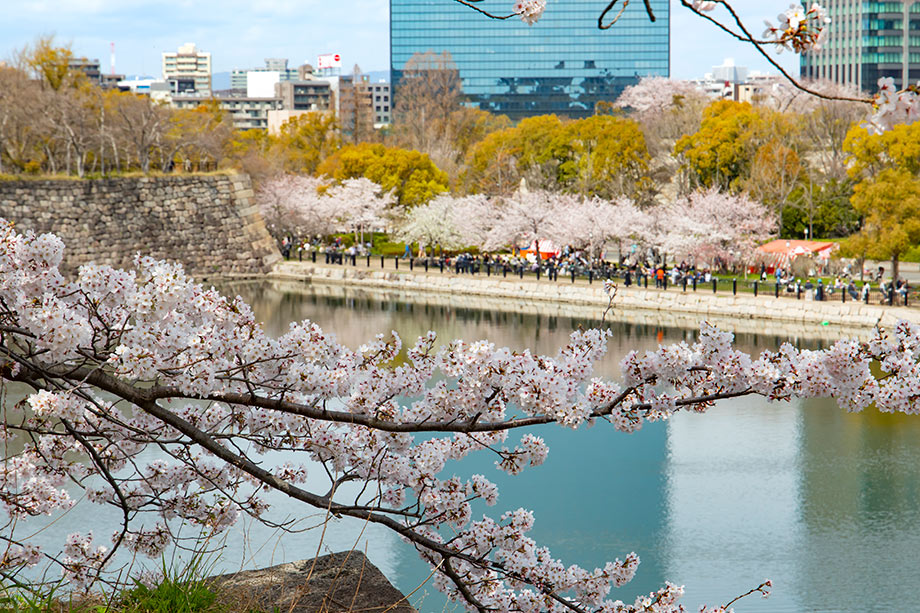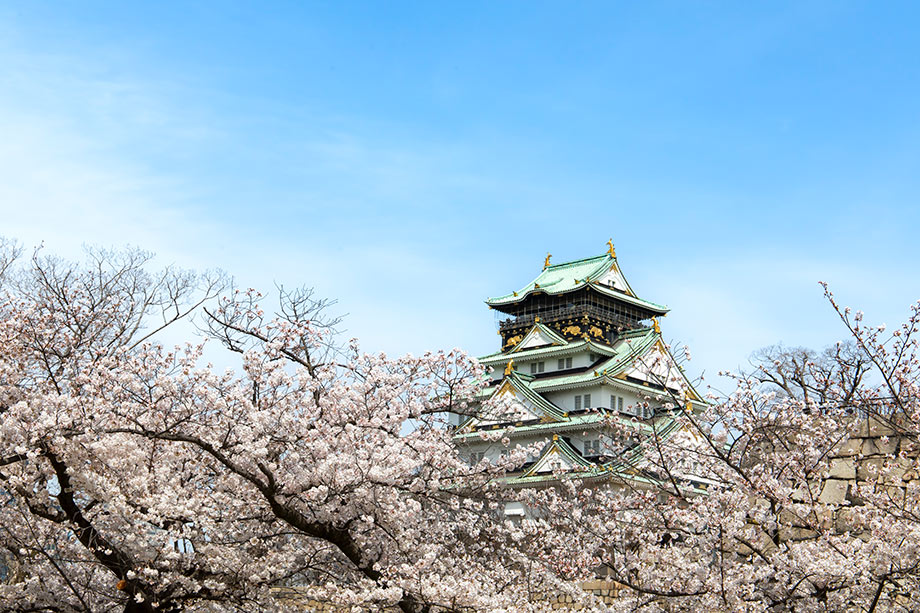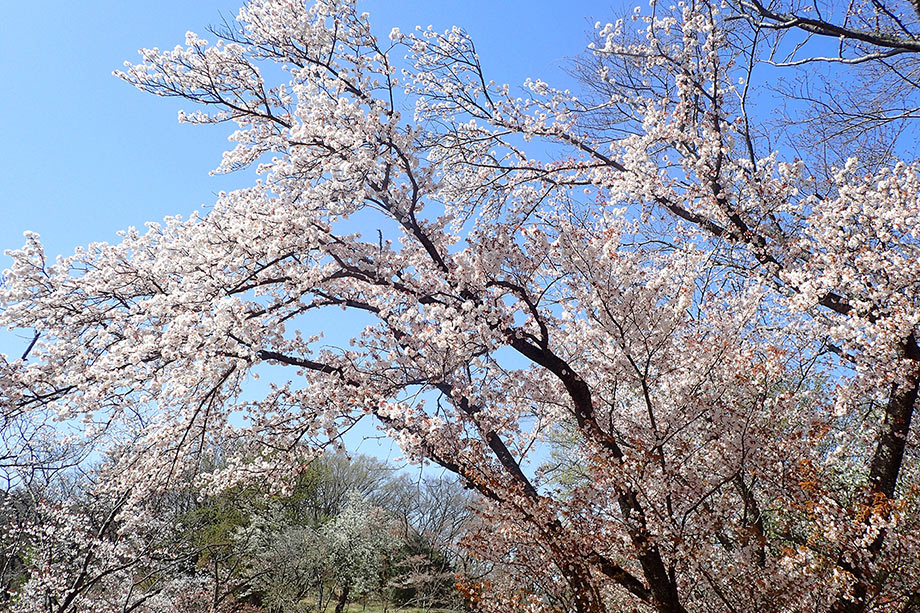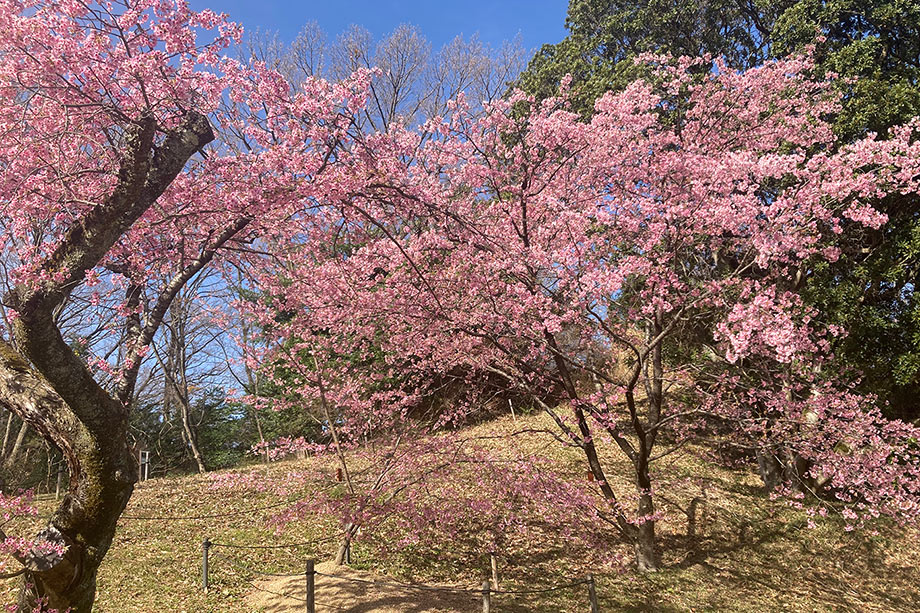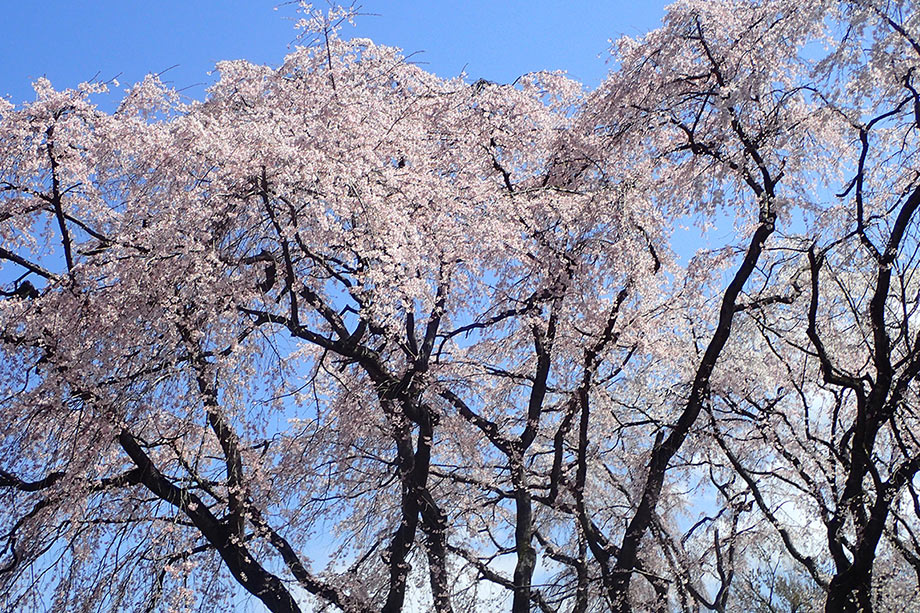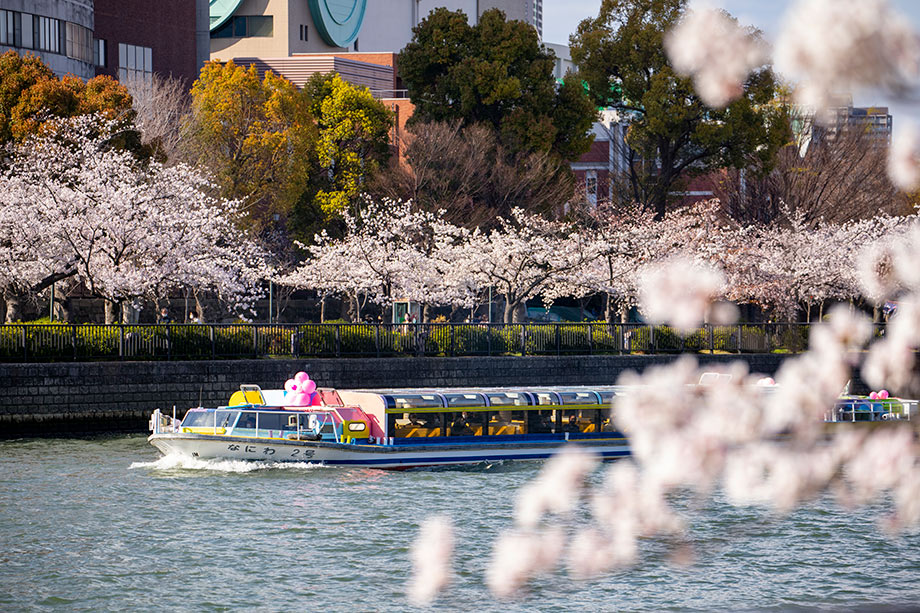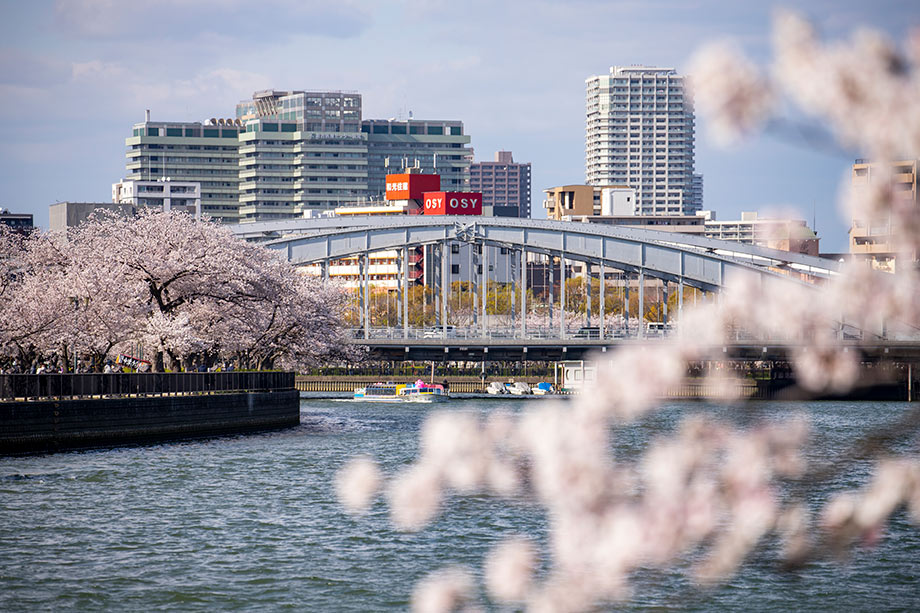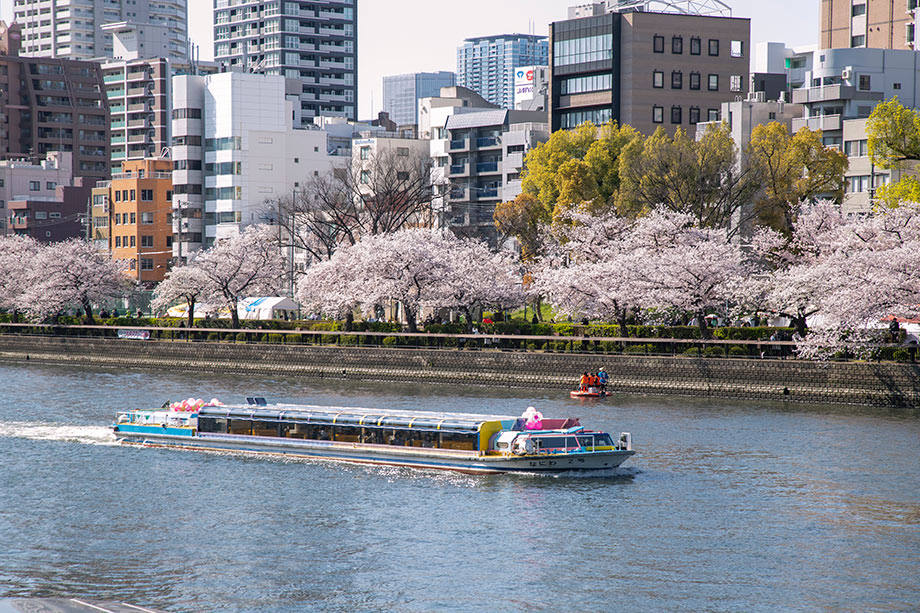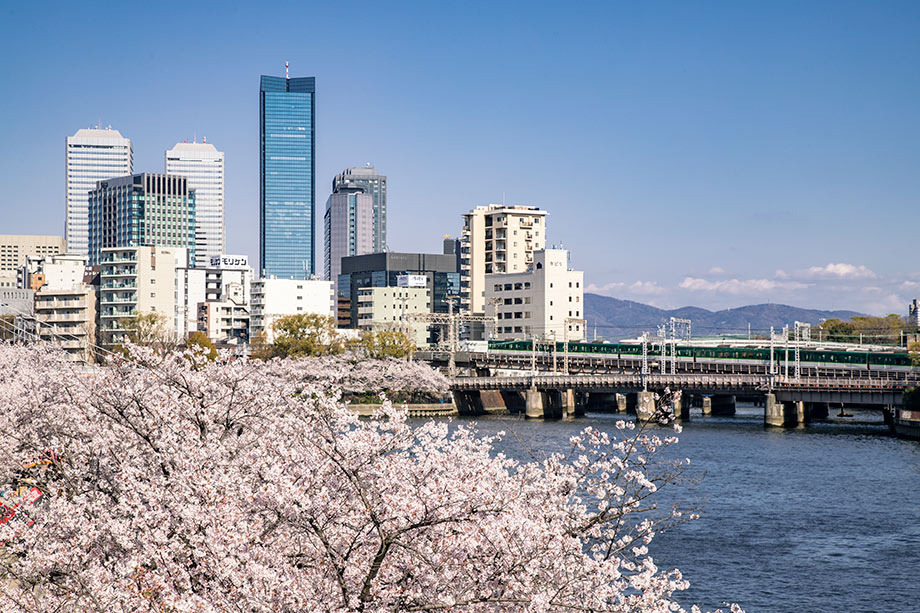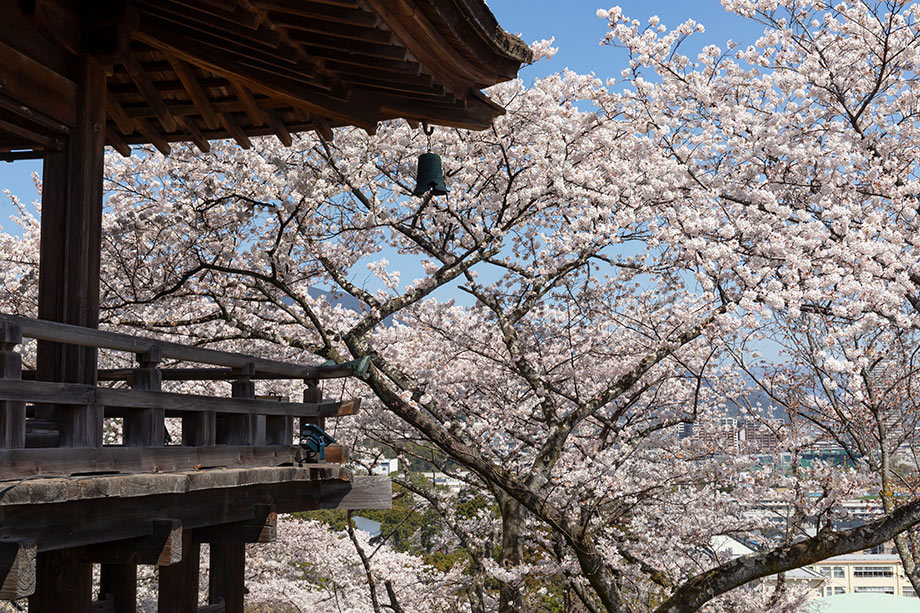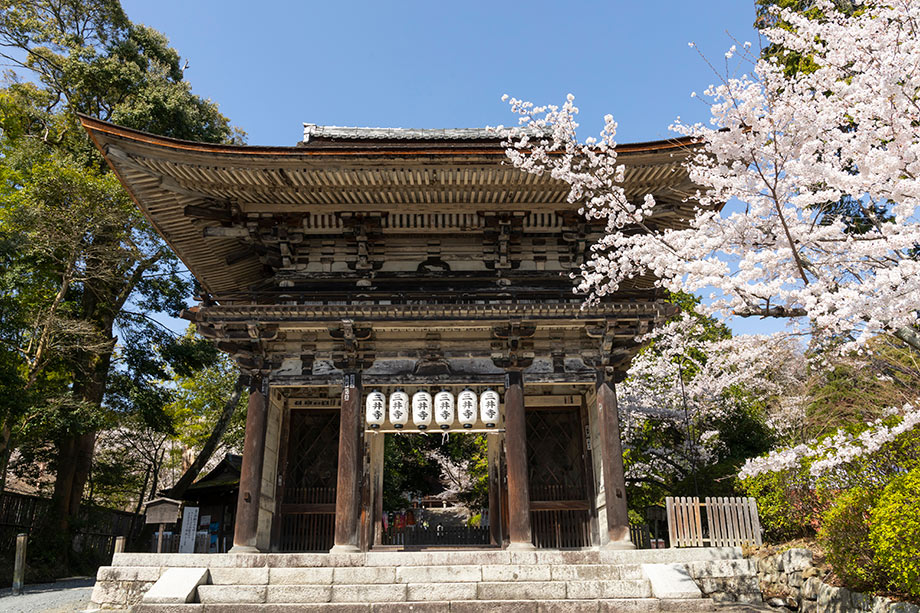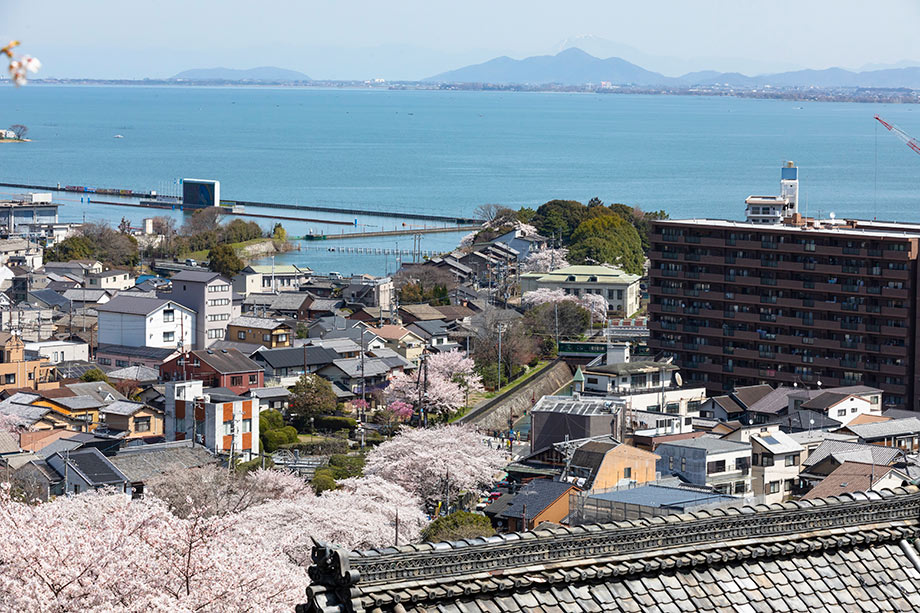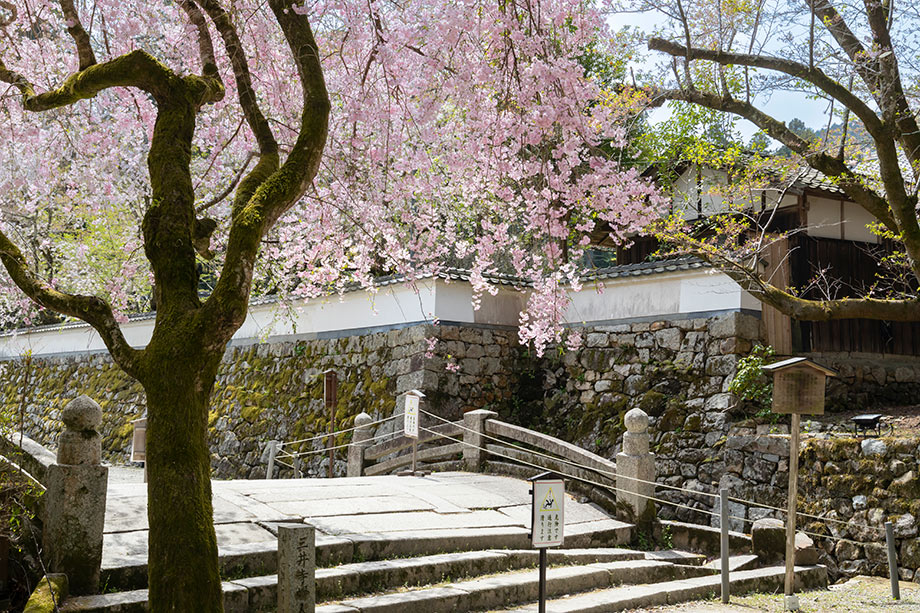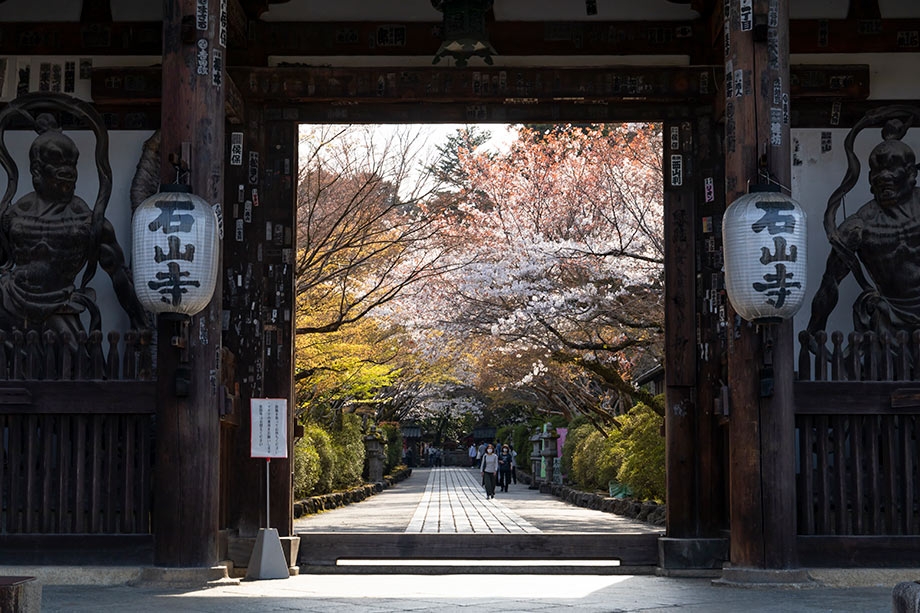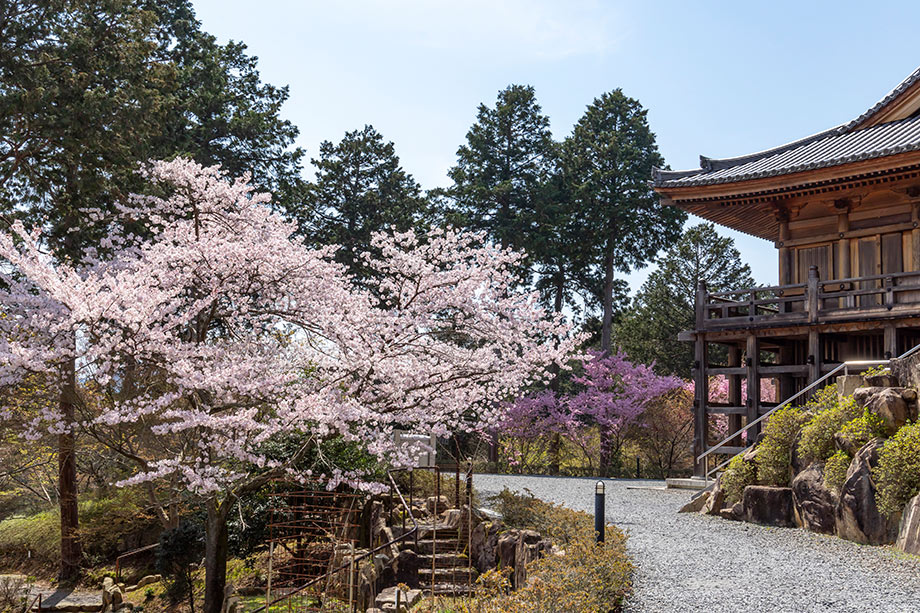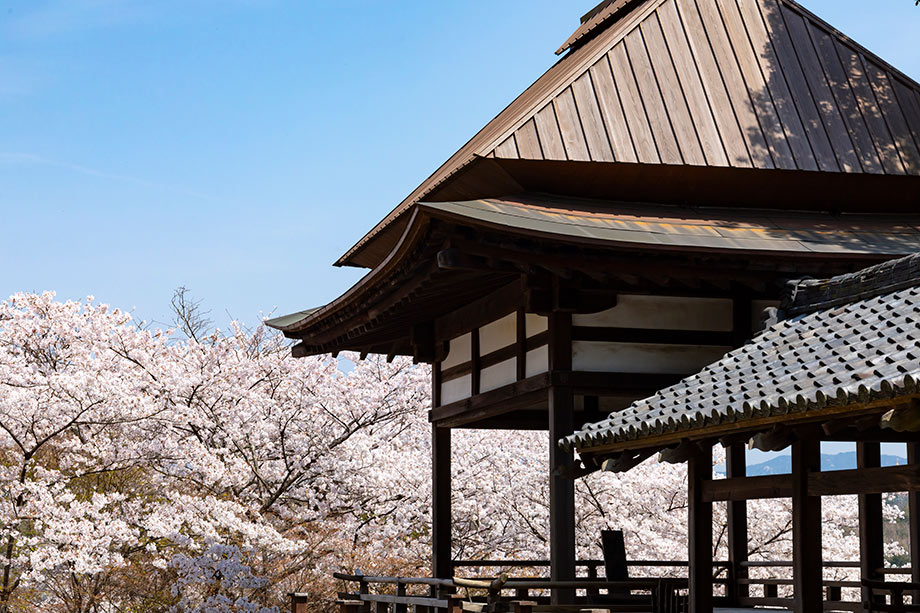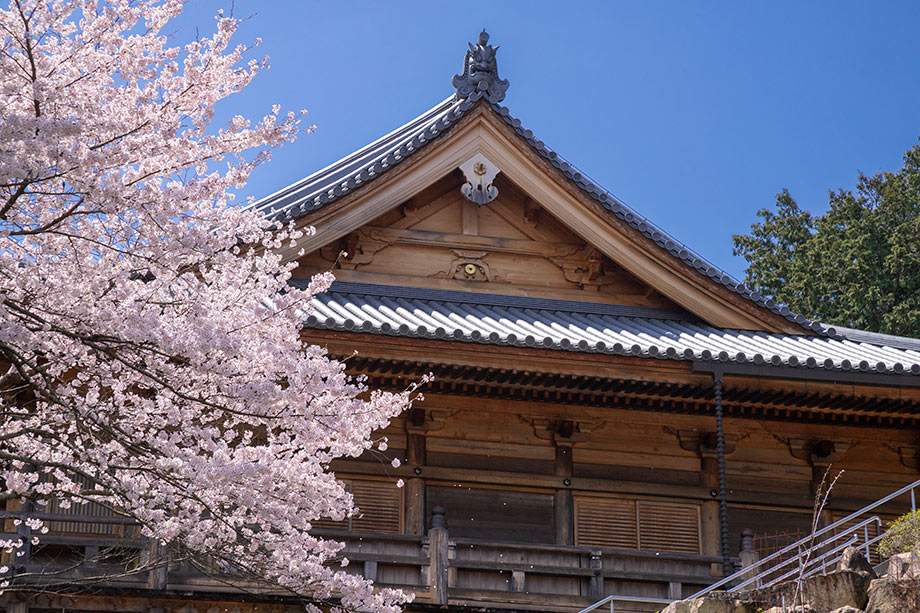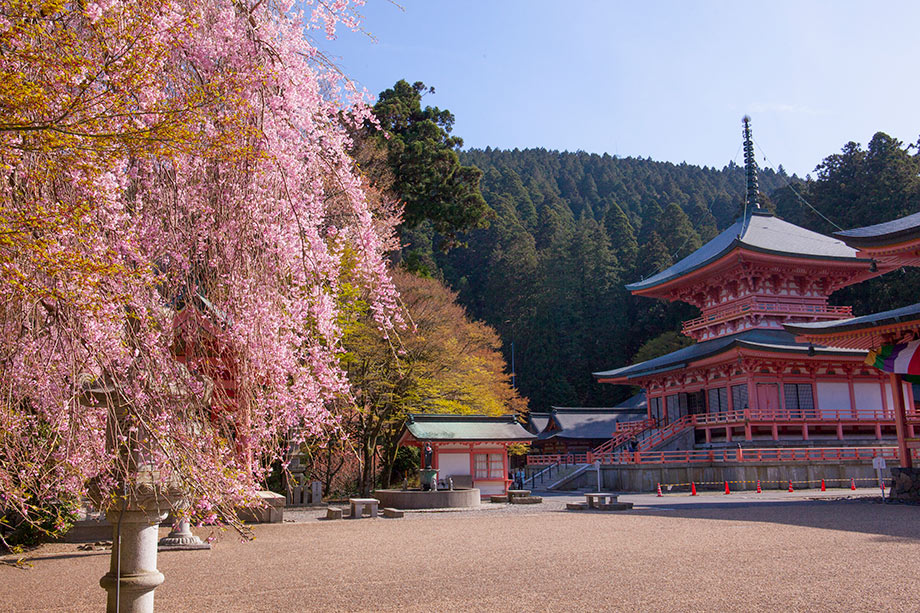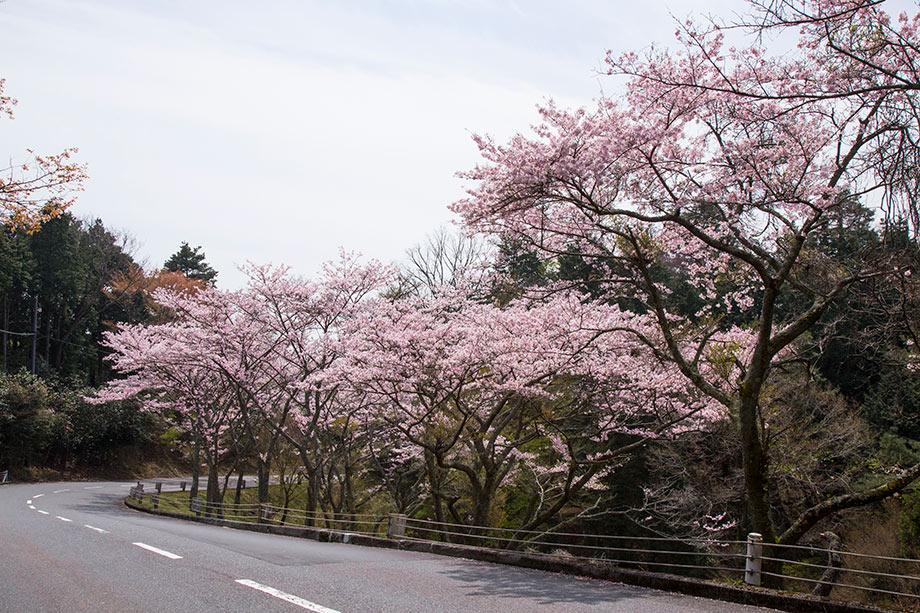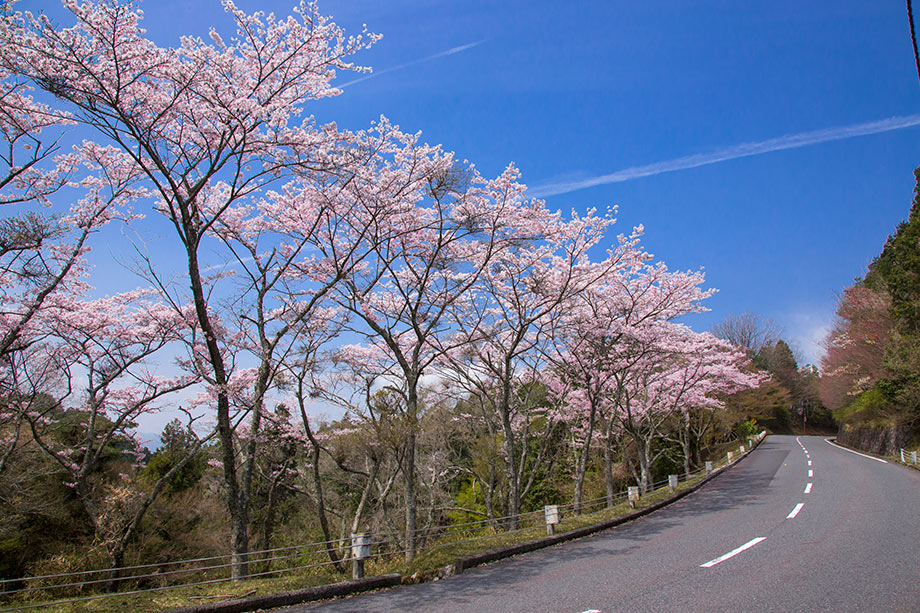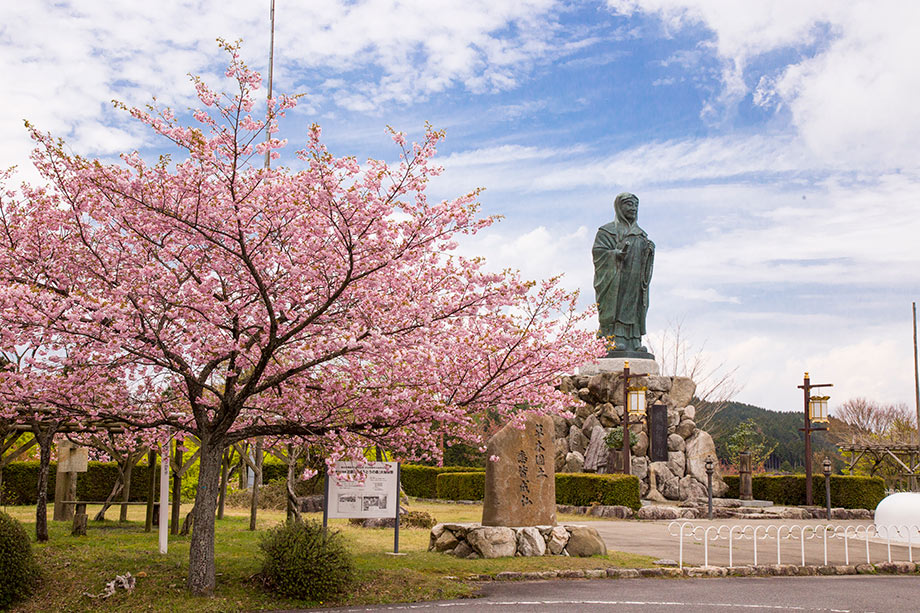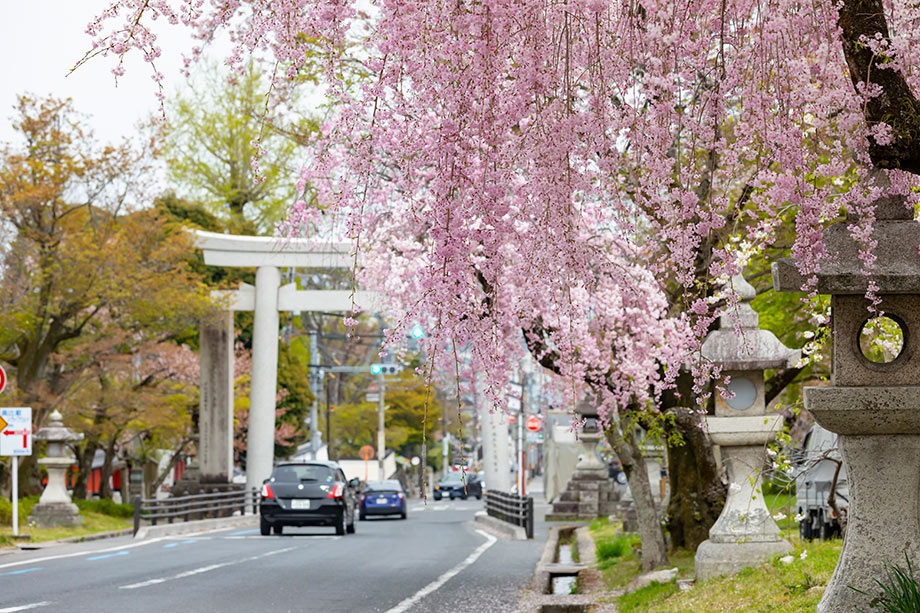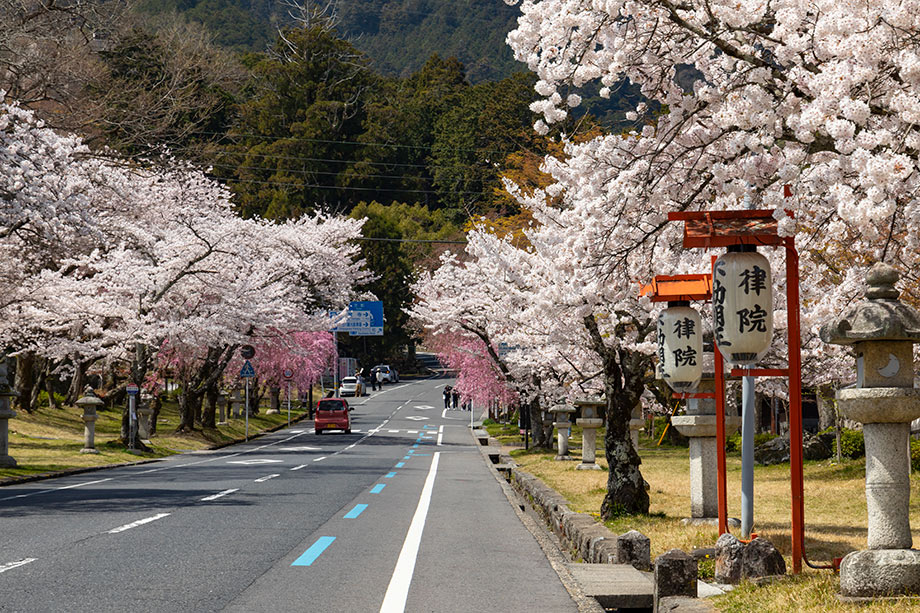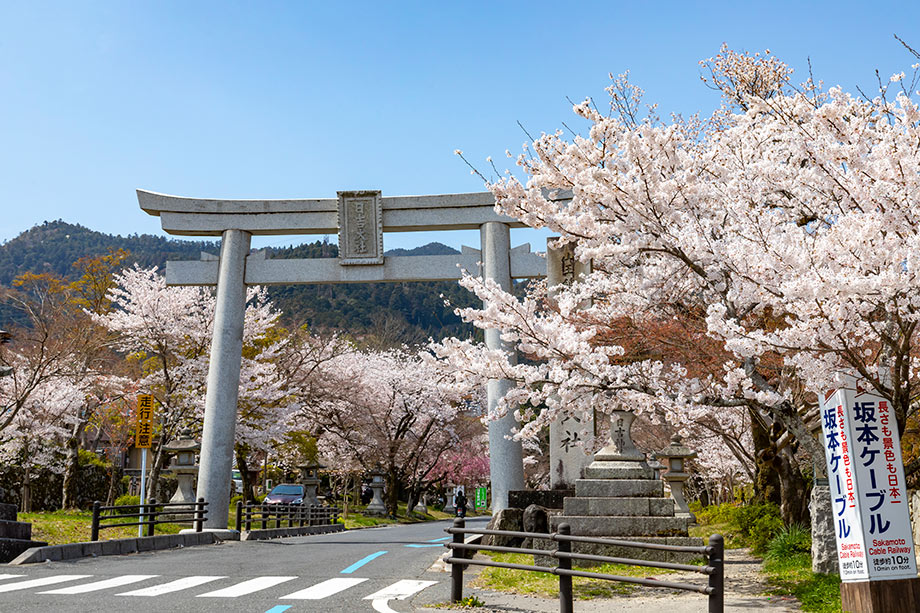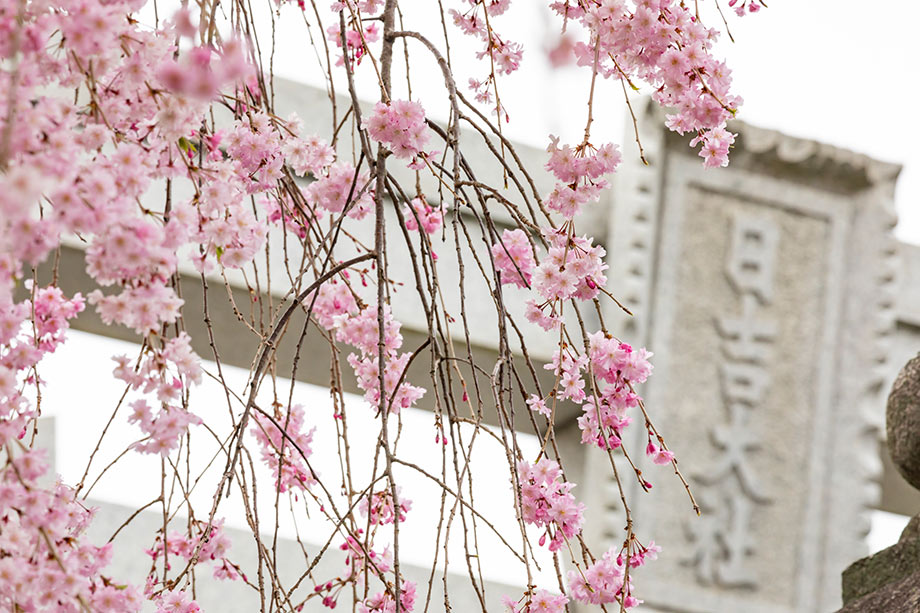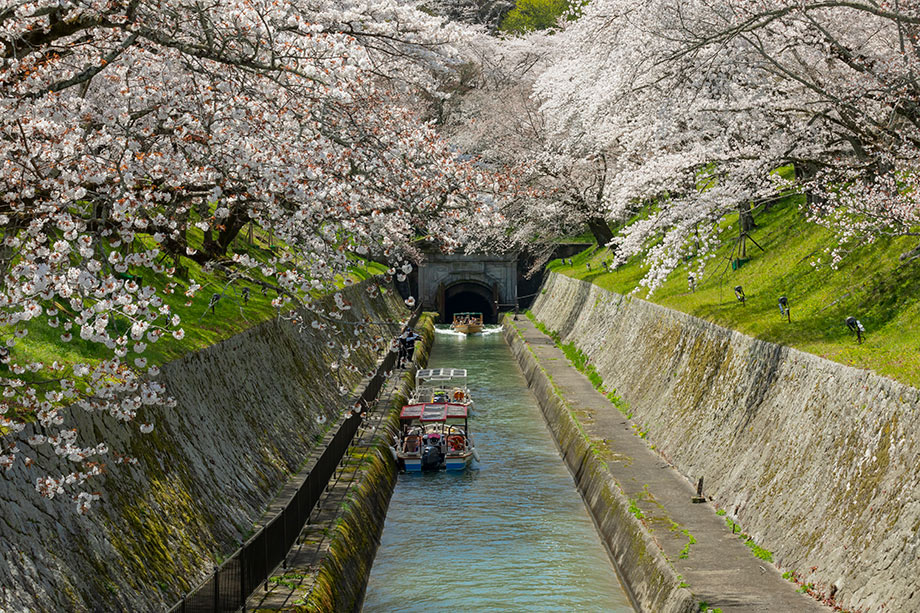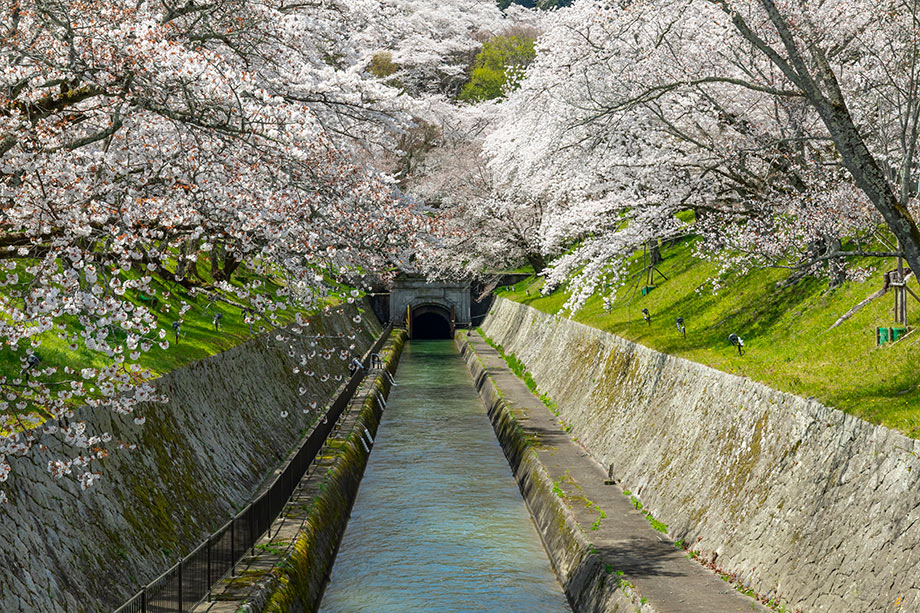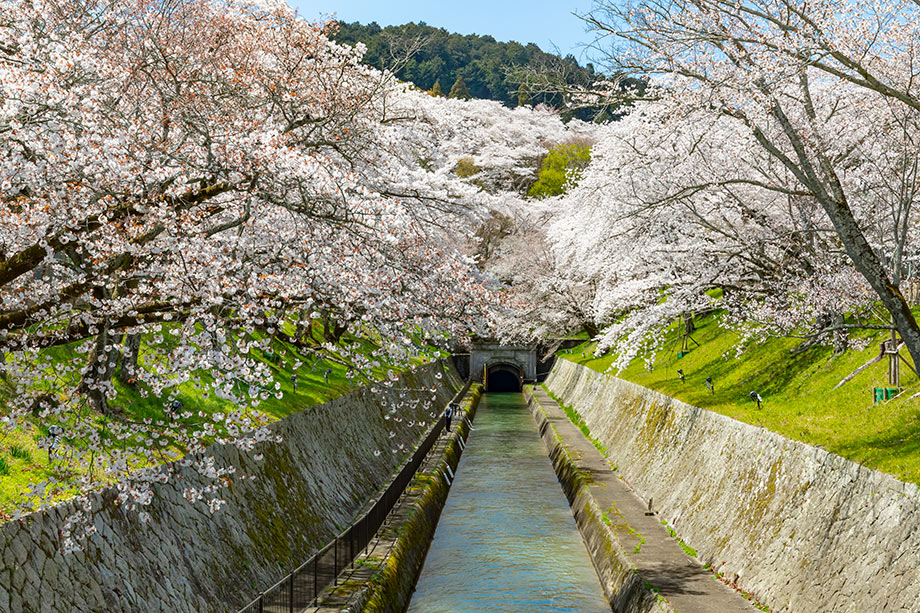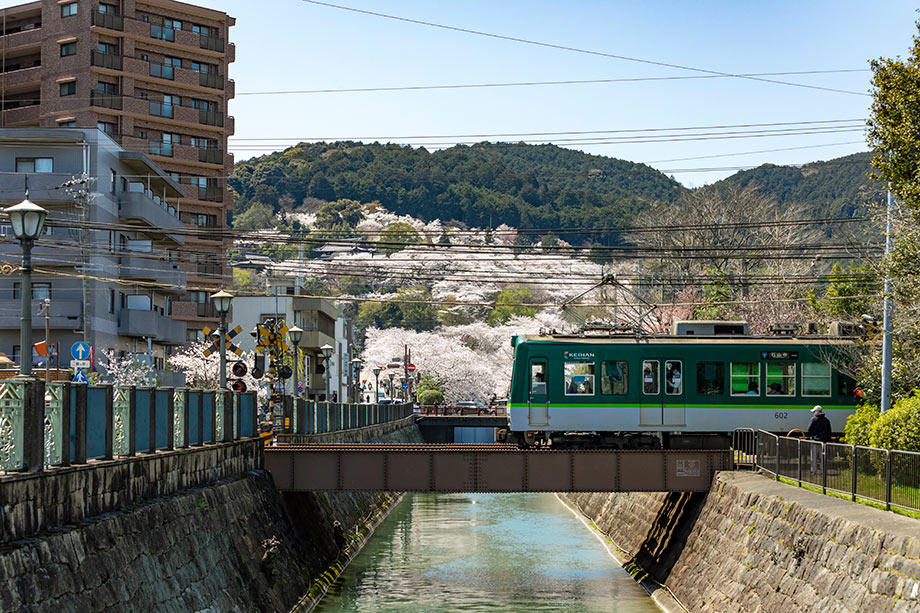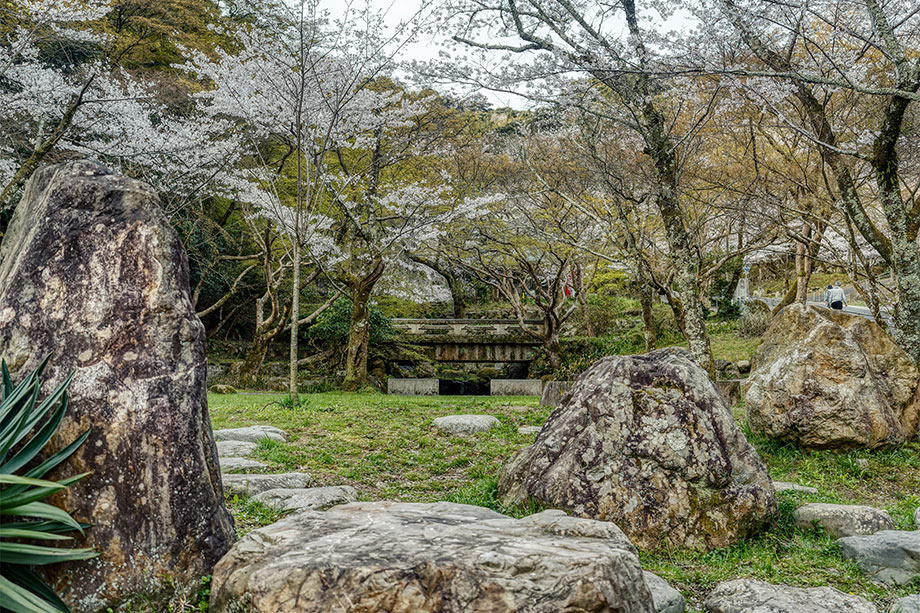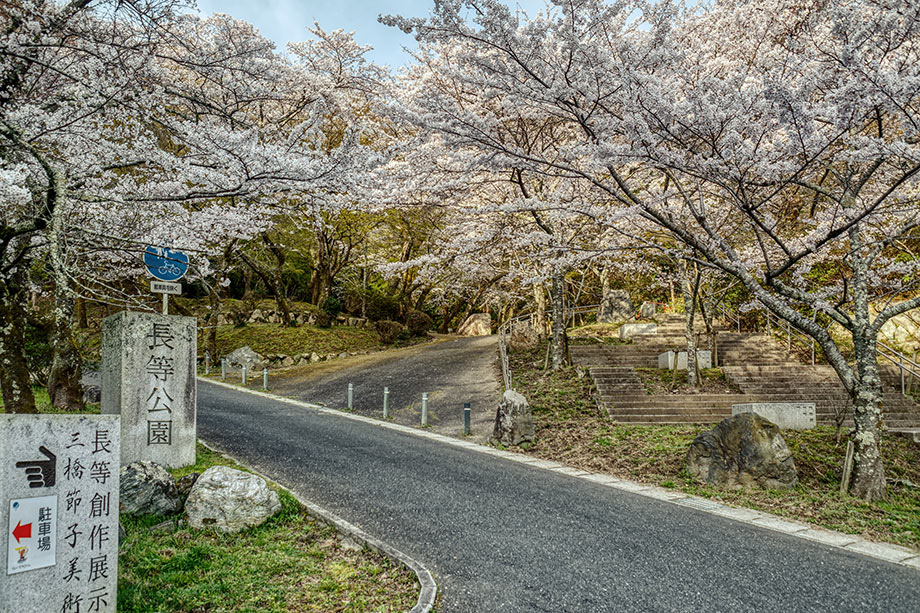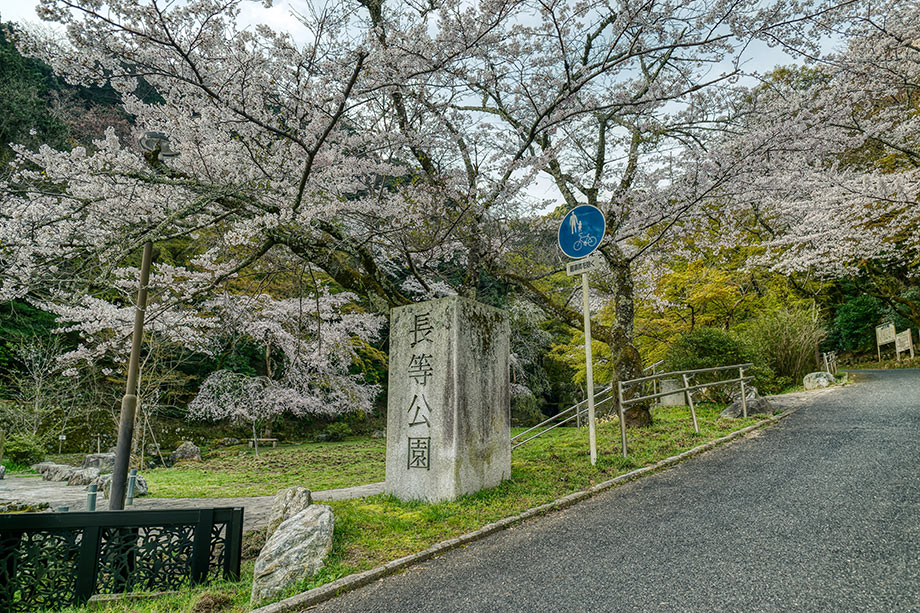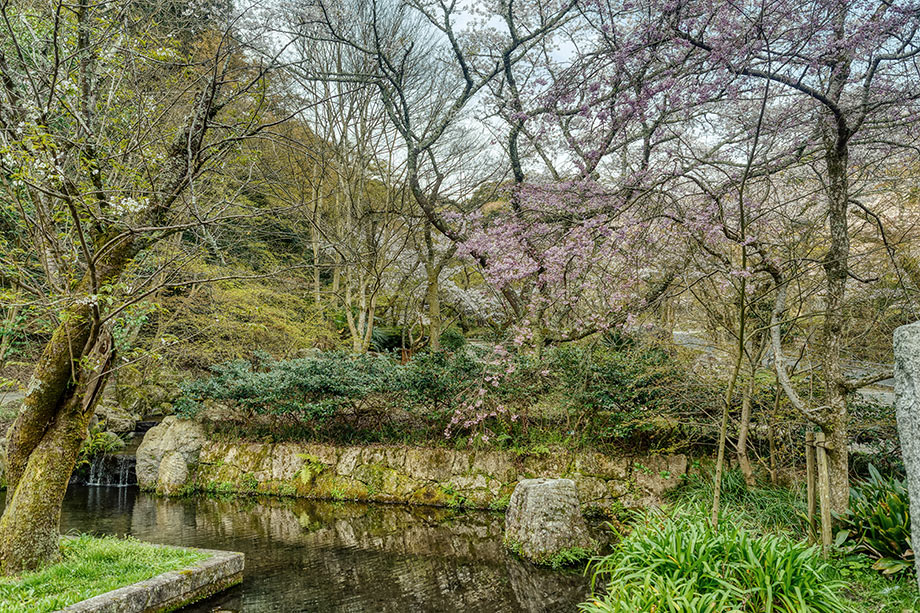Eastern Kyoto
-
Kiyomizu-dera Temple
From Kiyomizu-dera Temple’s famous veranda, some 1,000 cherry blossom trees can be seen, a majestic view over a sea of clouds. On the temple grounds is Jishu Shrine, dedicated to the local tutelary god known for marriage-making, and the cherry blossom trees there are an unusual variety known as jishu-zakura having branches with both single and double blossoms. When the cherry blossom trees and main temple are lit up at night, a mysterious atmosphere envelops the temple grounds. The view of Kyoto from the veranda at night is also very beautiful.
- Address:
- 1-294 Kiyomizu, Higashiyama-ku, Kyoto, Kyoto Prefecture
- Hours:
- 6:00 a.m. to 6:00 p.m.
*Special opening at night: 6:00 p.m. to 9:00 p.m.
- URL:
- Kiyomizu-dera Temple:
http://www.kiyomizudera.or.jp/en/
Jishu Shrine:
http://www.jishujinja.or.jp/ - Japanese
-
Maruyama Park
The extensive premises of approximately 86,000 ㎡ is home to about 680 cherry blossom trees, such as Yoshino cherry trees and yama-zakura (Japanese cherry) trees, making the park one of the best cherry blossom viewing spots in Kyoto. Of particular note is the giant Gion weeping cherry blossom tree. Located in the center of the park, this very popular tree is the highlight of Maruyama Park. In the season of cherry blossom viewing, many stalls are set up in the park. When lit up at night, the park remains alive until late at night with people enjoying wine and food under cherry blossom trees while chatting and singing.
- Address:
- Maruyama-cho, Higashiyama-ku, Kyoto, Kyoto Prefecture
-
Shirakawa River in Gion
Rows of cherry blossom trees line the Shirakawa River, which flows through the center of Kyoto’s geisha district Gion. In the area around the Gion Tatsumi-bashi Bridge over the Shirakawa River near the meeting point of Shinbashi-dori St. and Shirakawa Minami-dori St., you will see a quaint townscape featuring a marvelous blend of traditional townhouses and riverside weeping cherry blossom trees and willows’ young leaves. The teahouses with their lattice doors arranged along the stone-paved street of Gion is often found on postcards with blooming cherry blossom trees in the background, a truly Kyoto-like scene. The area is beautiful at night as well when everything is lit up.
- Address:
- Gion Shirakawa Minami-dori, Higashiyama-ku, Kyoto, about 220 meters between Kawabata-dori Street and Tatsumi Shrine
- URL:
- Kyoto Gion Nawate Promotion Association:
http://www.gion-nawate.com/ - Japanese
-
Heian Jingu Shrine
Heian Jingu Shrine was built in 1895 to commemorate the 1100th anniversary of Japan’s capital being moved to Kyoto. The cherry blossom trees in the shrine’s gardens designated as a national scenic spot are especially renowned. In the gardens, you can appreciate the blossoms of approximately 300 cherry trees of about 20 varieties, primarily approximately 150 weeping beni-zakura trees, but also including such varieties as Yoshino and higan-zakura cherry trees. The weeping beni-zakura trees that you will see immediately after entering the south garden are especially amazing. In front of the Daigokuden hall in the precincts, a pair of trees called Sakon-no-sakura (cherry blossom tree) and Ukon-no-tachibana (citrus tree) are planted, and their blossoms are so breathtaking that many people look forward to viewing them every year.
- Address:
- 97 Okazaki Nishi Tenno-cho, Sakyo-ku, Kyoto, Kyoto Prefecture
- Hours:
- 6:00 a.m. to 6:00 p.m. *Shin-en Garden: 8:30 a.m. to 5:30 p.m.
*Please note that the schedule is subject to change according to season. Please check the website.
-
Okazaki Park
Along the Lake Biwa Canal (Okazaki Canal), which runs near Okazaki Park next to Heian Jingu Shrine, Yoshino cherry trees come into bloom with their branches stretching out over the water. The branches are fully covered with blossoms, making the branches bend. Only in the cherry blossom season, a jukkoku boat cruise service is available, allowing passengers to appreciate the full bloom of cherry blossom trees planted on both banks of the canal with the great vermilion gate of Heian Jingu Shrine in the background. The cruise along the cherry blossom corridor in a boat rocking gently will surely make your trip superb.
- Address:
- Okazaki Saishoji-cho, Sakyo-ku, Kyoto, Kyoto Prefecture
-
Tetsugaku no Michi - The Philosopher’s Walk
The two-kilometer walkway from Nyakuoji-bashi Bridge near Eikan-do Temple to Ginkaku-ji Temple is known as the Philosopher’s Walk. The name is said to have come from the philosopher Kitaro Nishida who would stroll along the path while absorbed in contemplation. When spring arrives, the Kansetsuzakura, which is associated with the Japanese painter Kansetsu Hashimoto, blooms and the trees along the canal form a tunnel of cherry blossoms. With a number of famous temples located along the way, the Philosopher’s Walk is great for a stroll.
- Address:
- Nyakuoji-bashi Bridge to Ginkaku-ji Temple, Sakyo-ku, Kyoto, Kyoto Prefecture
-
Keage Incline
Located along the Lake Biwa Canal, which connects Lake Biwa and Kyoto, Keage Incline was laid to transport boats in Keage, an area with a great height difference. The 582-meter-long railroad was the longest inclined railway in the world. The railway is lined with about 90 Yoshino cherry trees, which form a marvelous arch of cherry blossoms. While strolling along the railway, you can enjoy cherry blossom viewing leisurely. Under the railway, a pedestrian tunnel called Nejirimanpo. The brick tunnel, exuding a nostalgic atmosphere, is popular as a photogenic spot where you can take sophisticated pictures. Why not take photos to remember your spring days in Japan?
- Address:
- Higashikomonoza-cho, Higashiyama Ward, Kyoto and more
Southern Kyoto
-
Upstream of Uji-bashi Bridge
Located upstream of Uji-bashi Bridge, both banks of the Uji River as well as Nakanoshima (islands in Uji Park) feature approximately 2,000 cherry blossom trees, including Yoshino cherry trees, making the area excellent for viewing cherry blossoms. You can appreciate elegant scenery, such as pink cherry blossoms that look even more attractive thanks to the vermillion Asagiri-bashi Bridge in the background. The riverbanks are perfect for a bento lunch and enjoying the cherry blossoms. At the Uji River Sakura Festival, held this season every year, a wide variety of events, such as an outdoor tea ceremony and a spring market, are organized, enabling visitors to experience traditional Japanese culture.
- Address:
- 2 Ujito-gawa, Uji, Kyoto Prefecture
- URL:
- Uji City Tourist Association:
-
Daigo-ji Temple
Some 250 Yoshino cherry trees bloom with magnificent beauty for 1.4 kilometers along the levee between the Uji and Kizu Rivers. From late March to the early April, the Sewari-tei Levee Sakura Festival is held. Drawing many viewers, this event features the Sakura Deai Cruise and Cherry Blossom Viewing E Boat, both of which allow passengers to appreciate cherry blossoms from a boat; Sakura Marche, where local vegetables and piping hot snacks are available; and Sakura View Premium Seats (by reservation only), special seats under cherry blossom trees to enjoy cherry blossoms leisurely.
- Address:
- 22 Daigo Higashioji-cho, Fushimi-ku, Kyoto, Kyoto Prefecture
- Hours:
- 9:00 a.m. to 5:00 p.m.
*Last entry is 30 minutes before closing.
-
Yodogawa Riverside Park and the Sewari-tei Levee
Some 250 Yoshino cherry trees bloom with magnificent beauty for 1.4 kilometers along the levee between the Uji and Kizu Rivers. From late March to the early April, the Sewari-tei Levee Sakura Festival is held. Drawing many viewers, this event features the Sakura Deai Cruise and Cherry Blossom Viewing E Boat, both of which allow passengers to appreciate cherry blossoms from a boat; Sakura Marche, where local vegetables and piping hot snacks are available; and Sakura View Premium Seats (by reservation only), special seats under cherry blossom trees to enjoy cherry blossoms leisurely.
- Address:
- Yawata Zaioji, Yawata, Kyoto, Kyoto Prefecture
- URL:
http://www.kankou-yawata.org/ – Japanese
-
Iwashimizu Hachimangu Shrine
Little known to tourists, Haradani-en Garden is a private property belonging to a person in the forestry industry, but it is open to the public only in the seasons of cherry blossoms and fallen leaves. The highlight of the 13,000-square-meter garden can be appreciated when the meticulously manicured weeping cherry blossom trees begin to lose their petals. Since the garden has been carefully designed, each and every spot is a great place for a snapshot. If you make a reservation in advance, you can order a bento lunch or sukiyaki.
- Address:
- 30 Yawata Takabo, Yawata, Kyoto Prefecture
- Hours:
- 6:00 a.m. to 6:00 p.m.
- URL:
https://iwashimizu.or.jp/ - Japanese
Northern Kyoto
-
Haradani-en Garden
Little known to tourists, Haradani-en Garden is a private property belonging to a person in the forestry industry, but it is open to the public only in the seasons of cherry blossoms and fallen leaves. The highlight of the 13,000-square-meter garden can be appreciated when the meticulously manicured weeping cherry blossom trees begin to lose their petals. Since the garden has been carefully designed, each and every spot is a great place for a snapshot. If you make a reservation in advance, you can order a bento lunch or sukiyaki.
- Address:
- 36 Okita-yama Haradani Inui-cho, Kita-ku, Kyoto, Kyoto Prefecture
- Hours:
- 9:00 a.m. to 5:00 p.m.
*Last entry is 4:30 p.m.
- URL:
http://www.haradanien.com/ – Japanese
-
Hirano Shrine
Hirano Shrine has 400 cherry blossom trees on the grounds in some 60 varieties. When the trees are in full bloom, you cannot see the sky, the blossoms are so full. If you stand under a cherry blossom tree and view the pink petals of the dainty cherry blossoms spreading out before your eyes, you will surely feel happy. In the evening, the grounds are lit up with lanterns, whose gentle light makes the night cherry blossoms a special treat.
- Address:
- 1 Hirano Miyamoto-cho, Kita-ku, Kyoto, Kyoto Prefecture
- Hours:
- 6:00 a.m. to 5:00 p.m.
*Night illumination is 5:00 p.m. to 9:00 p.m.
-
Ninna-ji Temple
Every spring, Ninna-ji Temple, inscribed on the World Heritage list, is colored by the full bloom of cherry blossoms. There are about 200 cherry blossom trees on the premises. Ninna-ji Temple is known for its late-blooming omuro-zakura, a dwarf cherry blossom tree only slightly taller than a person, and has been the subject of many waka poems for ages. The best season for the omuro-zakura is from early to mid-April. In addition, the temple has gyoiko, a rare cherry blossom tree variety featuring yellowish green petals. The trees of this variety are a must-see.
- Address:
- 33 Omuro Ouchi, Ukyo-ku, Kyoto, Kyoto Prefecture
- Hours:
- 9:00 a.m. to 5:00 p.m.
*Closes at 5:30 p.m.
*Opens at 8:30 a.m. when omuro-zakura is in bloom.
-
Yamashina Canal
Along the 4-km Yamashina Canal, from Shinomiya to Hinooka, a promenade (Higashiyama Natural Green Space) has been established, attracting many citizens seeking relaxation. In spring, 660 cherry blossom trees, primarily yama-zakura (Japanese cherry), and many rape blossoms bloom beautifully as if they were competing with each other in beauty, making the area an excellent cherry blossom viewing location. Especially in the season of full bloom, the area bustles with many cherry blossom viewers strolling along the promenade. Enjoy the beauty of the cherry and rape blossoms in harmony with the scenery of the surrounding mountains.
- Address:
- Shinomiya Shinkai-Bata, Yamashina-ku, Kyoto, Kyoto Prefecture
Western Kyoto
-
Arashiyama and Sagano
Arashiyama is a district in the western part of Kyoto consisting of three areas: Kameyama, Nakanoshima and Rinsen-ji. It is famous throughout Japan for its cherry blossom trees. When the trees are in full bloom, Mount Arashiyama presents beauty in its contrast of greenery and cherry blossom pink. Enjoy Yoshino and yama-zakura (Japanese cherry) cherry blossom trees in Arashiyama Higashi Park, which extends from Nakanoshima to the riverside area next to Matsuo Bridge.Taking a boat to enjoy the cherry blossoms from the river is recommended for an elegant trip.
- Address:
- Saga, Ukyo-ku, Kyoto, Kyoto Prefecture
- URL:
- Arashiyama Hoshokai:
http://www.arashiyamahoshokai.com/ – Japanese
-
Cherry Blossom Tunnel – between Narutaki and Utano Stations
Between Narutaki and Utano Stations on Arashiyama Electric Tram Railway are two rows of trees running along the sides of the tracks, creating a magnificent tunnel some 200 meters long. In the evening, the lights in the train are extinguished and the speed decreased so passengers can take their time to enjoy the illuminated cherry blossom trees. Lit up with lanterns, the pink petals of the cherry blossom trees stand out in the night sky. Seeing flowers growing in profusion approaching you, you will be fascinated and feel as if you were dreaming.
- Address:
- Saga, Ukyo-ku, Kyoto, Kyoto Prefecture
- URL:
- Keifuku Electric Railroad:
https://www.keifuku.co.jp/ - Japanese
-
Tenryu-ji Temple
One of the most famous attractions of Tenryu-ji Temple in Arashiyama is its renowned garden, known for its pond and strolling garden design. Especially during cherry blossom season, many tourists visit to enjoy its beauty. With various types of cherry blossoms such as Somei Yoshino, Shidarezakura, and Yamazakura planted, visitors can appreciate the blooms for an extended period. The harmonious blend of the beautiful Japanese garden with cherry blossoms deeply moves those who see it. When visiting Kyoto in spring, be sure to take a stroll through Tenryu-ji Temple and witness the beloved garden and cherry blossoms that continue to captivate many people.
- Address:
- 68 Saga Tenryu-ji Susuki no Baba-cho, Ukyo-ku, Kyoto, Kyoto Prefecture
- Hours:
- 8:30 a.m. to 5:00 p.m.
*Last entry is 4:50 p.m.
Central Kyoto
-
Nijo-jo Castle
On the south side of the castle grounds, some 300 cherry blossom trees of 50 different varieties come into bloom all over the Cherry Tree Groove, including sato-zakura, yama-zakura (Japanese cherry) and weeping Prunus pendula cherry blossom trees. Some rare varieties that can also be seen are the fuken-zo (Cerasus lannesiana Carrière) with its unusual green pistil, and the fukuroku-ju (Prunus lannesiana Contorta) with its large flowers and wavy petals.
- Address:
- 541 Nijo-dori Horikawa Nishiiru Nijojo-cho, Nakagyo-ku, Kyoto, Kyoto Prefecture
- Hours:
- 8:00 a.m. to 5:00 p.m.
*Last entry is 4:00 p.m.
Osaka
-
Kema Sakuranomiya Park
Kema Sakuranomiya Park is located in the four kilometers between Tenma-bashi Bridge and the Kema Lock upstream on the Okawa-Bridge. With some 4,800 cherry blossom trees that seem to go on seemingly without end, this is an excellent place for viewing cherry blossoms in a style only to be had in Osaka, the “Capital on the Water.” Pleasure boats often called “water buses” leave frequently from Hachikenya Port at Tenma-bashi Bridge, providing a water-bound way to enjoy the cherry blossoms.
- Address:
- Amijima-cho to Kema-cho in Miyakojima-ku, Osaka 1-chome Tenma to Nagara Higashi in Kita-ku, Osaka, Osaka Prefecture
- URL:
- Park administration office for north Osaka:
http://www.osakapark.osgf.or.jp/kema_sakuranomiya/ – Japanese
-
Zoheikyoku Torinuke - Japan Mint of Osaka
The yaezakura, as the varieties of cherry blossoms with more than five petals are called, are so beautiful on the grounds of the Osaka Mint that they have been opened for cherry blossom viewing for one week a year since 1883. The event has become a yearly ritual, with some six to seven hundred thousand people visiting each year. Along the 560-meter route are 350 yaezakura trees of about 140 different varieties. At night, the area is lit up and becomes lively with the crowds of people coming after work. The hanami route begins at the south gate near Tenma-bashi Bridge, and exits from the north gate near Sakuranomiya-bashi Bridge.
Note: Presently, an advance reservation is necessary.- Address:
- 1-1-79 Tenma-bashi, Kita-ku, Osaka The hanami route begins at the south gate near Tenma-bashi Bridge, and exits from the north gate near Sakuranomiya-bashi Bridge.
- Hours:
- 10:00 a.m. to 7:30 p.m.
*9:00 a.m. to 7:30 p.m. on Saturdays and Sundays.
- URL:
- Japan Mint of Osaka:
-
Osaka Castle Park
With roughly 3,000 cherry blossom trees in an expanse of more than one million square meters, Osaka Castle Park is a popular place for people to bring their bento lunches for a hanami picnic. The hours are extended in Nishi-no-Maru Garden so people can enjoy the illuminated cherry blossoms at night. The keep of Osaka Castle peeping through the cherry blossom trees is one of the most famous views associated with Osaka. Unwind yourself under a cherry blossom tree at Osaka Castle Park.
- Address:
- Osaka-jo, Chuo-ku, Osaka, Osaka Prefecture
-
Botanical Gardens of Osaka Metropolitan University
In the gardens, there are 190 cherry blossom trees of 58 varieties, including wild species of yama-zakura (Japanese cherry) and kasumi-zakura cherry blossom trees. Of particular note is Sakura Mountain, which is home to many double-flower trees, including shin-nishiki, which is a rare species even in Japan and has green petals. You can enjoy cherry blossoms of a wide variety of species for the long period of time from the middle of March to late April. In particular, weeping cherry blossom trees are a must-see.
- Address:
- 2000 Kisaichi, Katano, Osaka Prefecture
- Hours:
- 9:30 a.m. to 4:00 p.m.
*Closes at 4:30 p.m.
- URL:
https://www.omu.ac.jp/bg/ - Japanese
-
Okawa River Sakura Cruise
Leaving Hachikenyahama Port at Tenma-bashi Bridge, this 25-minute cruise sails the Okawa River, allowing passengers to view the rows of cherry blossom trees around Osaka Castle, the Osaka Mint, and Minami-Temma Park. Along the river, there are approximately 4,800 cherry blossom trees, making the area very popular as an excellent cherry blossom viewing spot. Since the cruise boat sets sail frequently at intervals of 10 to 30 minutes, you do not have to make an advance reservation for the cruise. When the cherry blossoms are at their best, many people flock to the streets to view the blossoms. From the boat, however, you can appreciate them leisurely. Why not try the cruise and enjoy the spring of Osaka, called the Capital on the Water, by viewing cherry blossoms on the river?
- Address:
- 1 Tenmabashi Kyomachi, Chuo-ku, Osaka, Osaka Prefecture
- URL:
https://www.suito-osaka.jp/sakura_cruise/ - Japanese
Shiga
-
Mii-dera Temple
Mii-dera Temple (Onjo-ji Temple), renowned for its evening bell touted as one of the best eight views of Omi, is located on the slopes of Mount Nagara to the southwest of Lake Biwa. In the precincts, there are 900 cherry blossom trees whose best viewing season is in early April every year. In spring, when it is warm and the cherry trees bloom with magnificent beauty, there is no end to visitors strolling around the area and seeking relaxation. In particular, Kasegi-bashi Bridge over the canal is always crowded with photographers wishing to capture the most beautiful moment. You can enjoy cherry blossoms while viewing Lake Biwa and the mountains. Why not appreciate cherry blossoms along with the scenery of the lake?
- Address:
- 246 Onjoji-cho, Otsu, Shiga Prefecture
- Hours:
- 8:00 a.m. to 4:30 p.m.
*Closes at 5:00 p.m.
*Last entry is at 9:00 p.m. during the night illumination period.
-
Ishiyamadera Temple
Ishiyama-dera Temple is famous as the location where Murasaki Shikibu, a female writer from the Heian period, conceived of The Tale of Genji, the world’s oldest novel, while living in seclusion. In the precincts, there are approximately 600 cherry blossom trees, such as kan-zakura, higan-zakura, and Yoshino cherry trees. You will be amazed especially by the pink arch of the cherry blossom trees planted on both sides of the approach to the shrine and by the weeping beni-zakura tree in front of the museum Hojoden. At the temple, there are excellent cherry blossom viewing spots almost everywhere. Visit the temple and discover your own best location.
- Address:
- 1-1-1 Ishiyama-dera, Otsu, Shiga Prefecture
- Hours:
- 8:00 a.m. to 4:00 p.m.
*Closes at 4:30 p.m.
-
Mount Hiei
Enryaku-ji Temple, Hieizan Driveway, Okuhiei Driveway, and other areas on Mount Hiei are home to more than 1,000 cherry blossom trees, many of which are double-flower trees with beautiful petals. Along the driveways, which command superb views, you can look out over Lake Biwa and rows of cherry blossom trees. Enjoy the magnificent view and feel spring. The trees bloom a bit later than in the city, around mid-April to the early May.
- Address:
- 4220 Sakamoto Honmachi, Otsu, Shiga Prefecture
-
Sakamoto
Sakamoto is an area located at the entrance to Mt. Hiei in the northern part of Otsu City, Shiga Prefecture, and flourished as a town in front of Enryakuji Temple on Mt. Hiei. Among the beautiful sights to see are the Yoshino cherry trees along the approach to Hiyoshi Taisha and at Shiga-in Temple, the weeping Prunus pendula cherry blossom trees at Ekoin Temple, and the weeping cherry blossom trees at Yakuju-in Temple known as “Taiko-zakura.” Another wonderful place to enjoy cherry blossom trees is Saikyo-ji Temple, whose extensive compound of 99,000 square meters includes about 200 trees, many of which are Yoshino cherry.
Note: The cherry blossom trees of Ekoin and Yakuju-in Temples must be appreciated from the roadside outside of the temple grounds.- Address:
- 4-12 Sakamoto, Otsu, Shiga Prefecture
-
Lake Biwa Canal (East Entrance of the First Tunnel)
This canal, built in the Meiji period to flow water from Lake Biwa to Kyoto, has been designated as a national historic site. The east entrance of the First Tunnel of the Lake Biwa Canal is one of the best cherry blossom viewing spots in Otsu City. Featuring a triangle-shaped roof, the entrance looks imposing, reminding viewers of the entrance of Western architecture with a retro look. The full bloom of the cherry blossom trees, with their branches stretching from both sides of the canal, is truly picturesque. The best part of the cherry blossom viewing along the Lake Biwa Canal is the Lake Biwa Canal Cruise, whose operation was resumed in 2018. The full bloom of cherry blossom trees seen from the cruise boat has special attractiveness different from that you will experience while strolling around.
- Address:
- 227 Onjoji-cho, Otsu, Shiga Prefecture
-
Nagara Park
Located at the foot of Mount Nagara, this park is renowned as an excellent cherry blossom viewing spot with approximately 900 cherry blossom trees planted, such as Yoshino cherry trees, yama-zakura (Japanese cherry) cherry blossom trees, and yaezakura cherry blossom trees. In Sakura Square of the park, there is a monument inscribed with a poem created presumably by Taira no Tadanori, a brother of Taira no Kiyomori, to describe the ever-lasting splendor of the cherry blossom trees in Nagara. The beauty of the trees in this area has been handed down to this day. Not only can you appreciate the cherry blossoms, but you can also enjoy an extensive view of Lake Biwa seen from an observatory and excellent works of Setsuko Mitsuhashi Museum of Art.
- Address:
- 1 Kozeki-cho, Otsu, Shiga Prefecture
